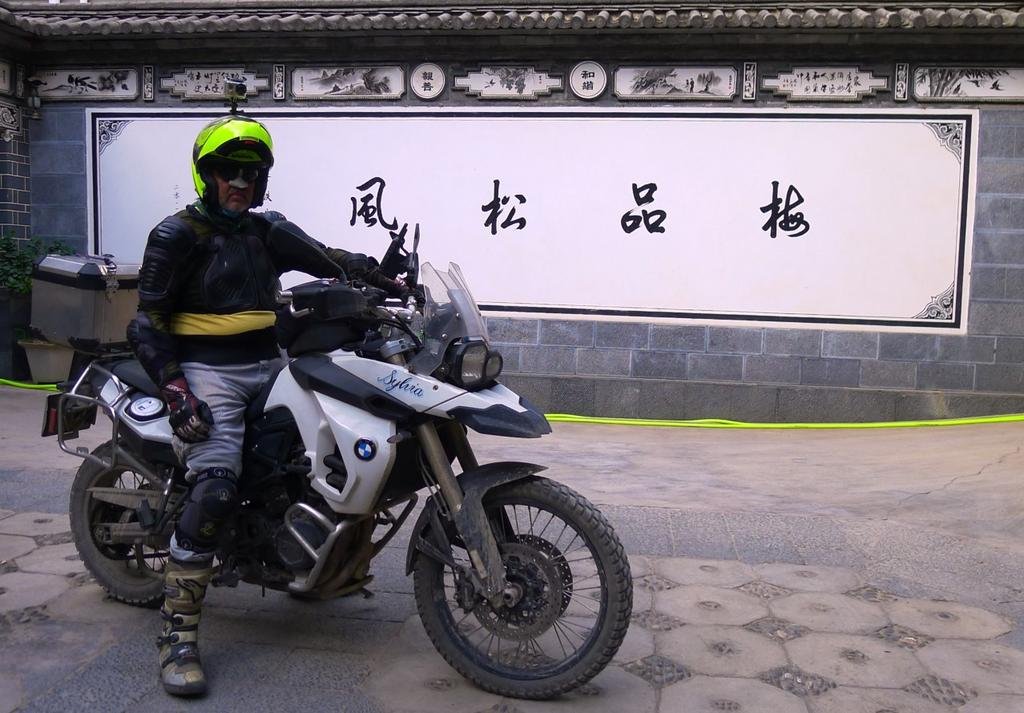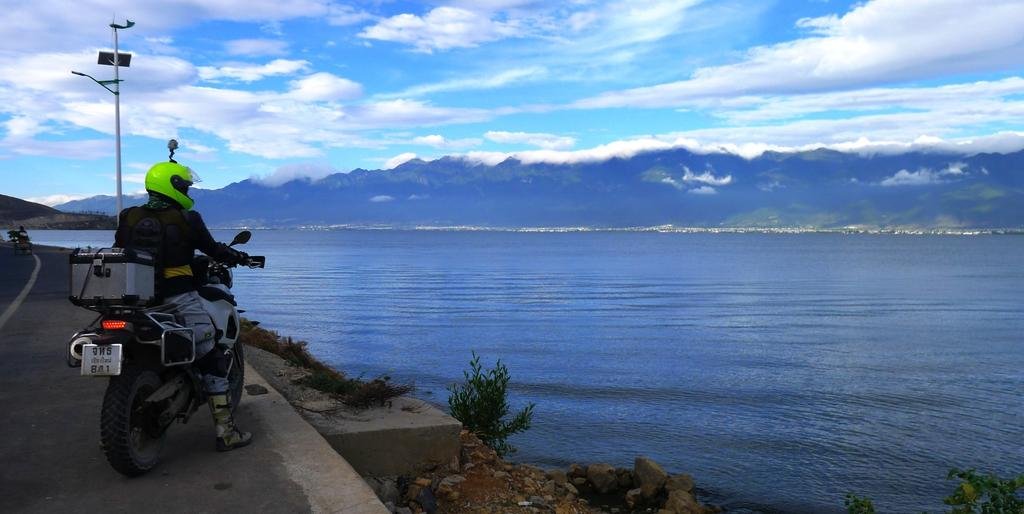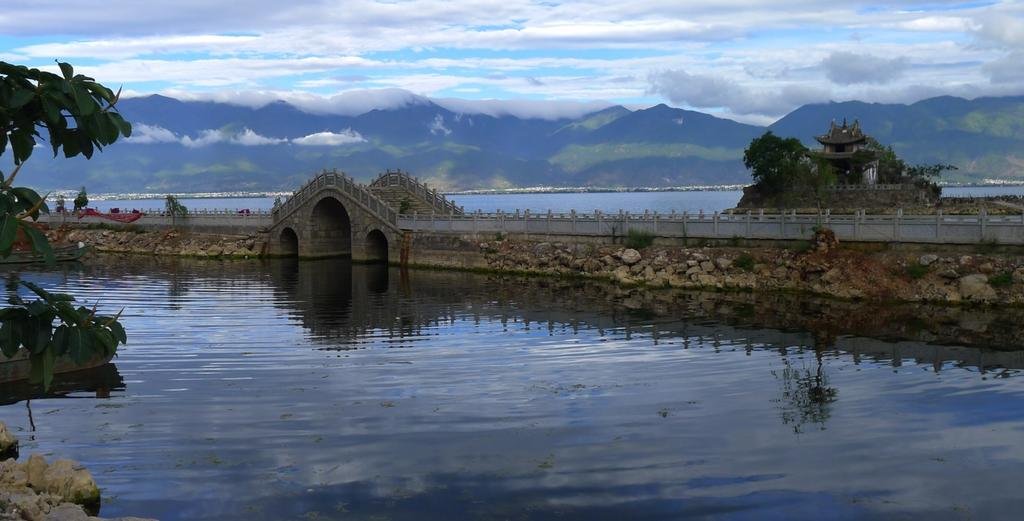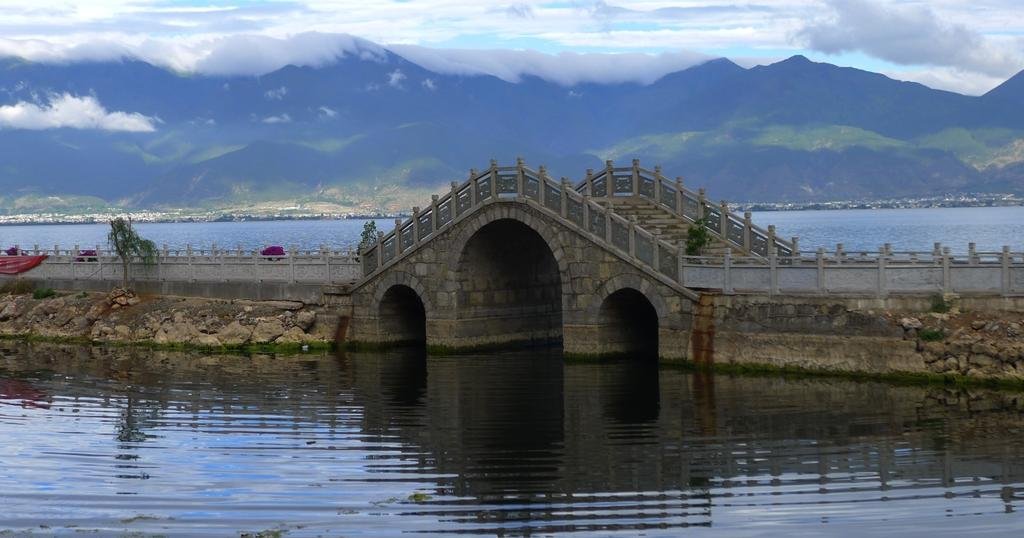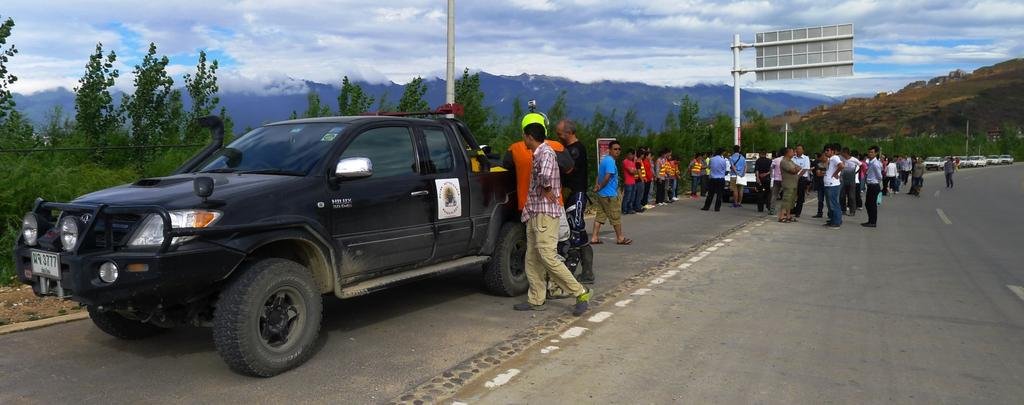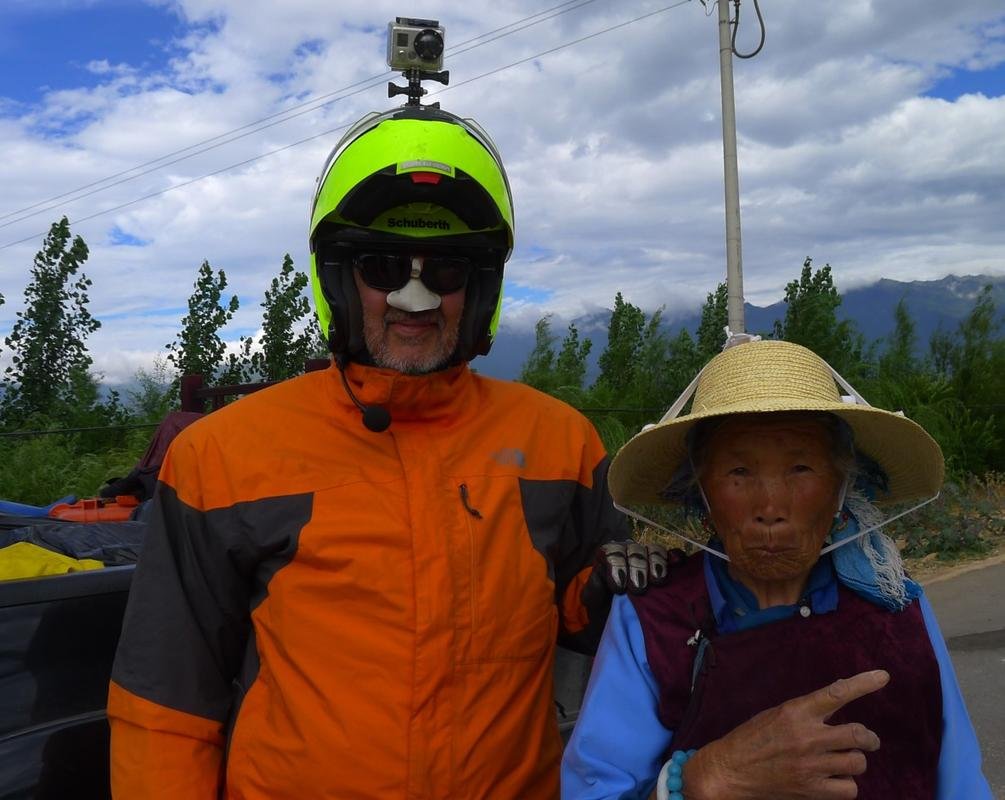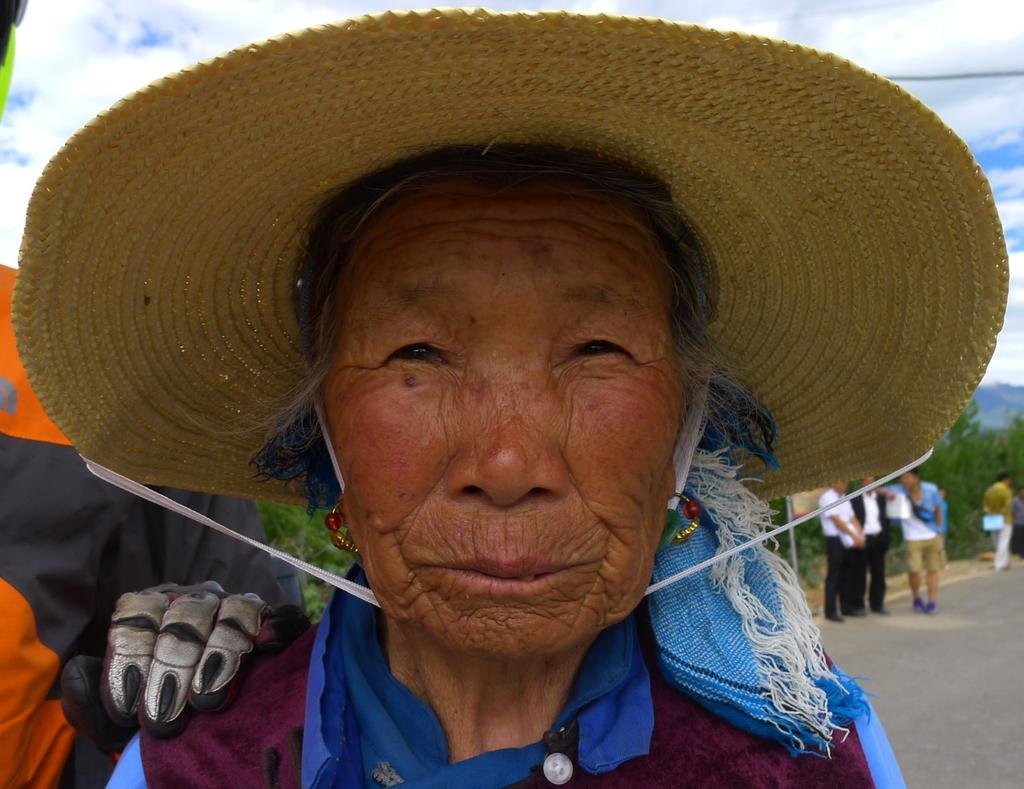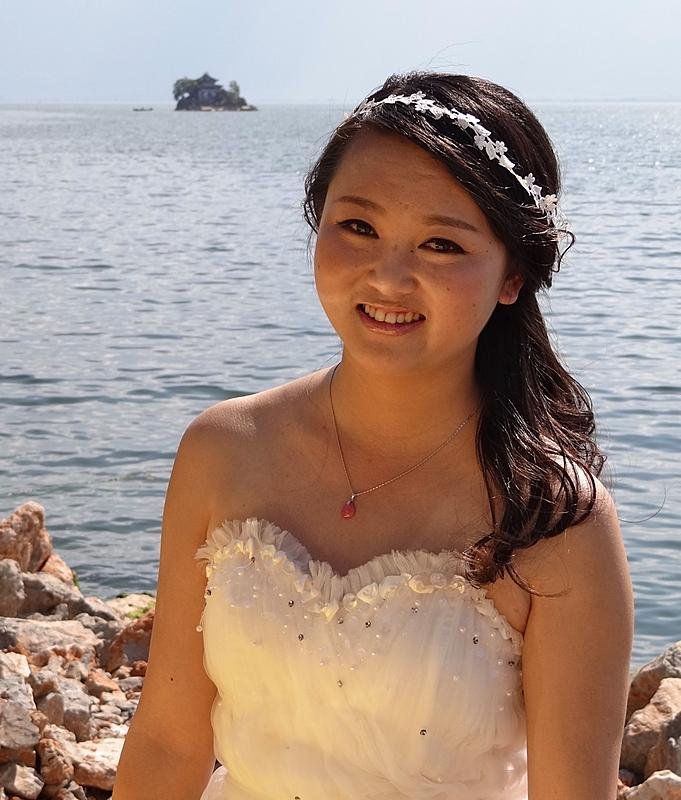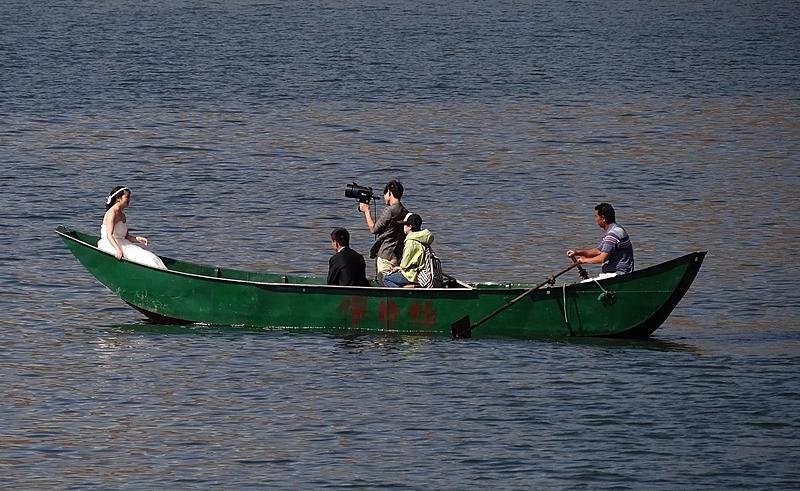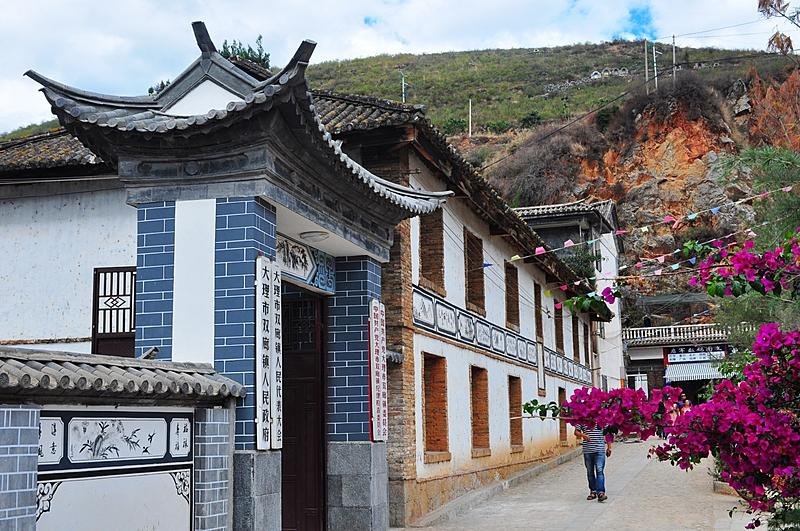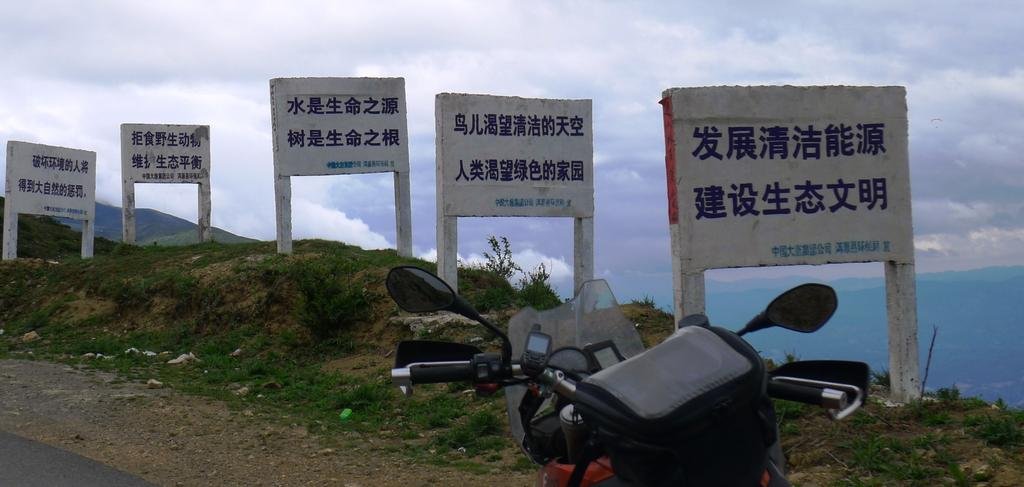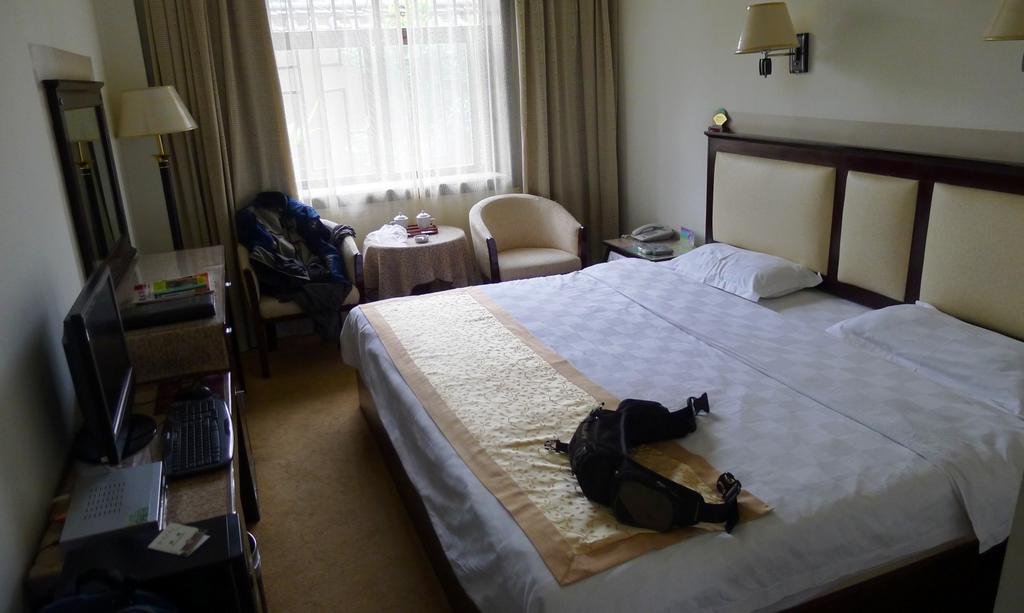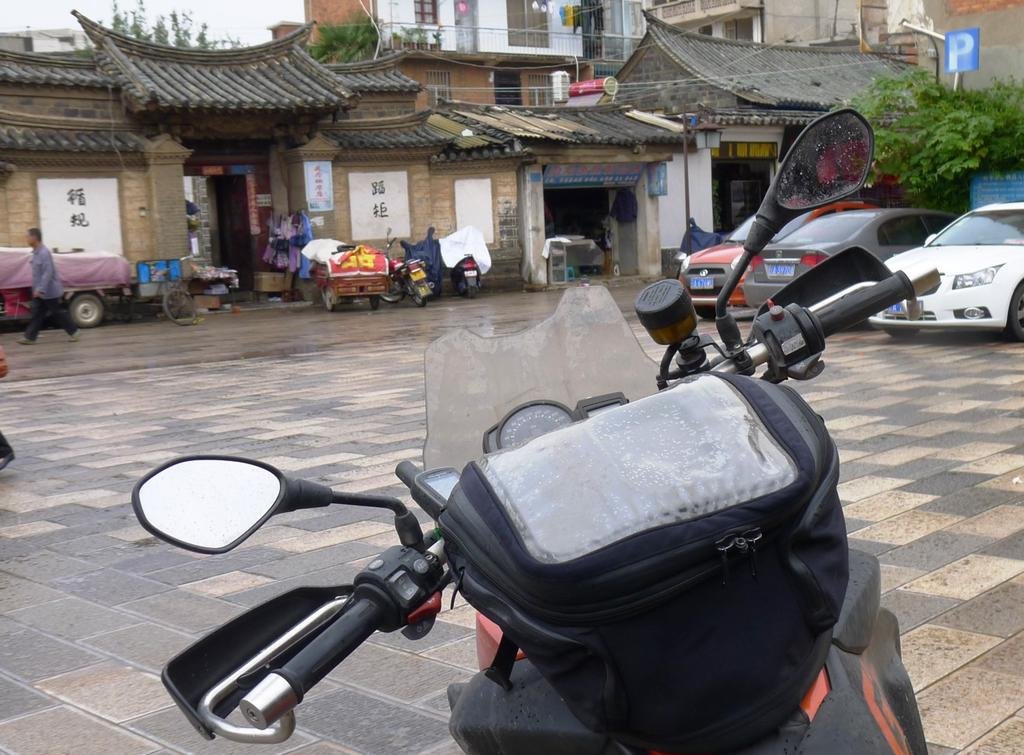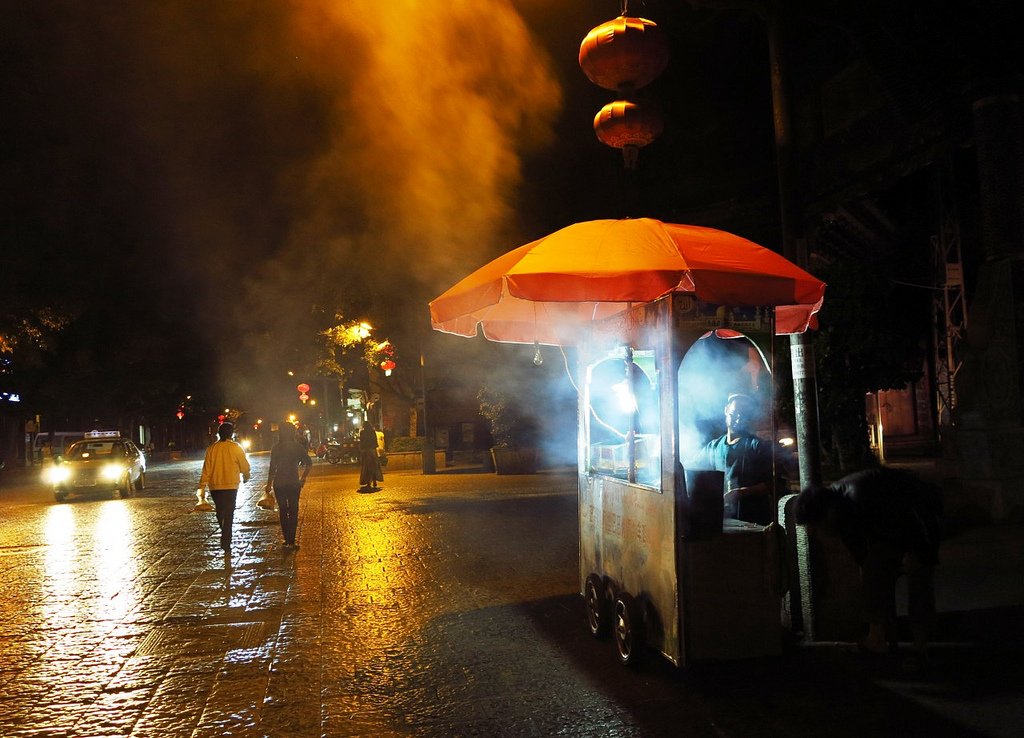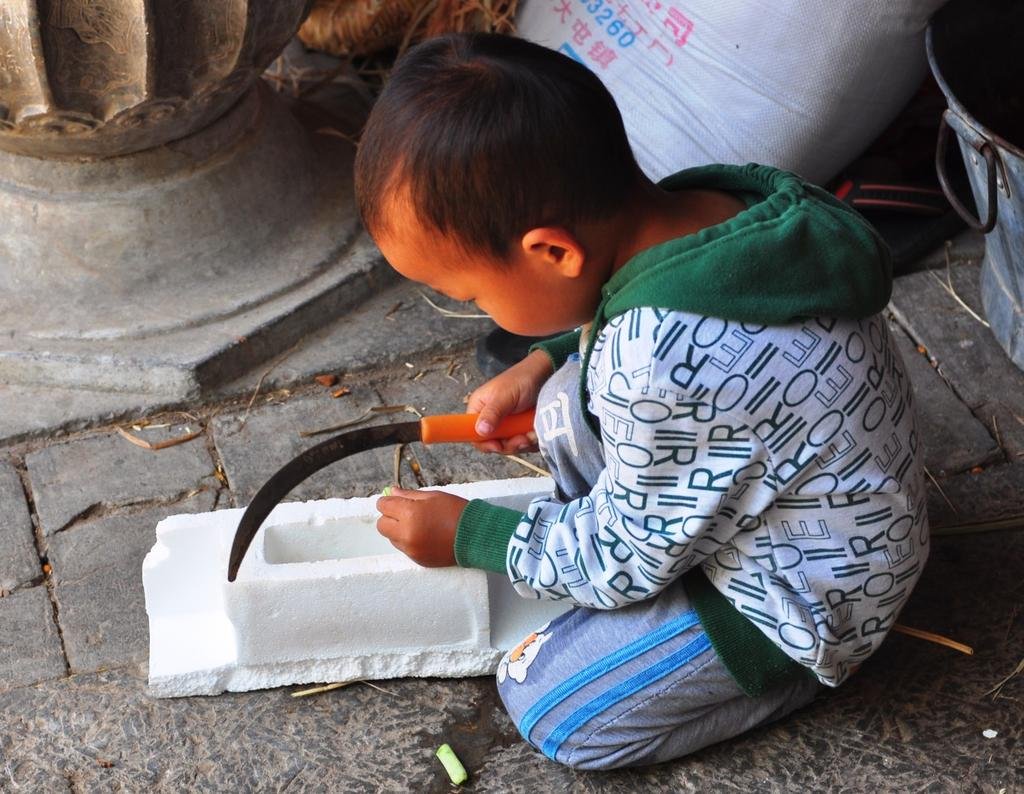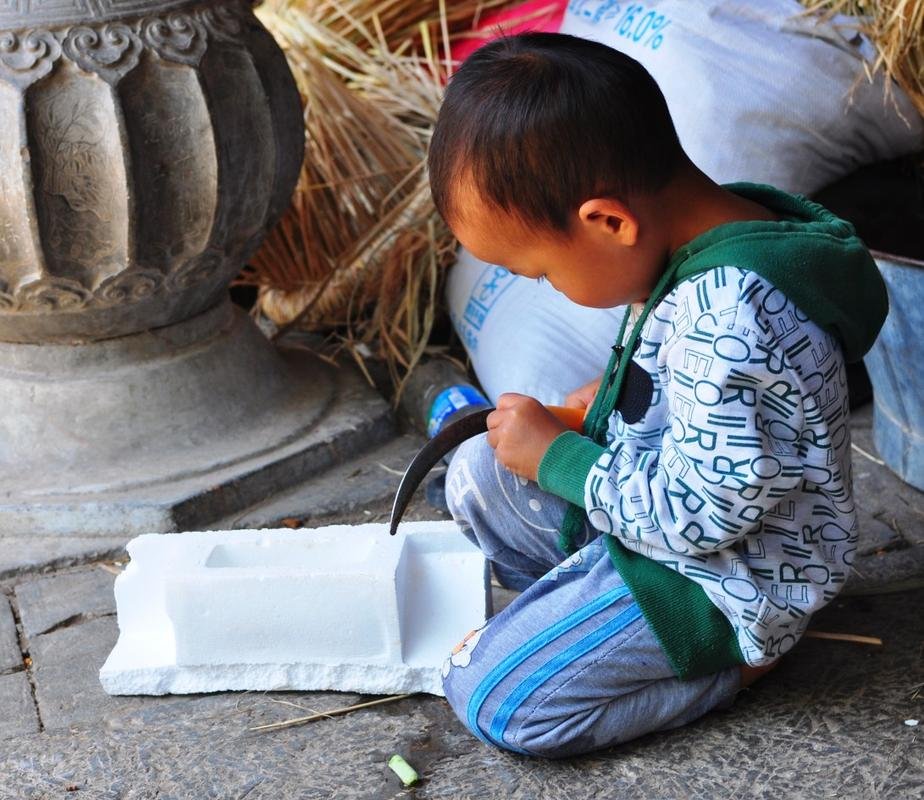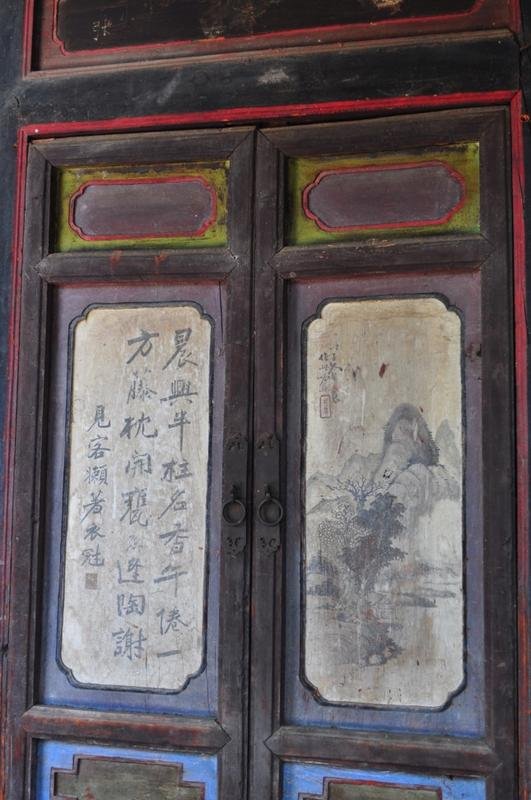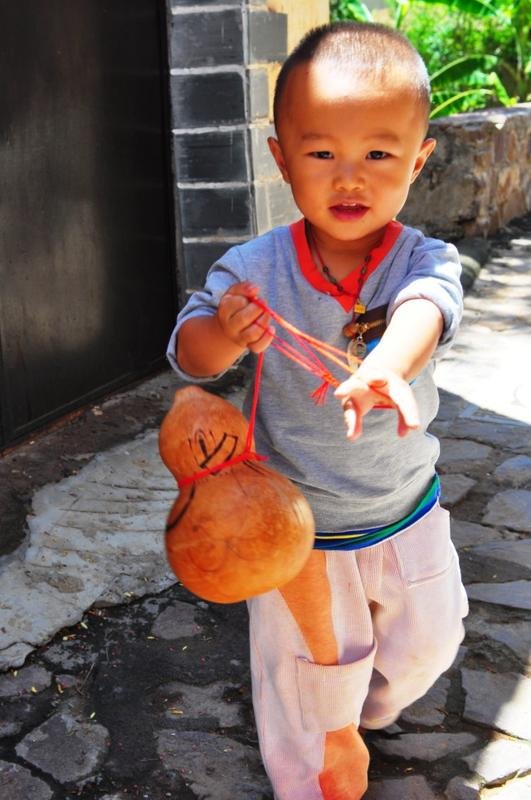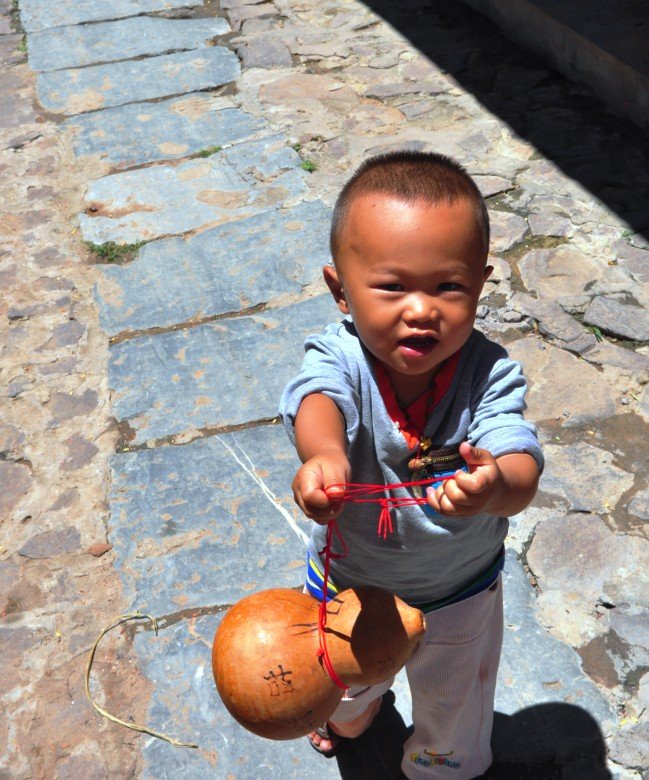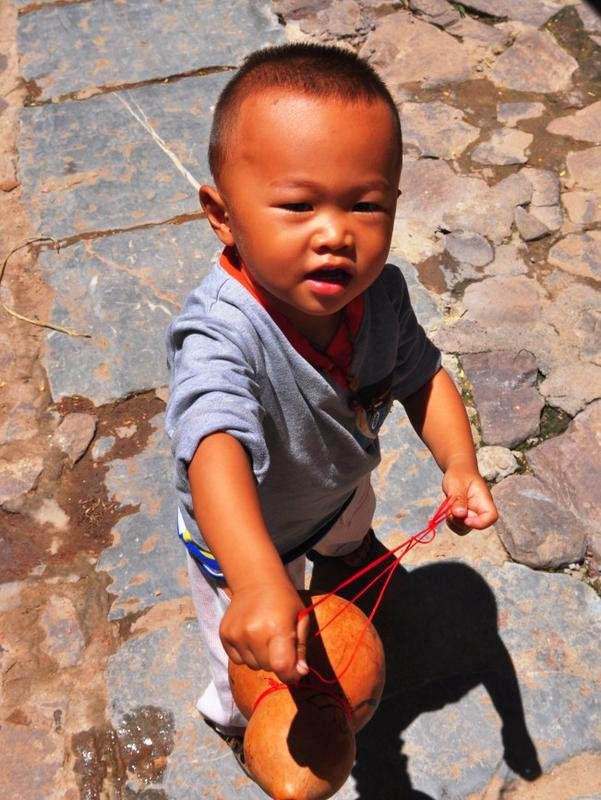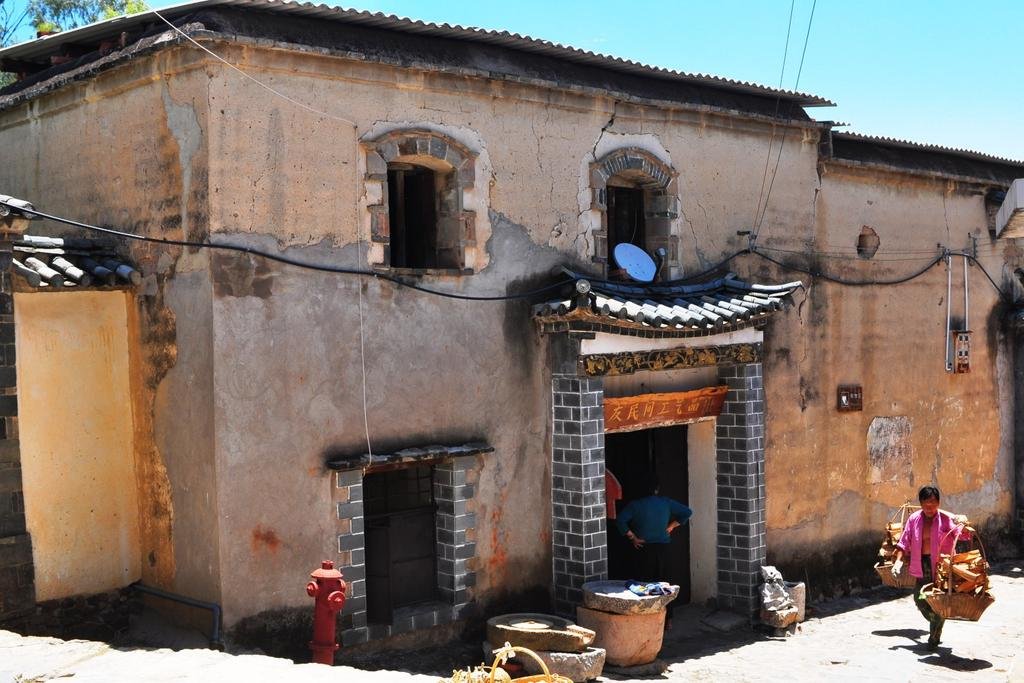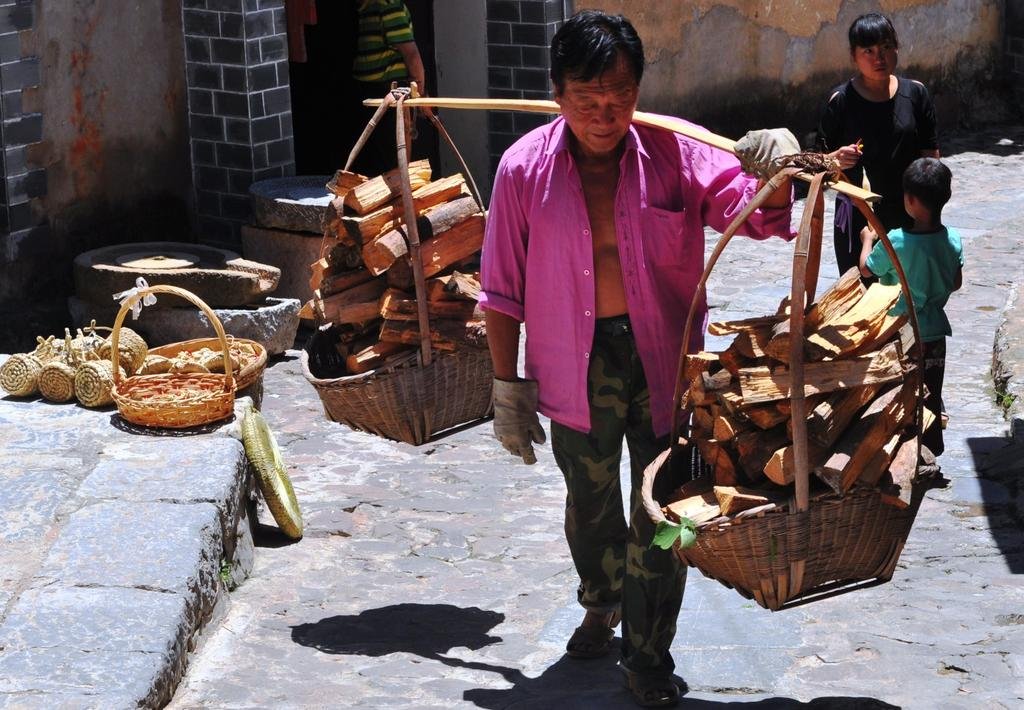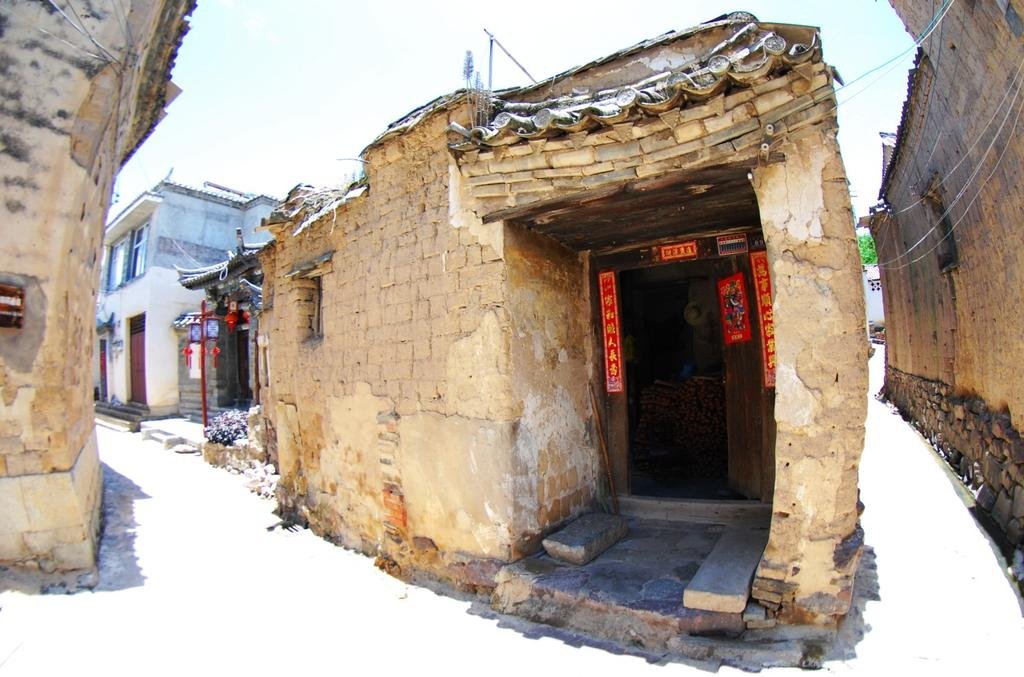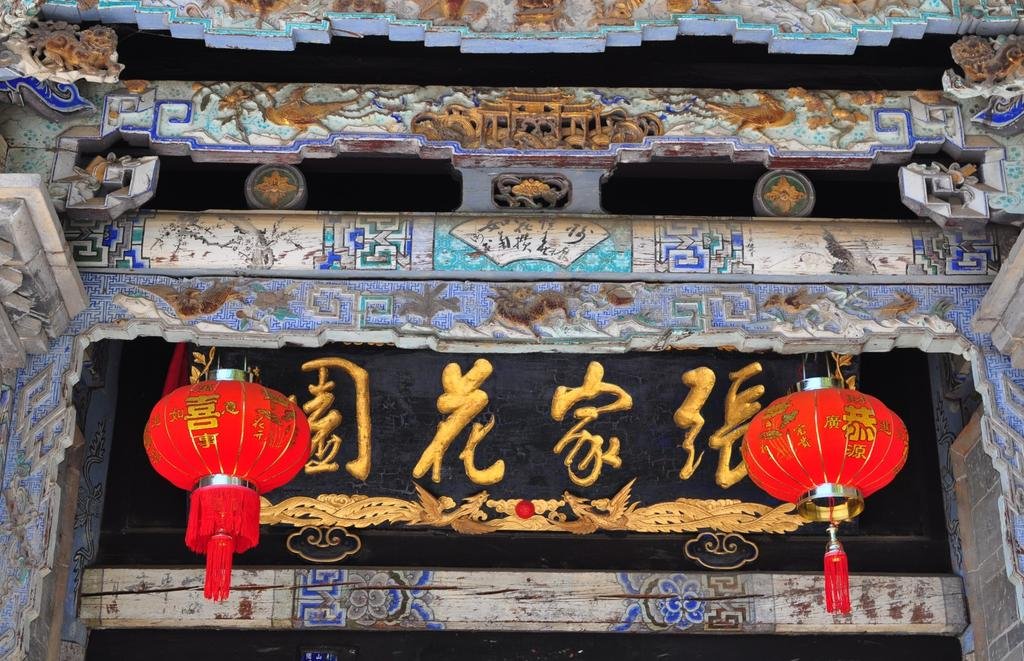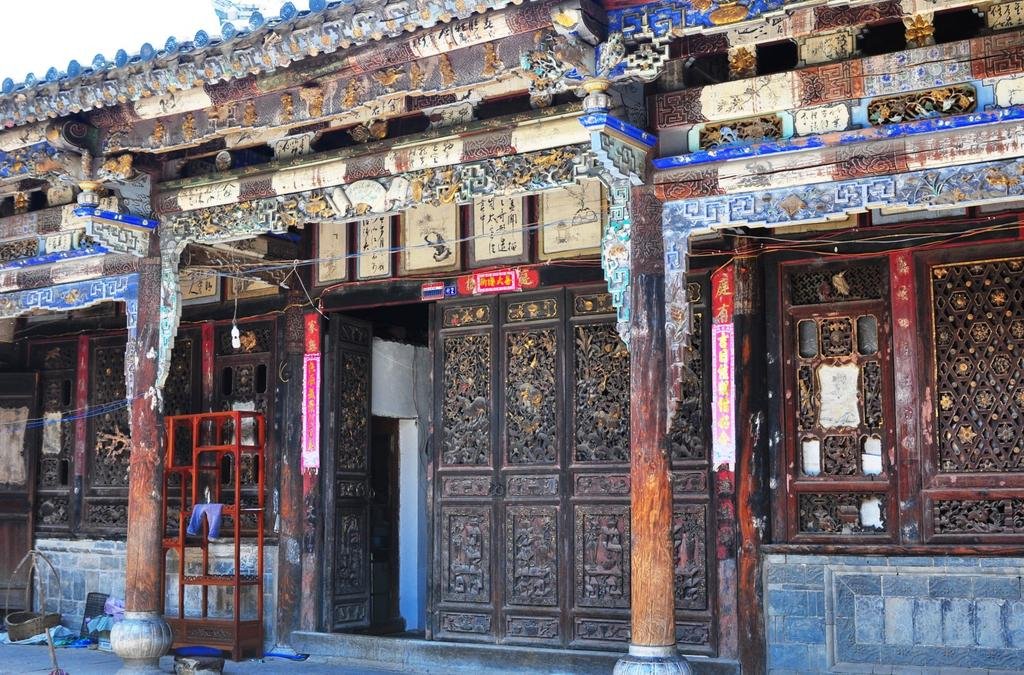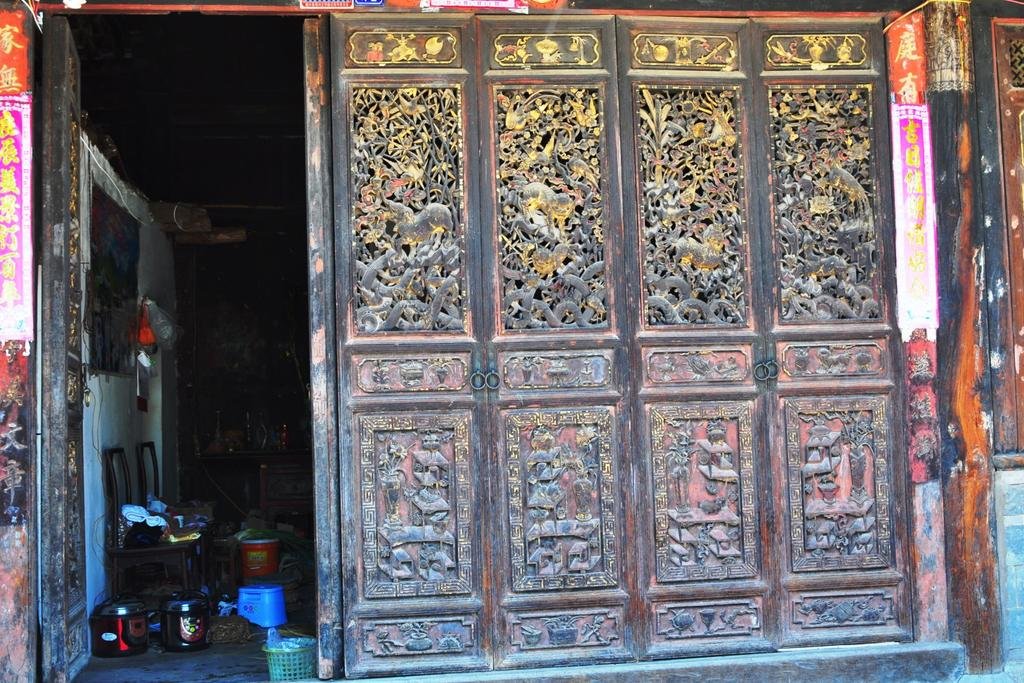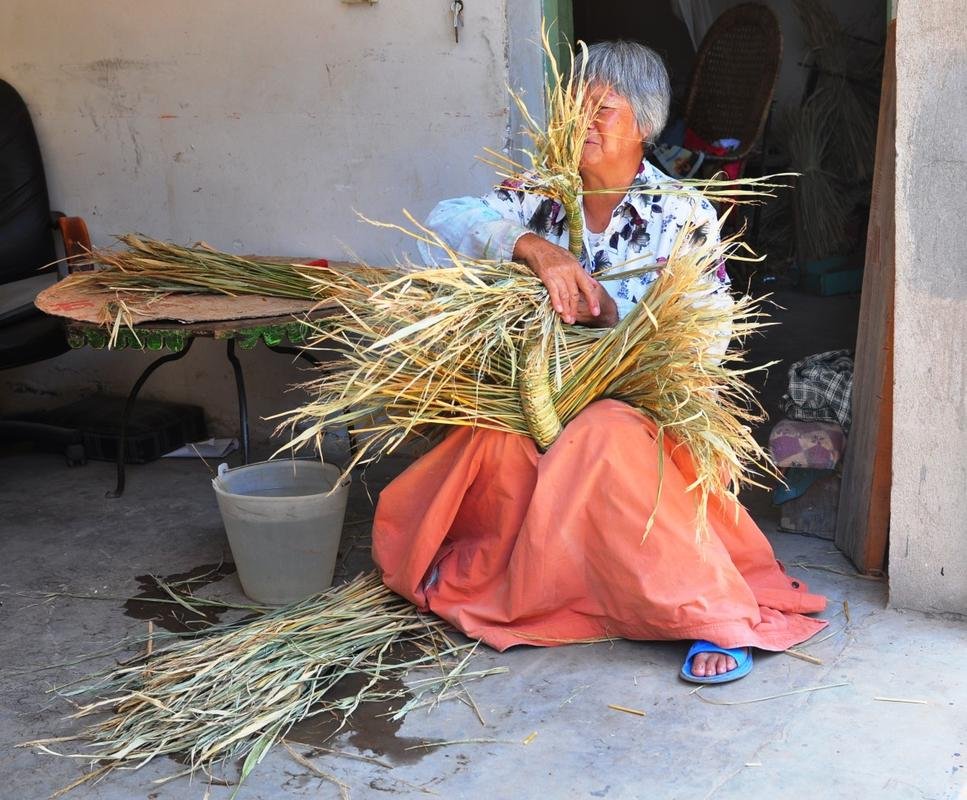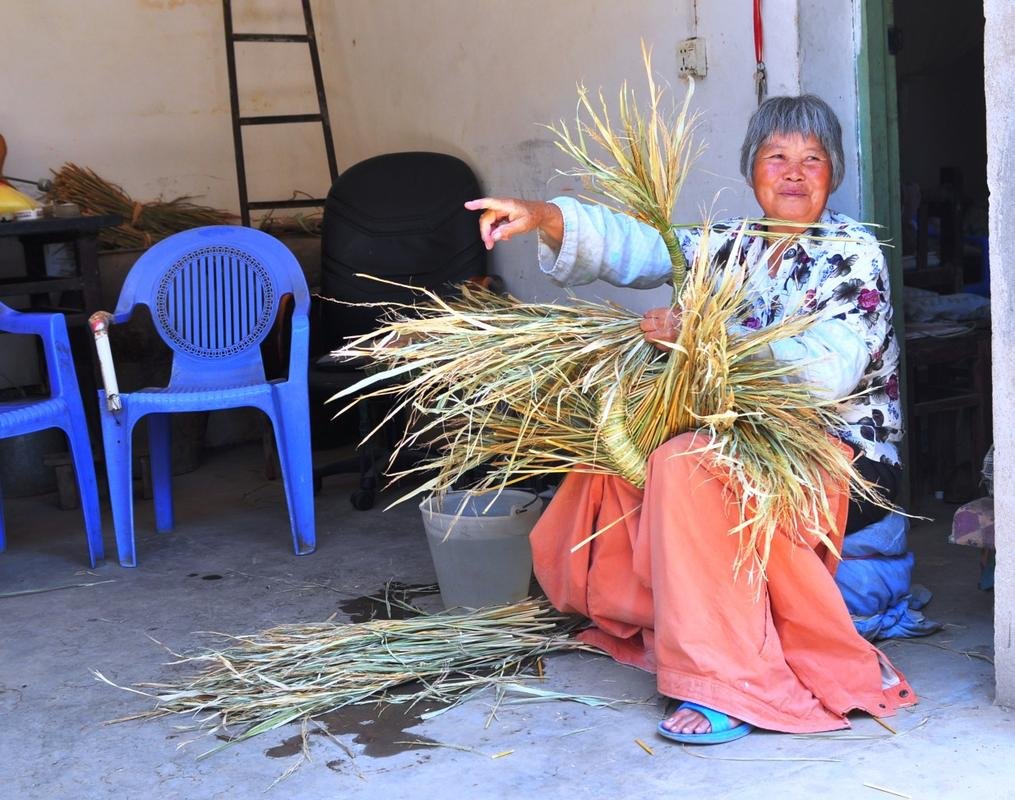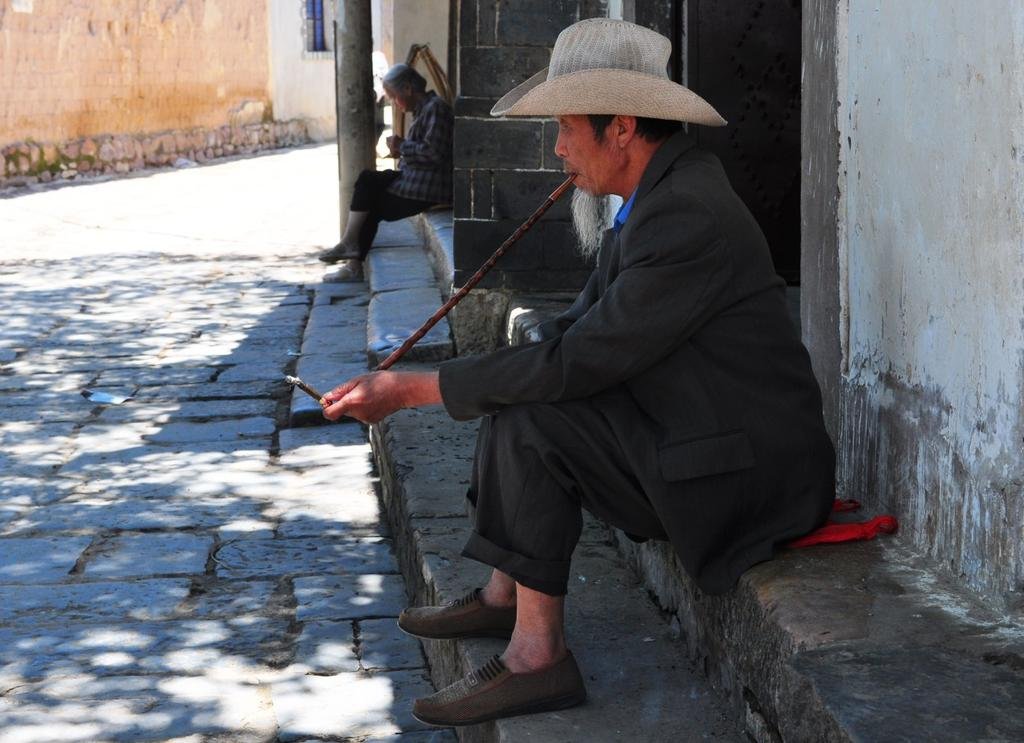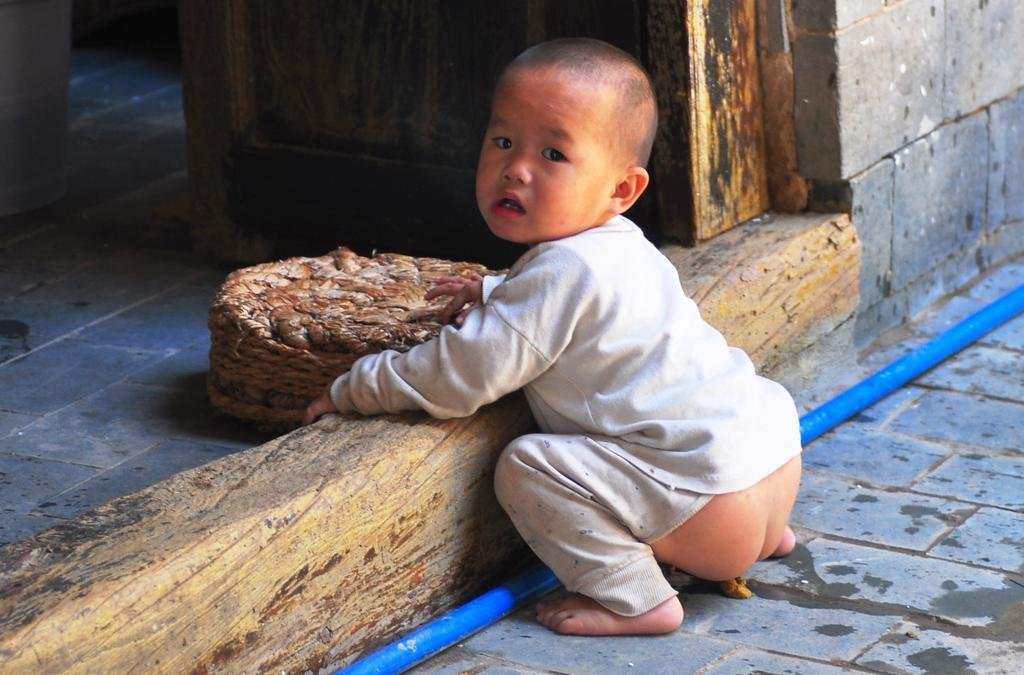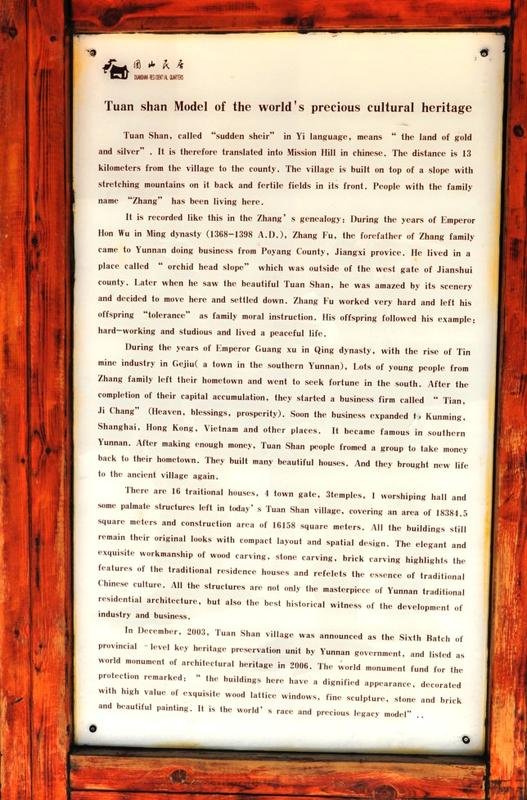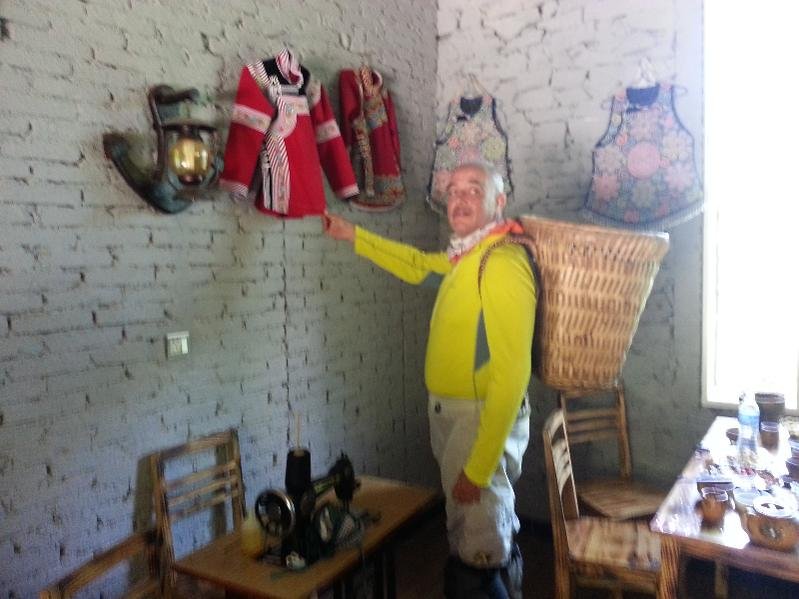You are using an out of date browser. It may not display this or other websites correctly.
You should upgrade or use an alternative browser.
You should upgrade or use an alternative browser.
Recky tour - Chiang Mai to the Tibet border / Kawa Karpo at 6,740 meters (22,113')
- Thread starter KTMphil
- Start date
KTMphil
Senior member
KTMphil
Senior member
Onto the toll road/ motorway & its a 300km / 120km/h blast SE to Kunming. Trucks refilling their water tanks that drizzle water onto the break calipers to keep the brake fluid from boiling.
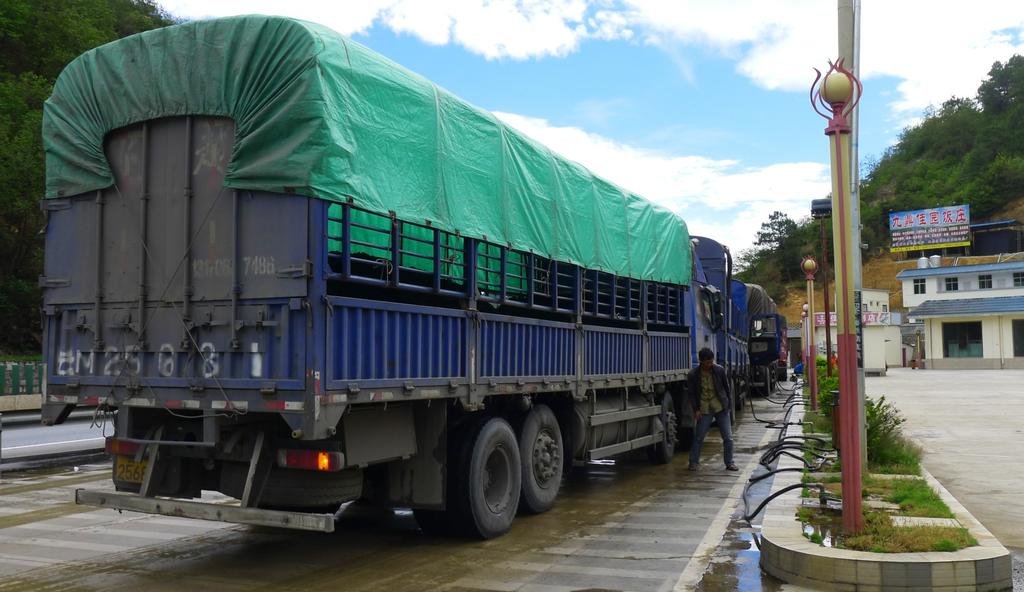
Felt pretty sorry for these guys
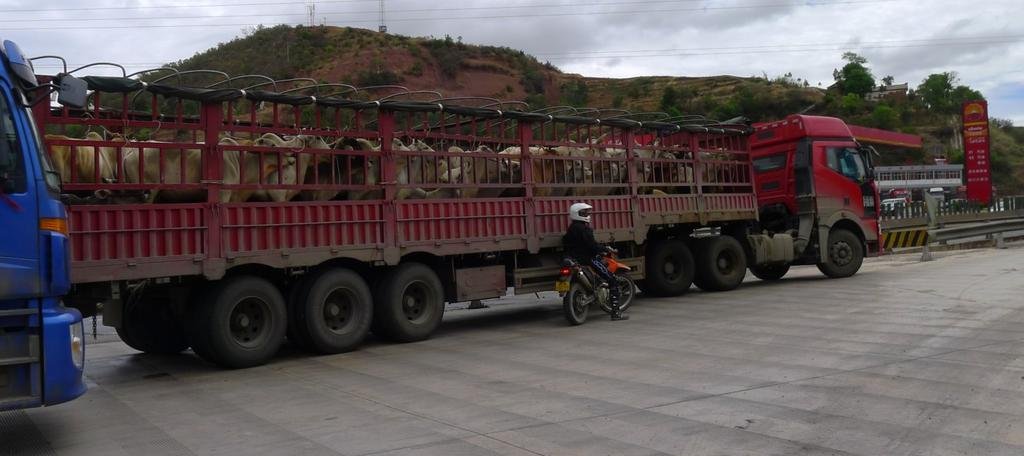
If you take AH 14/ Toll road south from Dali, It's advisable to exit at the Anning exit which is about 30km before Kunming. The reason is if you stay on the toll road all the way to Kunming, the tollway exit dumps you on the elevated roadway and motorcycles are 100% not allowed on the elevated sections - exit at Anning for Kunming'
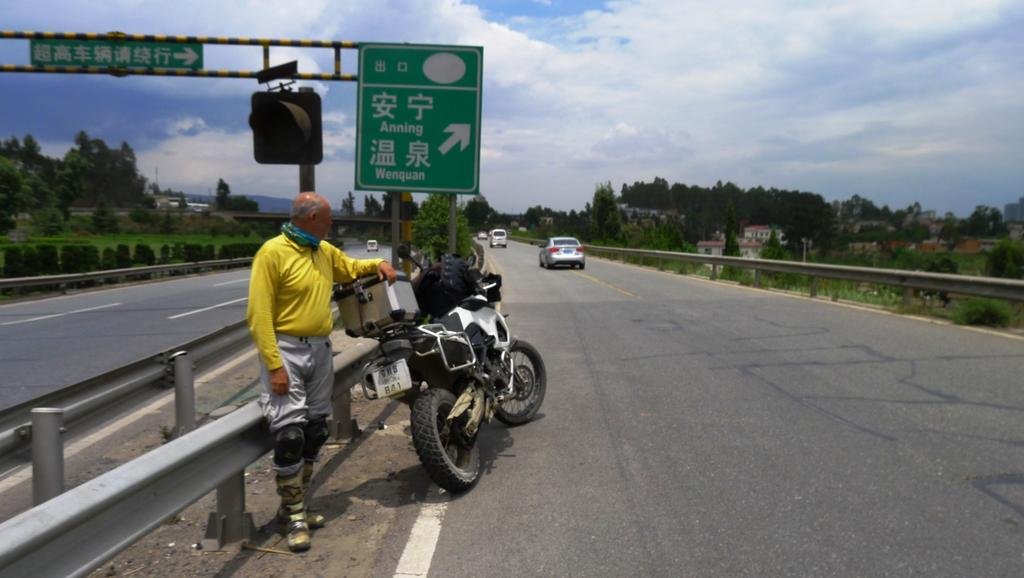
Trying to make sure George doesn't miss the Anning exit, not exactly the safest place to mark a turn in China
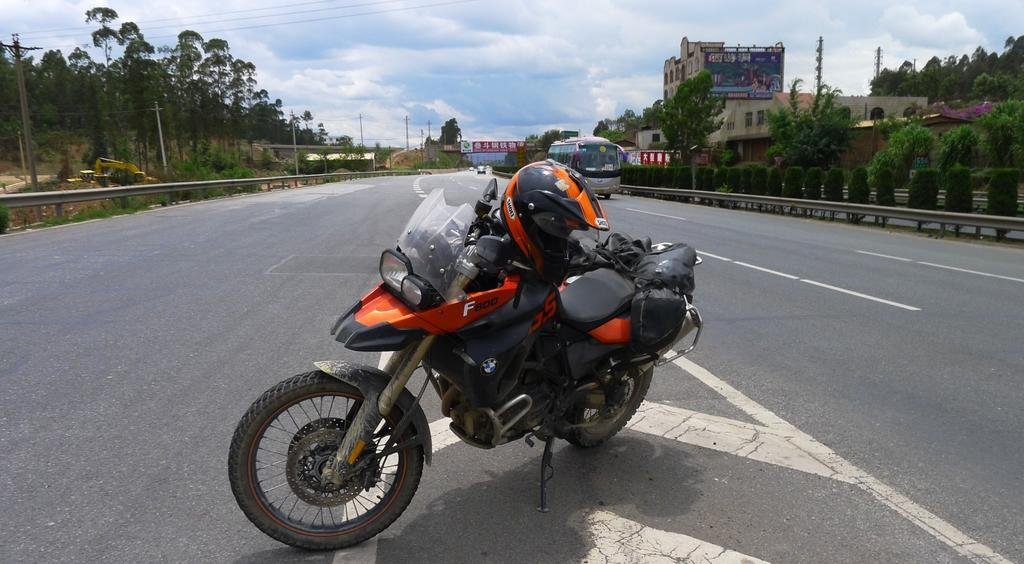

Felt pretty sorry for these guys

If you take AH 14/ Toll road south from Dali, It's advisable to exit at the Anning exit which is about 30km before Kunming. The reason is if you stay on the toll road all the way to Kunming, the tollway exit dumps you on the elevated roadway and motorcycles are 100% not allowed on the elevated sections - exit at Anning for Kunming'

Trying to make sure George doesn't miss the Anning exit, not exactly the safest place to mark a turn in China

KTMphil
Senior member
Off the tollway, lots of shouting from angry police by the toll booths, one tried to get Reed with the barrier!
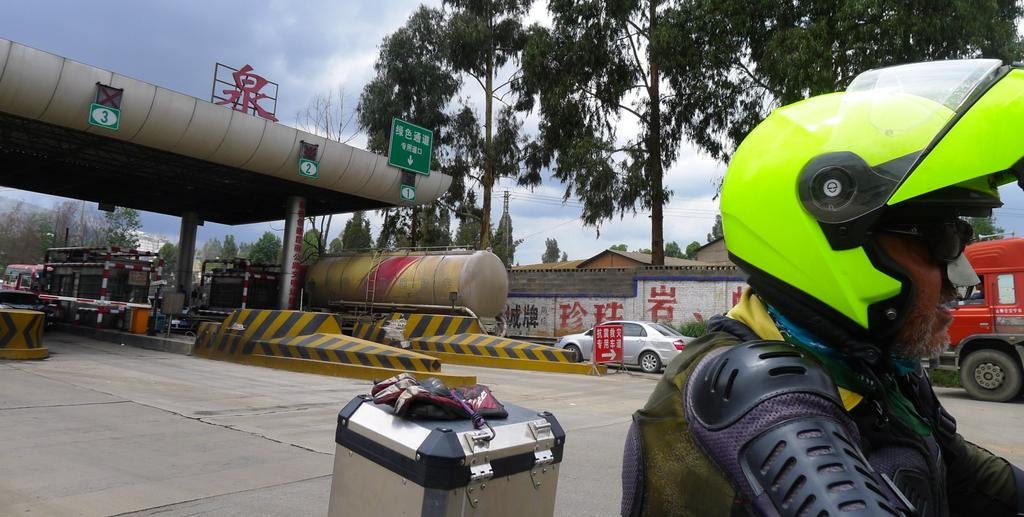
You have to make the decision when leaving Dali for Kunming, 1 or 2 days. 1 day and a 360km ride, with 300km of fast toll roads or 2 days on the old local road passing through many interesting villages, the choice is yours.
Back in Kunming in a classy hotel in the center of town
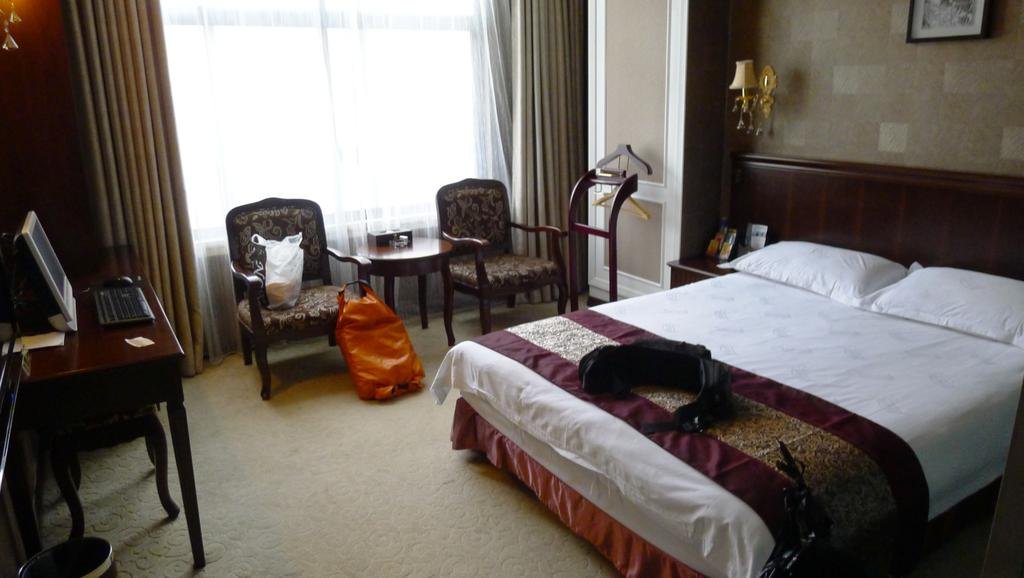
From Reeds blog re McDonalds - "For those of you who hate McDonalds, as I do, here is a sure-fire way to change your opinion: eat fourteen straight days of Chinese food. For the three of us, our McDonald meal was like manna from heaven. I ordered their Surf & Turf; A Filet Of Fish sandwich and a Big Mac with fries and ice cream for desert. I never thought I would say this in my life, but I relished every bite".
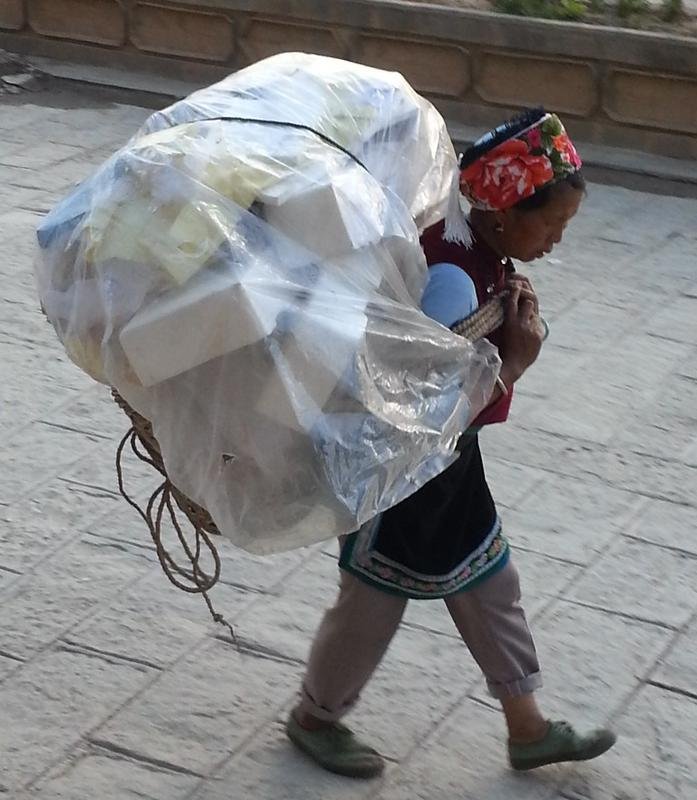
Tomorrow we head south, more to come......

You have to make the decision when leaving Dali for Kunming, 1 or 2 days. 1 day and a 360km ride, with 300km of fast toll roads or 2 days on the old local road passing through many interesting villages, the choice is yours.
Back in Kunming in a classy hotel in the center of town

From Reeds blog re McDonalds - "For those of you who hate McDonalds, as I do, here is a sure-fire way to change your opinion: eat fourteen straight days of Chinese food. For the three of us, our McDonald meal was like manna from heaven. I ordered their Surf & Turf; A Filet Of Fish sandwich and a Big Mac with fries and ice cream for desert. I never thought I would say this in my life, but I relished every bite".

Tomorrow we head south, more to come......
2wheels
Community Manager
2wheels
Community Manager
MastaMax
Senior Member
- Joined
- Apr 28, 2011
- Bikes
- 19 ktm 300tpi 6 days / 15 Yamaha YZ250F / 08 Husky 450SMR / 13 ER6N / 13 KTM 300XCW(sold)
Amazing adventure Phil, that region near the Tibetan border looks really authentic!
Asked my chinese co-worker what it meant:
from left to right
1. who destroyed the natural environment that will be punished by mother nature
2. don't eat the wild animal, keep the natural balance.
3. water is source of life, trees are root of life.
4. birds wish a clear sky, humanity wants a green home.
5. develop the clear energy, build an ecological civilization
Yeh right....
Also about the excrement recycling: Don't know about the rest of the world but in Switzerland cow excrement is used as fertilizer on the fields. There were polemics about a law forbidding farmers to spread it before the rain as it would go in the ground and end up contaminating local lakes and water sources or something like that...
Asked my chinese co-worker what it meant:
from left to right
1. who destroyed the natural environment that will be punished by mother nature
2. don't eat the wild animal, keep the natural balance.
3. water is source of life, trees are root of life.
4. birds wish a clear sky, humanity wants a green home.
5. develop the clear energy, build an ecological civilization
Yeh right....
Also about the excrement recycling: Don't know about the rest of the world but in Switzerland cow excrement is used as fertilizer on the fields. There were polemics about a law forbidding farmers to spread it before the rain as it would go in the ground and end up contaminating local lakes and water sources or something like that...
- Joined
- Aug 15, 2012
- Bikes
- KTM 613 EXC, BMW R90S & Dakar, MZ250, Norton 16H, Honda - 500 Fs & Xs, DRZs, XLs XRs CRFs CT110s etc
Amazing adventure Phil, that region near the Tibetan border looks really authentic!
Asked my chinese co-worker what it meant:
from left to right
1. who destroyed the natural environment that will be punished by mother nature
2. don't eat the wild animal, keep the natural balance.
3. water is source of life, trees are root of life.
4. birds wish a clear sky, humanity wants a green home.
5. develop the clear energy, build an ecological civilization
Yeh right....
Also about the excrement recycling: Don't know about the rest of the world but in Switzerland cow excrement is used as fertilizer on the fields. There were polemics about a law forbidding farmers to spread it before the rain as it would go in the ground and end up contaminating local lakes and water sources or something like that...
In Australia, we've got a law of nature.... the cows spread their own fertilizer
2wheels
Community Manager
Thanks Max.
In Australia, we've got a law of nature.... the cows spread their own fertilizer
As do most of us when we're telling a story...
- Joined
- Aug 15, 2012
- Bikes
- KTM 613 EXC, BMW R90S & Dakar, MZ250, Norton 16H, Honda - 500 Fs & Xs, DRZs, XLs XRs CRFs CT110s etc
KTMphil
Senior member
Thanks for getting that translated Max
Amazing adventure Phil, that region near the Tibetan border looks really authentic!
Asked my chinese co-worker what it meant:
from left to right
1. who destroyed the natural environment that will be punished by mother nature
2. don't eat the wild animal, keep the natural balance.
3. water is source of life, trees are root of life.
4. birds wish a clear sky, humanity wants a green home.
5. develop the clear energy, build an ecological civilization
Yeh right....
Also about the excrement recycling: Don't know about the rest of the world but in Switzerland cow excrement is used as fertilizer on the fields. There were polemics about a law forbidding farmers to spread it before the rain as it would go in the ground and end up contaminating local lakes and water sources or something like that...
KTMphil
Senior member
10th June, 2013 - Kunming to Jian Shui
The first nasty, rainy day we've had so far. Early evening yesterday, the temperature was around 24C, this morning after 0800am it was 14C and drizzle, not nice
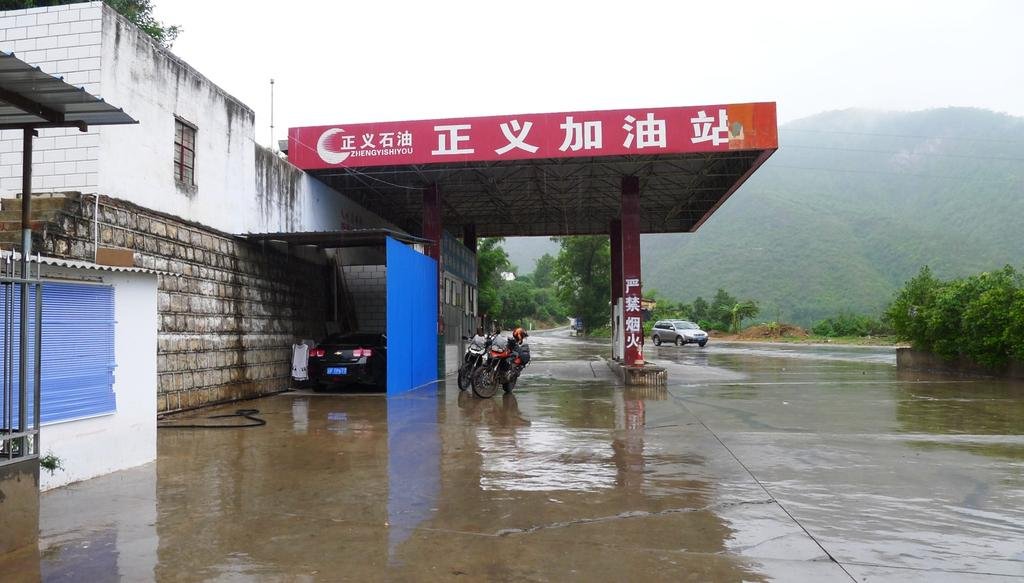
This was a real shame, Reed saw the temperature drop to 9C at one point in the mountains, as we were in the clouds we had no scenery.
About 100km south of Kunming, still drizzle and rain we stop for lunch, the duck restaurants were packed so we gave one a shot

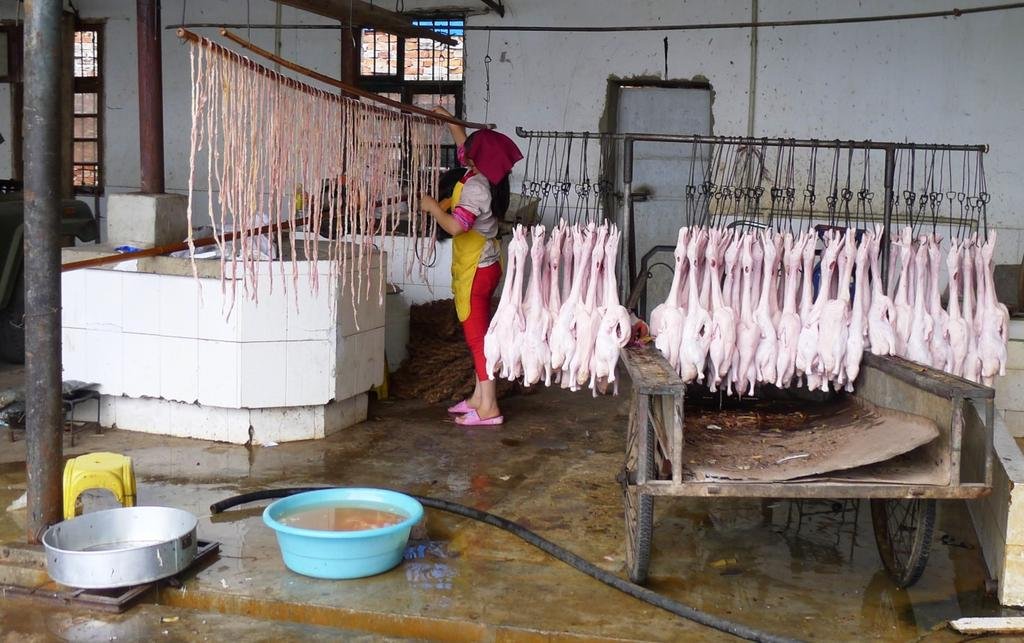
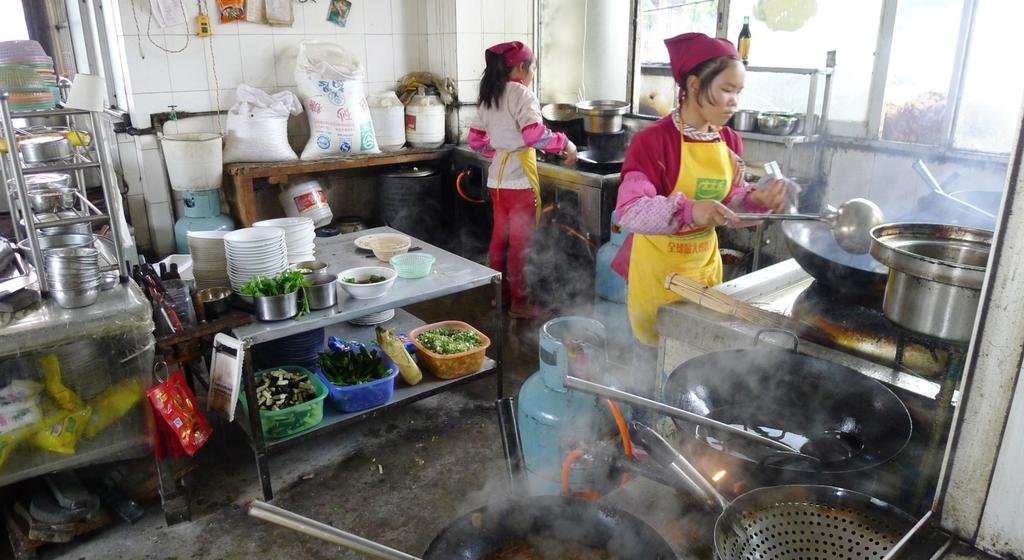
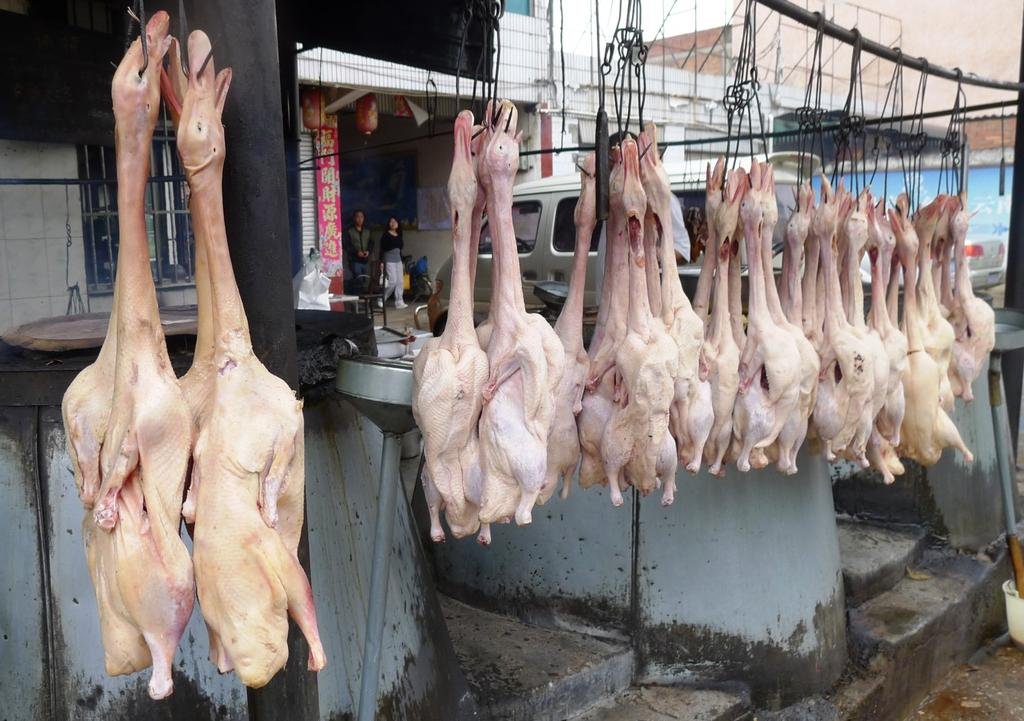
The first nasty, rainy day we've had so far. Early evening yesterday, the temperature was around 24C, this morning after 0800am it was 14C and drizzle, not nice

This was a real shame, Reed saw the temperature drop to 9C at one point in the mountains, as we were in the clouds we had no scenery.
About 100km south of Kunming, still drizzle and rain we stop for lunch, the duck restaurants were packed so we gave one a shot




KTMphil
Senior member
Arriving in Jianshui, which is a huge, historic, Chinese town
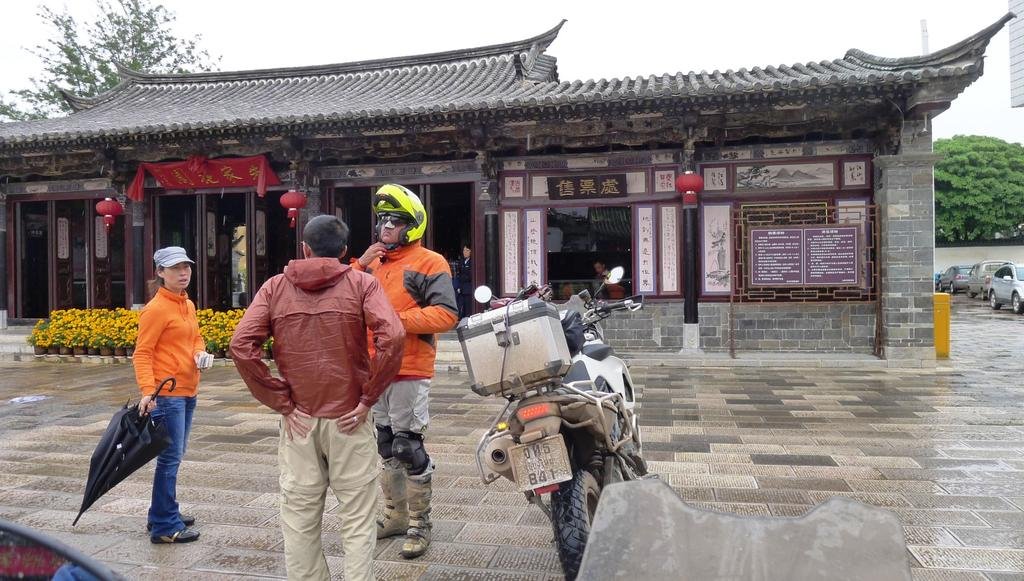
From "See Yunnan" regarding JianShui:
Jianshui-Travel Well,Travel Smart-SeeYunnan.net
Jianshui is just 136 miles southeast of Kunmíng, it is one of the earliest developed cities in south Yunnan. It is part of Honghe Prefecture and is an ancient town with historical importance as a center of trade with a history dating back over 1,200 years. It is sometimes referred to as the "the Museum of Ancient Constructions". Jianshui’s population is 474,00 and has a moderate climate through out the year. Jianshui county consists of two parts, the historic city Jianshui and the famous Swallow Cave. Jianshui still retains important architectural remnants that visitors find fascinating; including the Chaoyang Gateway Arch, the Jianshui Confucious Temple, the Zhilin Temple, Shuanglong Bridge, the Private Garden of the Zhu Family and the Ancient Nalou Building. Jianshui is still a relatively undiscovered attraction where you can stroll on old streets and see ancient homes without being overwhelmed by hordes of tourists.
Long Distance Buses
The bus station in Jianshui is located across from the Yang Yang Hotel (telephone is 0873-7653538). Buses from Kunming to Jianshui leave frequently (more than 10 per day) and cost 55 Yuan for the 3-½ hour ride. You can find buses to Shiping, Yuanyang, Swallow Cave Gejiu, and Tonghai from Jianshui.
The town itself is small enough to cover on foot. Public buses, minibuses, horse-carts and taxis are available for sightseeing or attractions outside of town. To reach places outside the city catch a bus, minibus, or taxi. If you hire a taxi, you should be able to get as far as Tuanshan for 20 Yuan.

The Ancient City
Enjoy the city’s cobbled streets, ancient architecture, 100 ancient temples and 50 ancient bridges. Stop at one of the over 100, thousand year old artesian wells. Join locals at the West Gate Well for some of the purest water in China. Visit China’s second largest Confucian temple Wen Miao, located near the north gate. The temple dates back to the Yuan Dynasty and has a history over 700 years old. It covers an area of 760,000 square feet. The central building is Xian Shi Miao (Great Master Hall), Visit the market at the 700 year-old Chaoyang Gate, built in 1389 and located in the city center.
The Private Garden Of the Zhu Family
This grand complex (over 200,000 square feet) shows the ancient architecture of the area in its perfect original form. It was built by the Zhu brothers in the late Qing Dynasty. Admission is 50 Yuan.


Zhilin Temple
Located in the western part of the city, the temple was built in 1296. It is considered the earliest Buddhist Temple in south Yunnan.

The Swallow Cave
Only 18 miles east of Jianshui, Swallow Cave is one of the biggest caves on the Asian continent. There is a dry cave, a water cave and over 7 million acres of forest. In the spring and summer, thousands of swallows migrate from Malaysia, building nests and givie birth to their baby swallows. There are tour trips departing from Jianshui daily for 8 Yuan. Admission at the cave is 30 Yuan and hours are 9:00-5:00

Shuanglong Bridge
(Seventeen Span Bridge)
Less than 2 miles west of Jianshui is the 17-Arch Bridge. The bridge arches cross Lujiang River and the Tachong Rivers. There are three story pavilions sitting in the middle and at both ends of the bridge. Built during the Ming Dynasty, it is considered one of the most beautiful ancient bridges in China.

Tuanshan Village
Just 8 miles west of Jianshui City and built in the Qing Dynasty, Tuanshan Village offers timeless art and architecture. A taxi should cost about 20 Yuan or take a minibus.
Yuanyang
Home to perhaps the most beautiful terraced rice fields in China. Built by hand by the Hani people over 1,000 years ago. The paddies are flooded from December to April which creates a reflecting pool effect that draws photographers from around the world. They are particularly spectacular at sunrise and sunset. Occasionally patience is necessary in order to out wait the shrouds of fog. Popular rice terraces to visit include the Bada, Laohuzui and Duoyicun rice fields. In summer, the paddies are green with growing rice plants. After the fall harvest, the paddies become bare earth. The scenery on the drive from Jianshui to Yuanyang is also beautiful. If you want to go directly to Yuanyang there are 3 direct buses from Kunming’s Nanyao Bus Station to Yuanyang Xinjiezhen everyday. The Express departs at 10:40am and takes 6-7hours. For those overnighting there is the Yunti Hotel in the Old Town portion of Yuanyang.

Niujiaozhai
If your seeking something truly off the beaten path you may want to visit Niujiaozhai about a 45 minute car ride from Yuanyang. The ride takes you past beautiful rice fields, including Laohuzui and then up a small country road that cuts through several smaller villages before reaching Niujiaozhai. Niujiaozhai has a wonderful market every Tiger, Horse and Dog day of the Chinese calendar. There is much to see of the Yi and Hani local foods, clothing and way of life.
Samaba (in Baohua)
Said to be even more beautiful than Yuányáng you will find an almost total absence of tourists. If you care to take a bus direct from Kunming, head to Shiphing (4 1/2 hours) and change buses for Baohua (2 ½ hours). Baohua has some simple guesthouses, the best one is Samaba Zhaodaisuo.
Jianshui has a good selection of hotels by the bus station west of the old city gate. The Zhu Family Garden Hotel is one of the more desirable places to stay, though occasionally it receives a negative review. It is a former Qin Dynasty estate set inside beautiful gardens with an exquisite atmosphere. The Jinniu Kezhan near the Chaoyang Gateway Arch is a nice budget hostel, double rooms with attached bath cost only 40 Yuan though rates may double during holiday periods.
Barbecue dishes are popular in Jianshui and with a substantial Muslim population you can find a nice variety of Muslim noodle dishes, breads and sweets.
If you are shopping in Jianshui you will find a good selection of local handicrafts as well as their exceptional pottery.

From "See Yunnan" regarding JianShui:
Jianshui-Travel Well,Travel Smart-SeeYunnan.net
Jianshui is just 136 miles southeast of Kunmíng, it is one of the earliest developed cities in south Yunnan. It is part of Honghe Prefecture and is an ancient town with historical importance as a center of trade with a history dating back over 1,200 years. It is sometimes referred to as the "the Museum of Ancient Constructions". Jianshui’s population is 474,00 and has a moderate climate through out the year. Jianshui county consists of two parts, the historic city Jianshui and the famous Swallow Cave. Jianshui still retains important architectural remnants that visitors find fascinating; including the Chaoyang Gateway Arch, the Jianshui Confucious Temple, the Zhilin Temple, Shuanglong Bridge, the Private Garden of the Zhu Family and the Ancient Nalou Building. Jianshui is still a relatively undiscovered attraction where you can stroll on old streets and see ancient homes without being overwhelmed by hordes of tourists.
Long Distance Buses
The bus station in Jianshui is located across from the Yang Yang Hotel (telephone is 0873-7653538). Buses from Kunming to Jianshui leave frequently (more than 10 per day) and cost 55 Yuan for the 3-½ hour ride. You can find buses to Shiping, Yuanyang, Swallow Cave Gejiu, and Tonghai from Jianshui.
The town itself is small enough to cover on foot. Public buses, minibuses, horse-carts and taxis are available for sightseeing or attractions outside of town. To reach places outside the city catch a bus, minibus, or taxi. If you hire a taxi, you should be able to get as far as Tuanshan for 20 Yuan.

The Ancient City
Enjoy the city’s cobbled streets, ancient architecture, 100 ancient temples and 50 ancient bridges. Stop at one of the over 100, thousand year old artesian wells. Join locals at the West Gate Well for some of the purest water in China. Visit China’s second largest Confucian temple Wen Miao, located near the north gate. The temple dates back to the Yuan Dynasty and has a history over 700 years old. It covers an area of 760,000 square feet. The central building is Xian Shi Miao (Great Master Hall), Visit the market at the 700 year-old Chaoyang Gate, built in 1389 and located in the city center.
The Private Garden Of the Zhu Family
This grand complex (over 200,000 square feet) shows the ancient architecture of the area in its perfect original form. It was built by the Zhu brothers in the late Qing Dynasty. Admission is 50 Yuan.


Zhilin Temple
Located in the western part of the city, the temple was built in 1296. It is considered the earliest Buddhist Temple in south Yunnan.

The Swallow Cave
Only 18 miles east of Jianshui, Swallow Cave is one of the biggest caves on the Asian continent. There is a dry cave, a water cave and over 7 million acres of forest. In the spring and summer, thousands of swallows migrate from Malaysia, building nests and givie birth to their baby swallows. There are tour trips departing from Jianshui daily for 8 Yuan. Admission at the cave is 30 Yuan and hours are 9:00-5:00

Shuanglong Bridge
(Seventeen Span Bridge)
Less than 2 miles west of Jianshui is the 17-Arch Bridge. The bridge arches cross Lujiang River and the Tachong Rivers. There are three story pavilions sitting in the middle and at both ends of the bridge. Built during the Ming Dynasty, it is considered one of the most beautiful ancient bridges in China.

Tuanshan Village
Just 8 miles west of Jianshui City and built in the Qing Dynasty, Tuanshan Village offers timeless art and architecture. A taxi should cost about 20 Yuan or take a minibus.
Yuanyang
Home to perhaps the most beautiful terraced rice fields in China. Built by hand by the Hani people over 1,000 years ago. The paddies are flooded from December to April which creates a reflecting pool effect that draws photographers from around the world. They are particularly spectacular at sunrise and sunset. Occasionally patience is necessary in order to out wait the shrouds of fog. Popular rice terraces to visit include the Bada, Laohuzui and Duoyicun rice fields. In summer, the paddies are green with growing rice plants. After the fall harvest, the paddies become bare earth. The scenery on the drive from Jianshui to Yuanyang is also beautiful. If you want to go directly to Yuanyang there are 3 direct buses from Kunming’s Nanyao Bus Station to Yuanyang Xinjiezhen everyday. The Express departs at 10:40am and takes 6-7hours. For those overnighting there is the Yunti Hotel in the Old Town portion of Yuanyang.

Niujiaozhai
If your seeking something truly off the beaten path you may want to visit Niujiaozhai about a 45 minute car ride from Yuanyang. The ride takes you past beautiful rice fields, including Laohuzui and then up a small country road that cuts through several smaller villages before reaching Niujiaozhai. Niujiaozhai has a wonderful market every Tiger, Horse and Dog day of the Chinese calendar. There is much to see of the Yi and Hani local foods, clothing and way of life.
Samaba (in Baohua)
Said to be even more beautiful than Yuányáng you will find an almost total absence of tourists. If you care to take a bus direct from Kunming, head to Shiphing (4 1/2 hours) and change buses for Baohua (2 ½ hours). Baohua has some simple guesthouses, the best one is Samaba Zhaodaisuo.
Jianshui has a good selection of hotels by the bus station west of the old city gate. The Zhu Family Garden Hotel is one of the more desirable places to stay, though occasionally it receives a negative review. It is a former Qin Dynasty estate set inside beautiful gardens with an exquisite atmosphere. The Jinniu Kezhan near the Chaoyang Gateway Arch is a nice budget hostel, double rooms with attached bath cost only 40 Yuan though rates may double during holiday periods.
Barbecue dishes are popular in Jianshui and with a substantial Muslim population you can find a nice variety of Muslim noodle dishes, breads and sweets.
If you are shopping in Jianshui you will find a good selection of local handicrafts as well as their exceptional pottery.
KTMphil
Senior member
We'd heard the private gardens of the Zhu family had a very fancy hotel, Reed wanted to check it out for tours (I'll get his opinion of value when I see him later on)
Entrance to the gardens
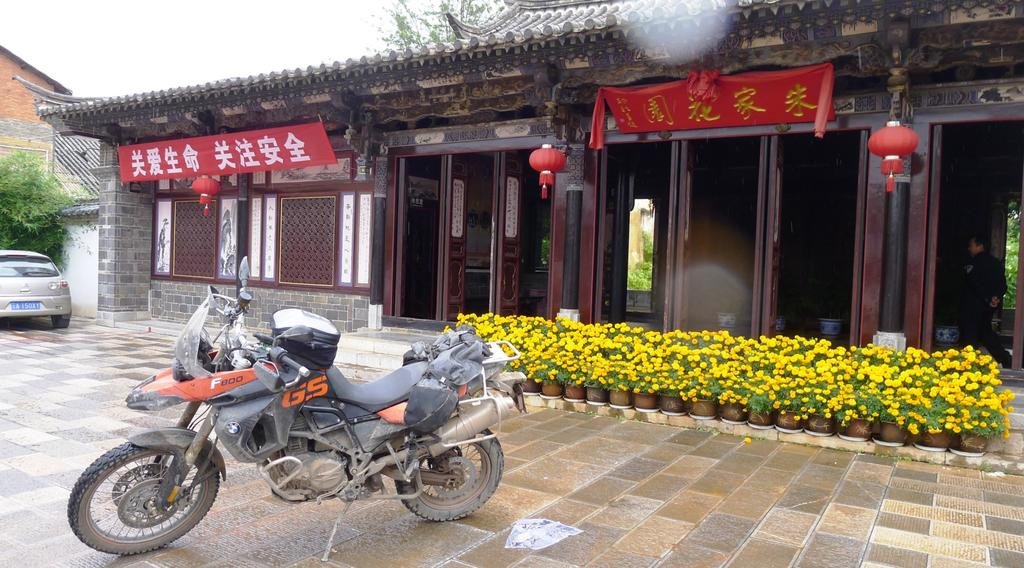
Really intricate work
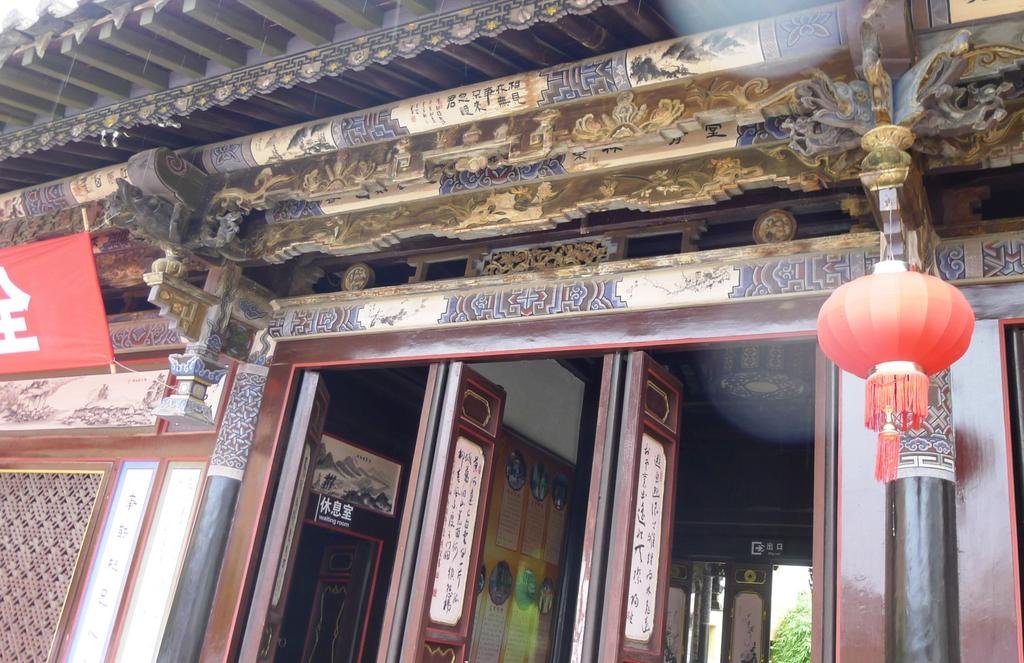
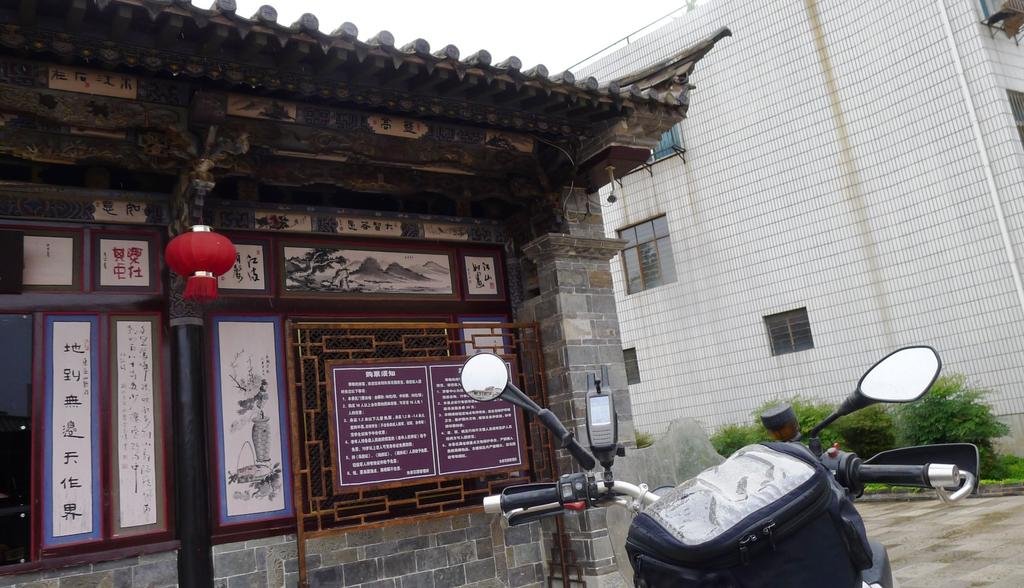
Some info on the Zhu Family Garden Hotel, in Jianshui from the below link:
Zhu Family Garden Hotel, Kunming, China - Free N Easy Travel - Hotel & Resorts Reservation Services
Entrance to the gardens

Really intricate work


Some info on the Zhu Family Garden Hotel, in Jianshui from the below link:
Zhu Family Garden Hotel, Kunming, China - Free N Easy Travel - Hotel & Resorts Reservation Services
| Zhu Family Garden Hotel situated in the old town of Jianshui. It was the family house of Zhu, which was built in about 100 years ago, luckily, it still been very well preserved as a historical relic after a long time. The 28 guest rooms are all kept from the old times with the traditional Chinese garden and wooden structure, makes this place is not just a hotel, but also a exhibition of the traditional Chinese architecture. | ||||
Room and Accommodation
| ||||
Facilities and Services
|
KTMphil
Senior member
helbob
Senior Member
- Joined
- Jan 26, 2013
Thanks for this report!
YES, i can because i did the same work when i was young. A hard work for the fingers
YES, i can because i did the same work when i was young. A hard work for the fingers
KTMphil
Senior member
A quick walk around the old quarter (Chao Yang Lou) of Jiangshui with Mr. R (making news friends immediately)
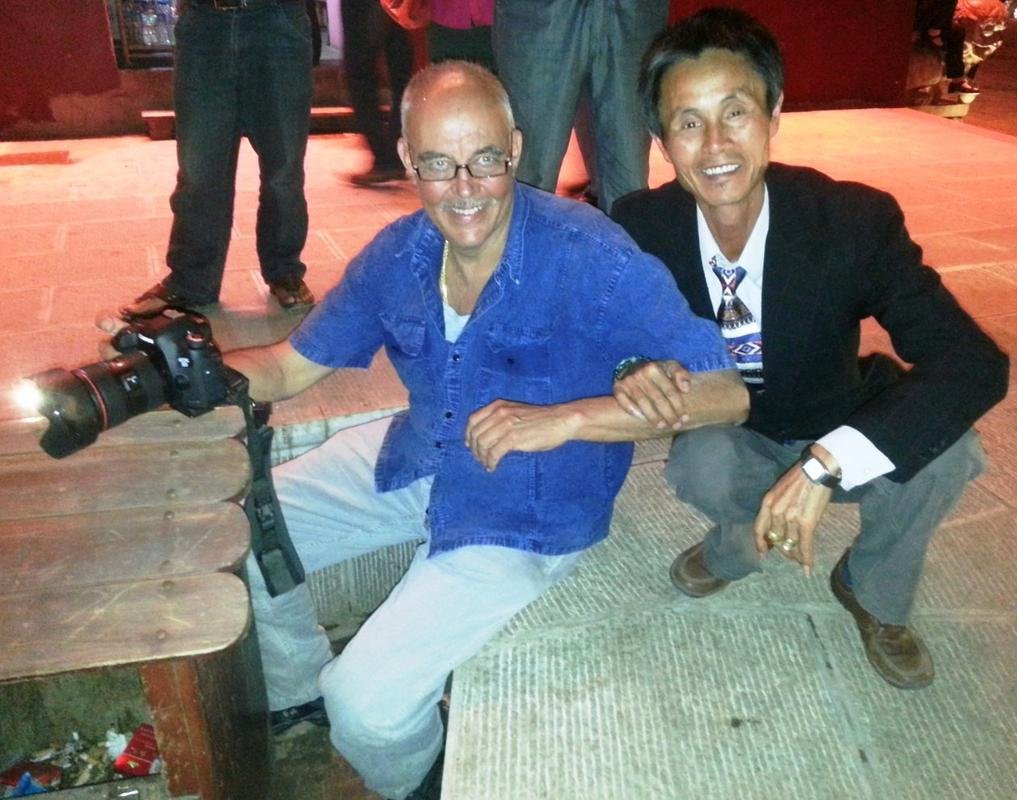
The old city gate
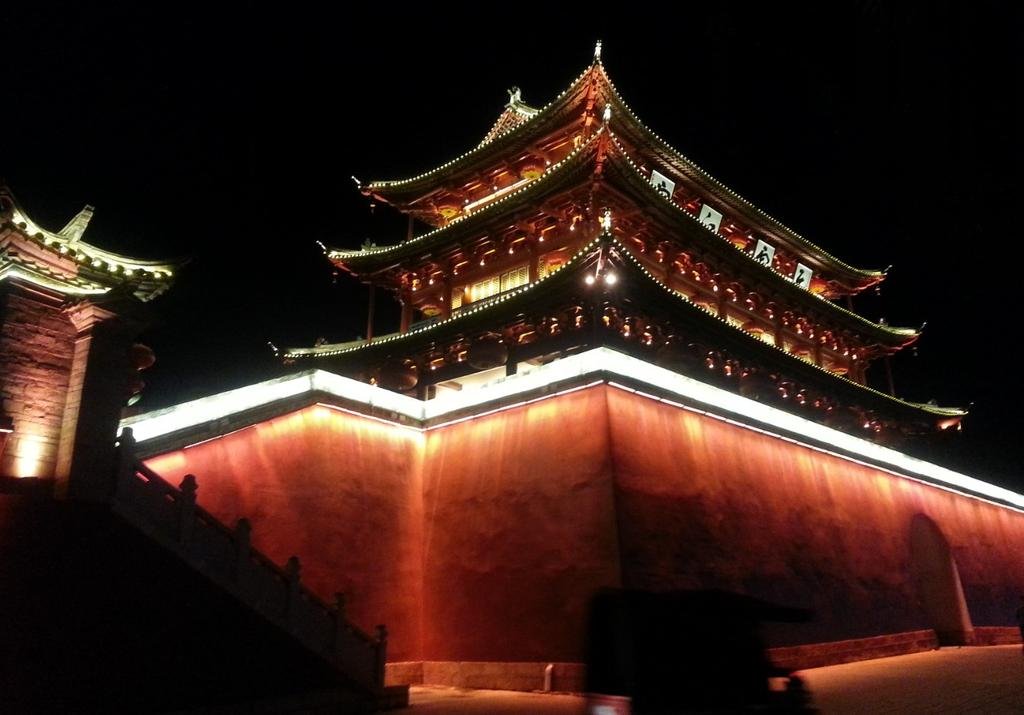
From Travel China Guide regarding the Jianshui Confucius Temple, it's supposed to be well worth a visit:
http://www.travelchinaguide.com/cityguides/yunnan/honghe/jianshui-ancient-town.htm
Jianshui Confucius Temple was a very special attraction. It was built in the Yuan Dynasty (1271-1368) and was the biggest Confucius Temple at that time. Now it is just behind the Confucius Temple in Qufu, Shandong Province, in scale. The temple has a traditional Chinese construction style, facing south. It is 625 meters (0.39 miles) deep, covering an area of 114 mu (18.78 acres), including 31 buildings. There is a memorial archway in front of the temple. Behind the archway lies a green lotus pool, called PanChi Pool or Xuehai (Sea of Learning, an academy where learners and scholars gathered to study ), which covers an area of 42 mu (6.9 acres) and ranks No.1 in the whole country. It is surrounded by red walls and boasts a small pavilion named Diao'ao (meaning angling for a huge legendary turtle) Pavilion. The name means achieving in career and fame. Walking through several gates and yards, you will see the Ancestral Master Hall, which is the major building of the Confucius Temple and lies on the highest terrace back of the vertical axis of the whole building complex. Sacrificial rituals are regularly held here, showing respect to Confucius. There is a bronze incense burner in front of the hall, whose four legs were carved to be four elephants' heads, representing the cultural characteristics of South Yunnan. All in all, this Confucius Temple is a display of the cultural mixture of the Han and the other ethnic groups of South Yunnan.
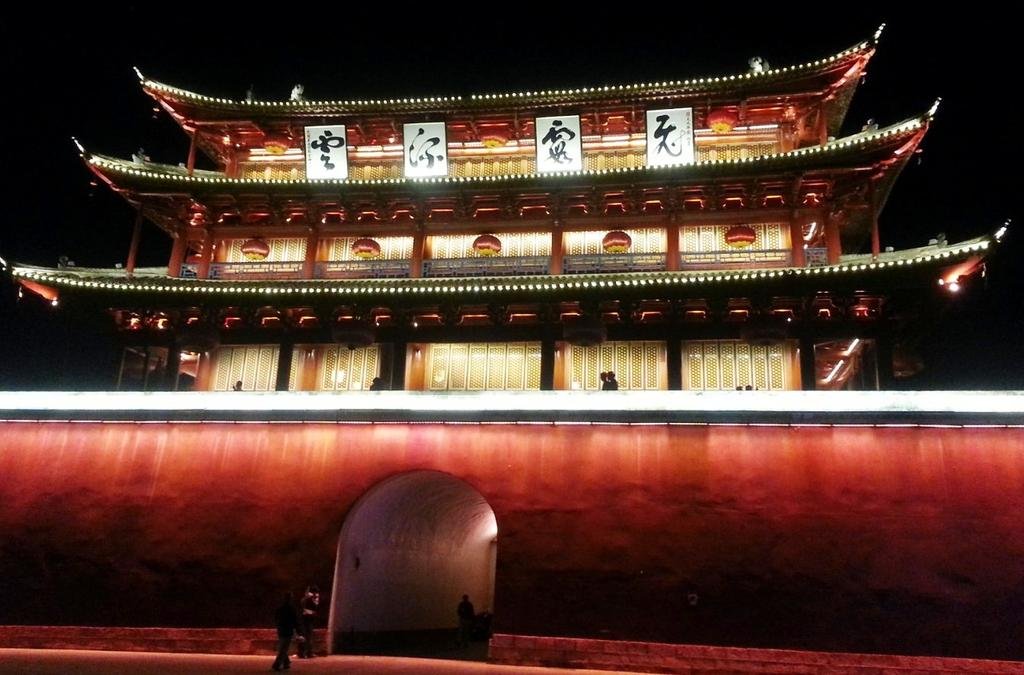
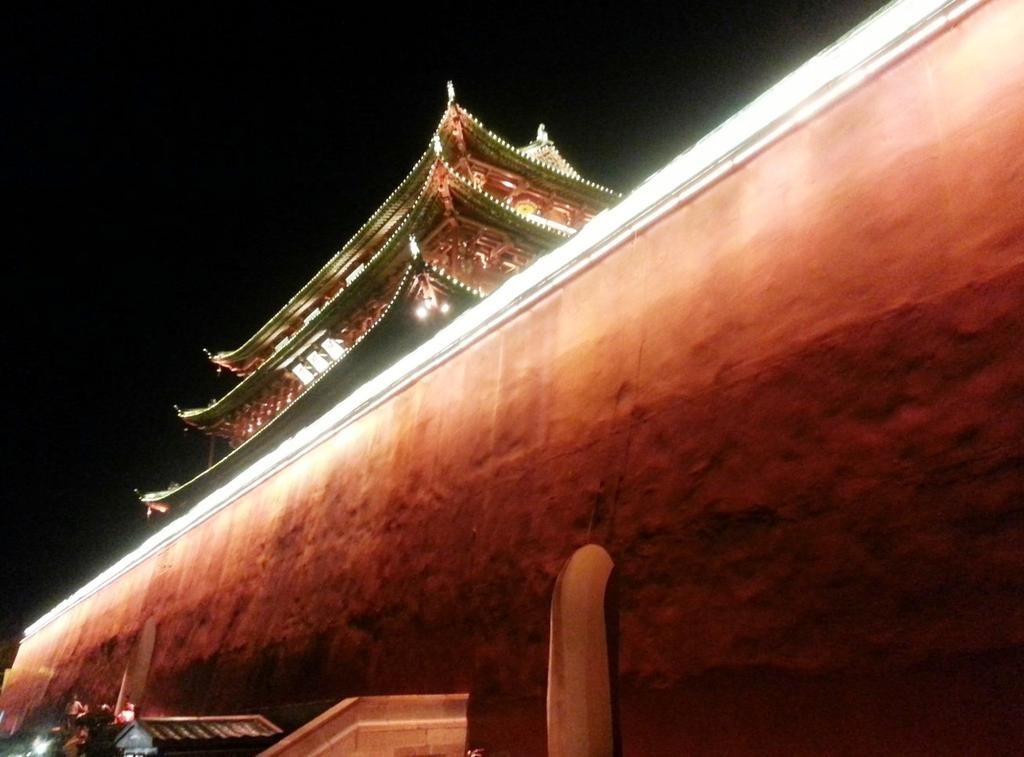

The old city gate

From Travel China Guide regarding the Jianshui Confucius Temple, it's supposed to be well worth a visit:
http://www.travelchinaguide.com/cityguides/yunnan/honghe/jianshui-ancient-town.htm
Jianshui Confucius Temple was a very special attraction. It was built in the Yuan Dynasty (1271-1368) and was the biggest Confucius Temple at that time. Now it is just behind the Confucius Temple in Qufu, Shandong Province, in scale. The temple has a traditional Chinese construction style, facing south. It is 625 meters (0.39 miles) deep, covering an area of 114 mu (18.78 acres), including 31 buildings. There is a memorial archway in front of the temple. Behind the archway lies a green lotus pool, called PanChi Pool or Xuehai (Sea of Learning, an academy where learners and scholars gathered to study ), which covers an area of 42 mu (6.9 acres) and ranks No.1 in the whole country. It is surrounded by red walls and boasts a small pavilion named Diao'ao (meaning angling for a huge legendary turtle) Pavilion. The name means achieving in career and fame. Walking through several gates and yards, you will see the Ancestral Master Hall, which is the major building of the Confucius Temple and lies on the highest terrace back of the vertical axis of the whole building complex. Sacrificial rituals are regularly held here, showing respect to Confucius. There is a bronze incense burner in front of the hall, whose four legs were carved to be four elephants' heads, representing the cultural characteristics of South Yunnan. All in all, this Confucius Temple is a display of the cultural mixture of the Han and the other ethnic groups of South Yunnan.


KTMphil
Senior member
This is where i'd like to stay next time i'm here in Chao Yang Lou - it's a traditional Chinese guest house
View attachment 17967
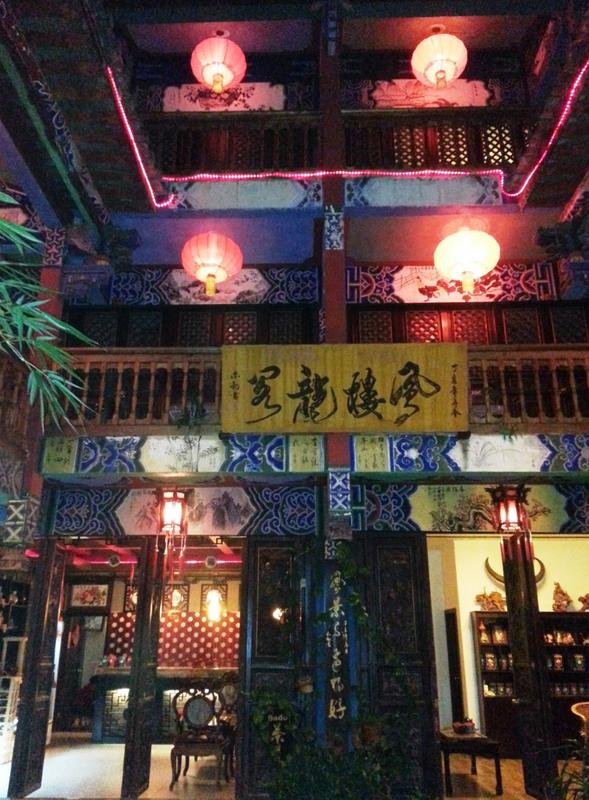
The support truck really looking like it's been on an adventure now
View attachment 17968
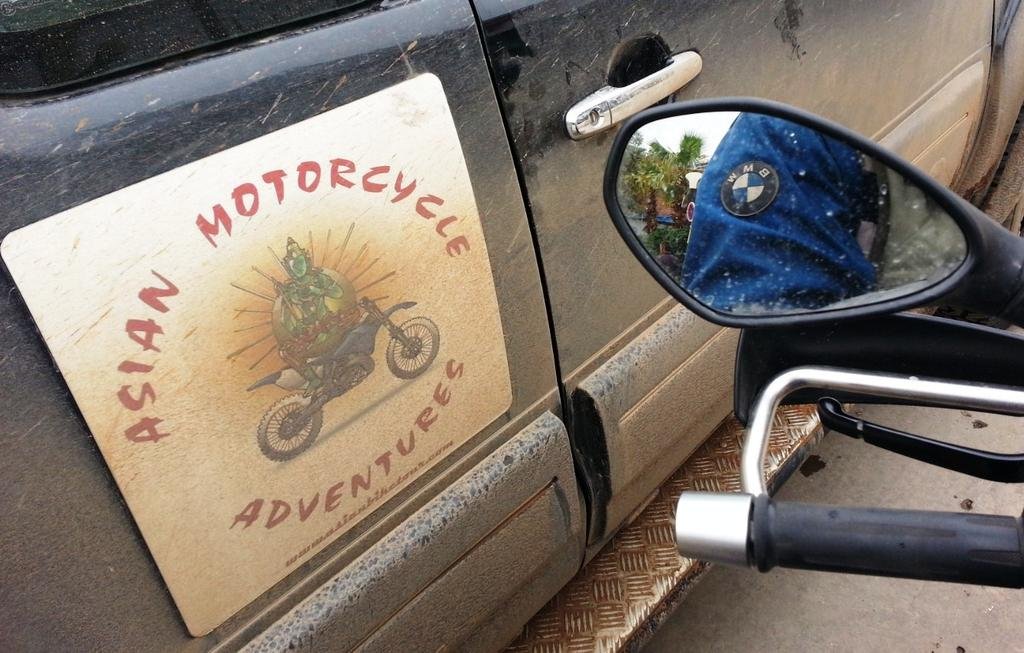
More to come...
View attachment 17967

The support truck really looking like it's been on an adventure now
View attachment 17968

More to come...
KTMphil
Senior member
Mr. Resnikoff's account of our ride from Dali SE to Kunming
Shangri-La Here We Come - A Motorcycle Touring Blog from Chiang Mai, Thailand to the Tibet-China Border - Asian Motorcycle Tours - Thailand, Laos, Cambodia, Vietnam Motorcycle Tours
Dateline: Midnight, Sunday, June 9, 2013).
Welcome to the "Shangri-La Here We Come" Blog.
Present location: Kunming, the capital city of Yunnan Province.
Riding distance from the east bank of Dali Lake: 375 ks.
Below is the GPS track of this ride:

Day's ride from Dali Lake east bank to Kunming
Driving (moving) time: 5:09
Moving average: 73 kph
Highest elevation reached:2394 meters
Total trip cumulative distance: 3374 kms.
Complete trip GPS track below:

GPS track of trip so far: Chiang Mai to Tibet Border, return to Kunming
Tomorrow's destination: Jian Shui
Riding distance: 220 kms
Approximate riding time: 4:30
Phil Gibbins is taking a ton of photos, way more than me. He is posting them online on his RideAsia.net rider forum. But this url changes daily. To see the photos from our ride to Kunming, you can view them at the following url:
http://www.rideasia.net/motorcycle-...karpo-6-740-meters-22-113-a-11.html#post29949
Hello Interested Parties,
Were back in Kunming for the 2nd time this trip as we head south on our return to Chiang Mai.
Still plenty of incredible stuff before us, but we only had a little bit of it today. The little bit was the ride around Dali Lake. On our drive northwards at the beginning of this tour we overnighted in the charming town of Dali. Its situated on the western bank of the lake, the same side of the lake where the major thoroughfare runs. So on our southward swing we decided to explore new territory on the east bank. We got off to an early start for a change and drove through a slew of fishing communities along the lake shore. Some interesting sights but nothing mind-blowing along this 50+ kilometer ride. It was rural and nice and traffic was light with no commercial freight haulers or dump trucks to dodge and pass. (it seems like one of the largest commercial activities in China is moving dirt, rocks, gravel, and sand from one place to another, and man, do they make a mess of it.)
After this we jumped on the main highway. It was a 280 kms high speed stretch on a restricted-access dual carriageway whose surface was in excellent condition. Phil and I kept the needle mostly between 120 and 130 kph and not a soul passed us. But George, riding a 250 cc dirt bike could not keep up, plus his range between fill-ups was only a third of ours. So Phil and I had to wait at least 15-20 minutes for George at rest stop service stations every 100 kms or thereabouts. At each station Phil and I downed Red Bulls because both of us find this type of riding boring. For those of you who drive Harleys and Goldwings, you would have loved this section because it was mountainous and scenic and nothing too hairy. Phil and I like hairy.
In China mcs are not really allowed on the highways, and they are more strict about enforcing this rule in large urban centers like Kunming. So we had to jump off the highway around 40 ks before the city and take local roads all the way in. It was a traffic-choked, dirty, dusty, and dangerous ride to our hotel. The Chinese drivers on the open road are pretty much okay, unless they are driving a large luxury car which makes them think they own the road and everyone else can go to hell. But in the city everyone, including trucks, buses, taxis, farm vehicles, whole families on a motor scooter, drive like maniacs. The only rules of thumb I have figured out in the city is that whoever is driving near you will do everything in their power to get in front of of you, and the concept of right-of-way does not exist. I almost bought the farm a couple of times on the ride in, and the amount of curse words that I uttered were uncountable. I even gave up using my horn and started screaming at anyone around me who was trying to pull a sleazy move. Sleazy moves in my book, that is, but perfectly normal driving behavior for Chinese drivers. They couldn't understand a word but it did get their attention. We have been told the government is tightening up their driving test parameters, but I see no indication of this.
We pulled into our hotel at around 3 p.m., took a quick shower, and George packed his belongings because he was flying back to his home in Hong Kong that evening.
For those of you who hate McDonalds, as I do, here is a sure-fire way to change your opinion: eat fourteen straight days of Chinese food. For the three of us, our McDonald meal was like manna from heaven. I ordered their Surf & Turf; A Filet Of Fish sandwich and a Big Mac with fries and ice cream for desert. I never thought I would say this in my life, but I relished every bite.
George departed for the airport. Phil went to his room to work on selecting photos for his web site, and I went to the hotel health spa, which was a most refreshing experience. I am kicking myself I did not take advantage of this during our two-night stay at the beginning of this trip.
The first thing I did was shower, then scraped two-weeks growth of hair off my face, needing three razor blades to accomplish this. I took a dip in a Jacuzzi hot tub that could easily accommodated 200 persons (there were four people using it when I was there). Climbed out and jumped into the steam room, worked up a sweat, back into the shower, Jacuzzi again, into the sauna this time, another shower, Jacuzzi, steam room, shower. When my pulse hit the 200 rpm mark, I sat down for a while to readjust to earth surface temperatures. Then the staff led me to a private bedroom where an Asian beauty gave me a 90-minute oil massage.
I stumbled up to my room and slept the sleep of the dead. Have another big day coming up tomorrow. Will tell all soon. Bye, bye.
Shangri-La Here We Come - A Motorcycle Touring Blog from Chiang Mai, Thailand to the Tibet-China Border - Asian Motorcycle Tours - Thailand, Laos, Cambodia, Vietnam Motorcycle Tours
Dateline: Midnight, Sunday, June 9, 2013).
Welcome to the "Shangri-La Here We Come" Blog.
Present location: Kunming, the capital city of Yunnan Province.
Riding distance from the east bank of Dali Lake: 375 ks.
Below is the GPS track of this ride:

Day's ride from Dali Lake east bank to Kunming
Driving (moving) time: 5:09
Moving average: 73 kph
Highest elevation reached:2394 meters
Total trip cumulative distance: 3374 kms.
Complete trip GPS track below:

GPS track of trip so far: Chiang Mai to Tibet Border, return to Kunming
Tomorrow's destination: Jian Shui
Riding distance: 220 kms
Approximate riding time: 4:30
Phil Gibbins is taking a ton of photos, way more than me. He is posting them online on his RideAsia.net rider forum. But this url changes daily. To see the photos from our ride to Kunming, you can view them at the following url:
http://www.rideasia.net/motorcycle-...karpo-6-740-meters-22-113-a-11.html#post29949
Hello Interested Parties,
Were back in Kunming for the 2nd time this trip as we head south on our return to Chiang Mai.
Still plenty of incredible stuff before us, but we only had a little bit of it today. The little bit was the ride around Dali Lake. On our drive northwards at the beginning of this tour we overnighted in the charming town of Dali. Its situated on the western bank of the lake, the same side of the lake where the major thoroughfare runs. So on our southward swing we decided to explore new territory on the east bank. We got off to an early start for a change and drove through a slew of fishing communities along the lake shore. Some interesting sights but nothing mind-blowing along this 50+ kilometer ride. It was rural and nice and traffic was light with no commercial freight haulers or dump trucks to dodge and pass. (it seems like one of the largest commercial activities in China is moving dirt, rocks, gravel, and sand from one place to another, and man, do they make a mess of it.)
After this we jumped on the main highway. It was a 280 kms high speed stretch on a restricted-access dual carriageway whose surface was in excellent condition. Phil and I kept the needle mostly between 120 and 130 kph and not a soul passed us. But George, riding a 250 cc dirt bike could not keep up, plus his range between fill-ups was only a third of ours. So Phil and I had to wait at least 15-20 minutes for George at rest stop service stations every 100 kms or thereabouts. At each station Phil and I downed Red Bulls because both of us find this type of riding boring. For those of you who drive Harleys and Goldwings, you would have loved this section because it was mountainous and scenic and nothing too hairy. Phil and I like hairy.
In China mcs are not really allowed on the highways, and they are more strict about enforcing this rule in large urban centers like Kunming. So we had to jump off the highway around 40 ks before the city and take local roads all the way in. It was a traffic-choked, dirty, dusty, and dangerous ride to our hotel. The Chinese drivers on the open road are pretty much okay, unless they are driving a large luxury car which makes them think they own the road and everyone else can go to hell. But in the city everyone, including trucks, buses, taxis, farm vehicles, whole families on a motor scooter, drive like maniacs. The only rules of thumb I have figured out in the city is that whoever is driving near you will do everything in their power to get in front of of you, and the concept of right-of-way does not exist. I almost bought the farm a couple of times on the ride in, and the amount of curse words that I uttered were uncountable. I even gave up using my horn and started screaming at anyone around me who was trying to pull a sleazy move. Sleazy moves in my book, that is, but perfectly normal driving behavior for Chinese drivers. They couldn't understand a word but it did get their attention. We have been told the government is tightening up their driving test parameters, but I see no indication of this.
We pulled into our hotel at around 3 p.m., took a quick shower, and George packed his belongings because he was flying back to his home in Hong Kong that evening.
For those of you who hate McDonalds, as I do, here is a sure-fire way to change your opinion: eat fourteen straight days of Chinese food. For the three of us, our McDonald meal was like manna from heaven. I ordered their Surf & Turf; A Filet Of Fish sandwich and a Big Mac with fries and ice cream for desert. I never thought I would say this in my life, but I relished every bite.
George departed for the airport. Phil went to his room to work on selecting photos for his web site, and I went to the hotel health spa, which was a most refreshing experience. I am kicking myself I did not take advantage of this during our two-night stay at the beginning of this trip.
The first thing I did was shower, then scraped two-weeks growth of hair off my face, needing three razor blades to accomplish this. I took a dip in a Jacuzzi hot tub that could easily accommodated 200 persons (there were four people using it when I was there). Climbed out and jumped into the steam room, worked up a sweat, back into the shower, Jacuzzi again, into the sauna this time, another shower, Jacuzzi, steam room, shower. When my pulse hit the 200 rpm mark, I sat down for a while to readjust to earth surface temperatures. Then the staff led me to a private bedroom where an Asian beauty gave me a 90-minute oil massage.
I stumbled up to my room and slept the sleep of the dead. Have another big day coming up tomorrow. Will tell all soon. Bye, bye.
KTMphil
Senior member
Some information from my last trip to Jian Shui in the link below:
Here
Jian Shui notes 1
& here
Jian Shui notes 2


Here
Jian Shui notes 1
& here
Jian Shui notes 2


KTMphil
Senior member
Tomorrow Jiang Shui to Yuan Yang , below is the route we took last time through the mountains on tiny roads, with the truck with us we'll probably be taking a different route.
Yuan Yang is where the famous terraced rice fields are located.

Source : Wikipedia
Wikipedia:
http://en.wikipedia.org/wiki/Yuanyang_County,_Yunnan
The terraced areas of interest to visitors are mainly found between 1000 and 2000 metres above sea level. The winter temperatures here, although never freezing, are such that they only support one rice crop a year. After the harvest, from mid-September till mid-November depending on the elevation, the terraces are filled with water until April, when planting begins.
Last years tracks from Jian Shui to Yuan Yang

Last years tracks from Yuan Yang NE to Mengzi

Yuan Yang is where the famous terraced rice fields are located.

Source : Wikipedia
Wikipedia:
http://en.wikipedia.org/wiki/Yuanyang_County,_Yunnan
The terraced areas of interest to visitors are mainly found between 1000 and 2000 metres above sea level. The winter temperatures here, although never freezing, are such that they only support one rice crop a year. After the harvest, from mid-September till mid-November depending on the elevation, the terraces are filled with water until April, when planting begins.
Last years tracks from Jian Shui to Yuan Yang

Last years tracks from Yuan Yang NE to Mengzi

2wheels
Community Manager
KTMphil
Senior member
June 11th, 2013
A rest day in Jian Shui (I think just an excuse for Mr. R to get his laundry done) & good place to have one.
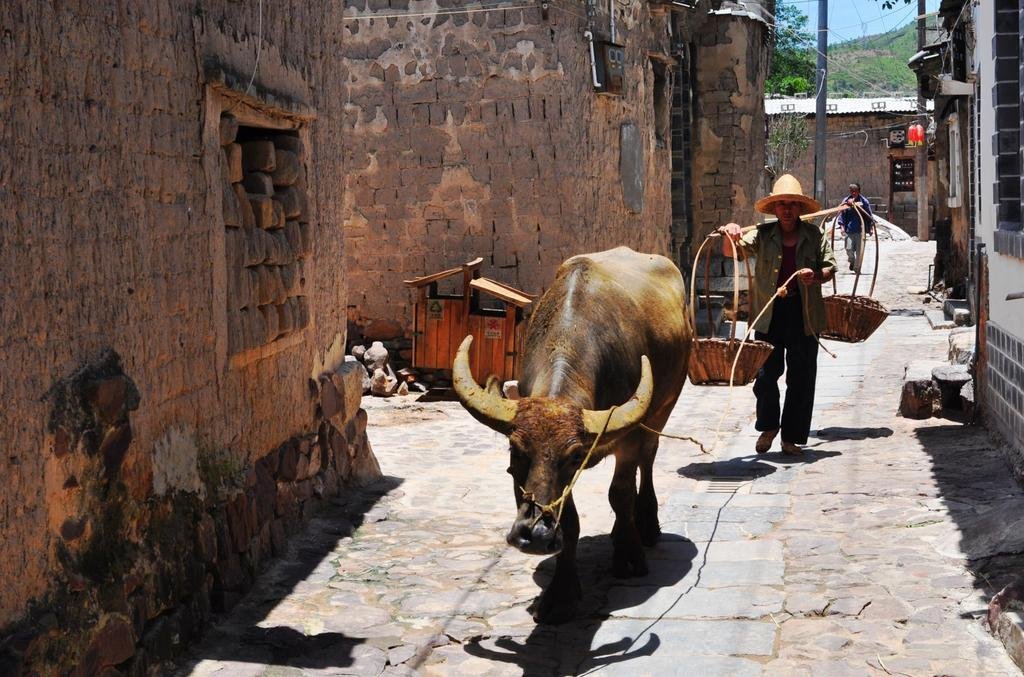
We take a trip out to the 600 year old village of Tuanshan (Duanshan) on the outskirts of Jian Shui, it's located at:
N 23.646525133111883
E 102.73701097157671
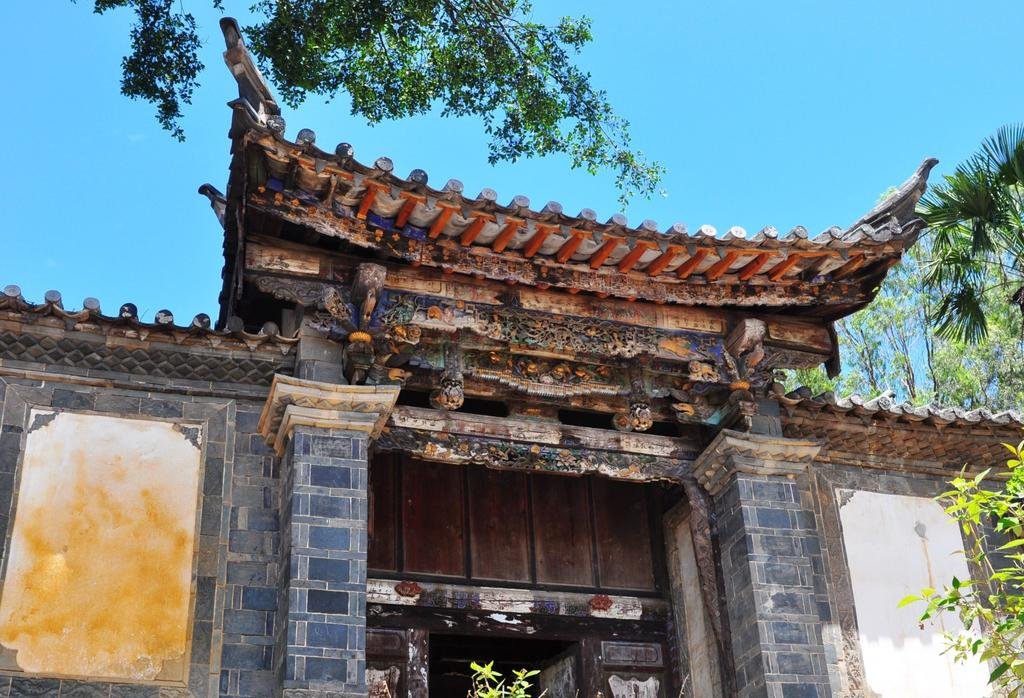
From:
Traditions - China culture
Located at Xizhuang Township, Jianshui County, Honghe Hani & Yi Autonomous Prefecture in southern Yunnan Province, Tuanshan Village is the only intact famous cultural village of the Qing Dynasty existed currently which was ever the habitation of the Yi ethnic minority in history.
In Tuanshan Village, there are residential complexes built 600 years ago which have well reserved the characteristics and social and humanistic environment of the Southern Yunnan villages in the 19th century and 26 best preserved traditional folk houses and ancient buildings of the late Qing Dynasty, for which the village is reputed as "Loulan Ancient City in Yunnan".
The extant old architectures consist of traditional Han Chinese courtyard built of grey bricks, tuzhangfang (earth-rammed house) of Yi ethnic group and the tuzhangfang with tile eaves of combined Han and Yi style. The building complex includes those courtyard houses of one hall, two halls and three halls as well as those of crisscross yards, covering the traditional residential forms of "four-side courtyard house with five raise headings", "three-side courtyard house with a screen wall facing the gate" and "horse running building" (Square courtyard with two-layer buildings on four sides in which the corridors are connecting with each other so that "the horse can run on the corridor") in Yunnan. All the houses stand facing east and exposed to the sun. Walking down the old flagstone paved road of the village, you would be aware of the 19th-century farming culture in southern Yunan Province as well as the supplemented humanistic culture which are reflected in various aspects from the architecture, sculpture, painting to calligraphy, couplets, poems and local customs.
As the architectures were built along the mountains at high ground by sophisticated materials in elaborate workmanship, and there have been residents living there from generation to generation, Tuanshan Village is able to be preserved intact up to the present. Now, the small village has drawn the attention of the whole world thanks to its unique building complexes.
A rest day in Jian Shui (I think just an excuse for Mr. R to get his laundry done) & good place to have one.

We take a trip out to the 600 year old village of Tuanshan (Duanshan) on the outskirts of Jian Shui, it's located at:
N 23.646525133111883
E 102.73701097157671

From:
Traditions - China culture
Located at Xizhuang Township, Jianshui County, Honghe Hani & Yi Autonomous Prefecture in southern Yunnan Province, Tuanshan Village is the only intact famous cultural village of the Qing Dynasty existed currently which was ever the habitation of the Yi ethnic minority in history.
In Tuanshan Village, there are residential complexes built 600 years ago which have well reserved the characteristics and social and humanistic environment of the Southern Yunnan villages in the 19th century and 26 best preserved traditional folk houses and ancient buildings of the late Qing Dynasty, for which the village is reputed as "Loulan Ancient City in Yunnan".
The extant old architectures consist of traditional Han Chinese courtyard built of grey bricks, tuzhangfang (earth-rammed house) of Yi ethnic group and the tuzhangfang with tile eaves of combined Han and Yi style. The building complex includes those courtyard houses of one hall, two halls and three halls as well as those of crisscross yards, covering the traditional residential forms of "four-side courtyard house with five raise headings", "three-side courtyard house with a screen wall facing the gate" and "horse running building" (Square courtyard with two-layer buildings on four sides in which the corridors are connecting with each other so that "the horse can run on the corridor") in Yunnan. All the houses stand facing east and exposed to the sun. Walking down the old flagstone paved road of the village, you would be aware of the 19th-century farming culture in southern Yunan Province as well as the supplemented humanistic culture which are reflected in various aspects from the architecture, sculpture, painting to calligraphy, couplets, poems and local customs.
As the architectures were built along the mountains at high ground by sophisticated materials in elaborate workmanship, and there have been residents living there from generation to generation, Tuanshan Village is able to be preserved intact up to the present. Now, the small village has drawn the attention of the whole world thanks to its unique building complexes.
KTMphil
Senior member
Walking into the old town, you're immediately hit by the immense traditional stone architecture
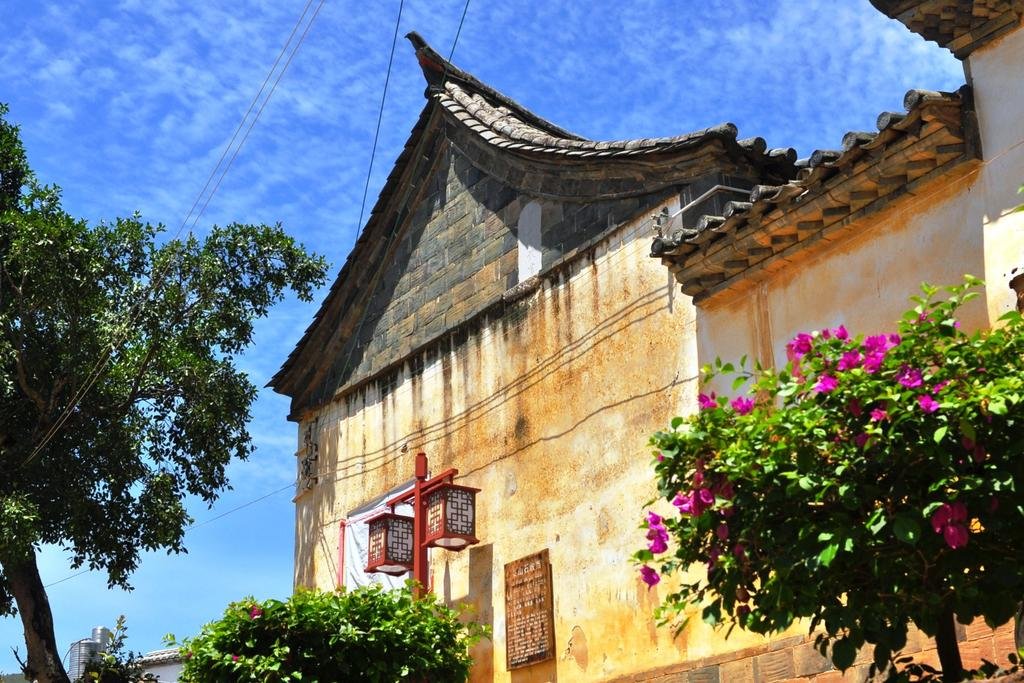
The old buildings are still inhabited by local farmers & you can walk right into their houses, they get a percentage of the entry admission into the old city area
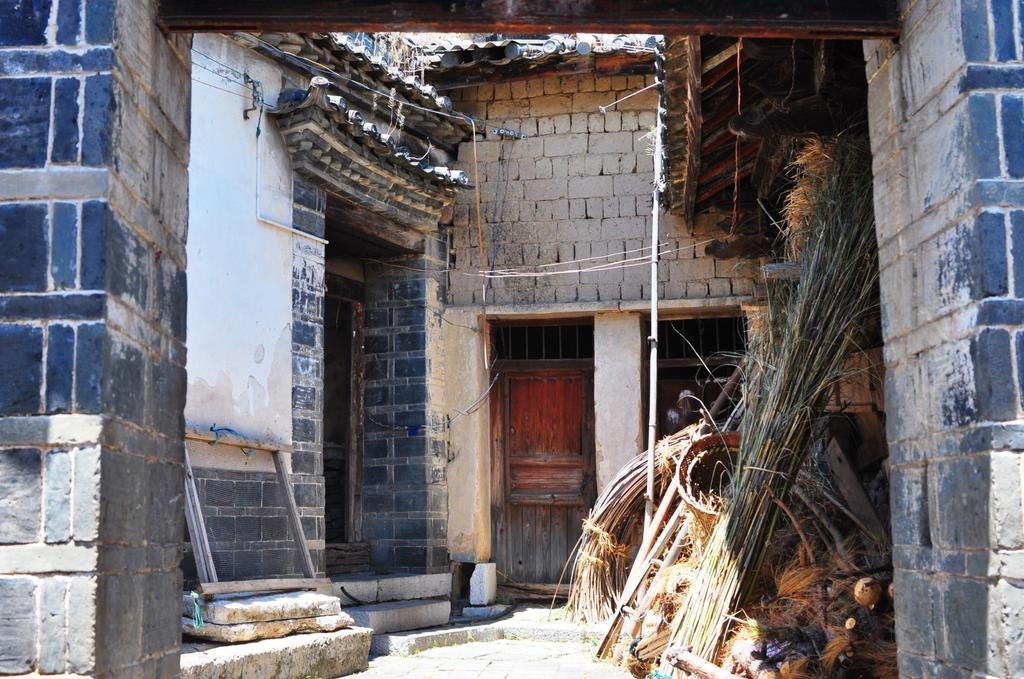
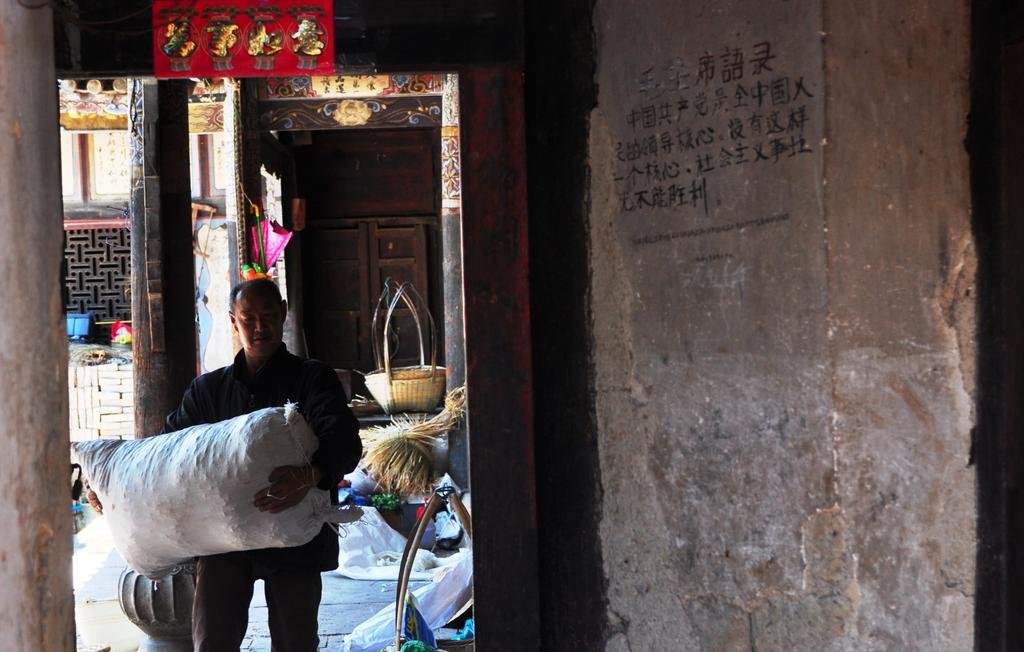
So much detail every where on the walls & ceilings it transfixes the eyes
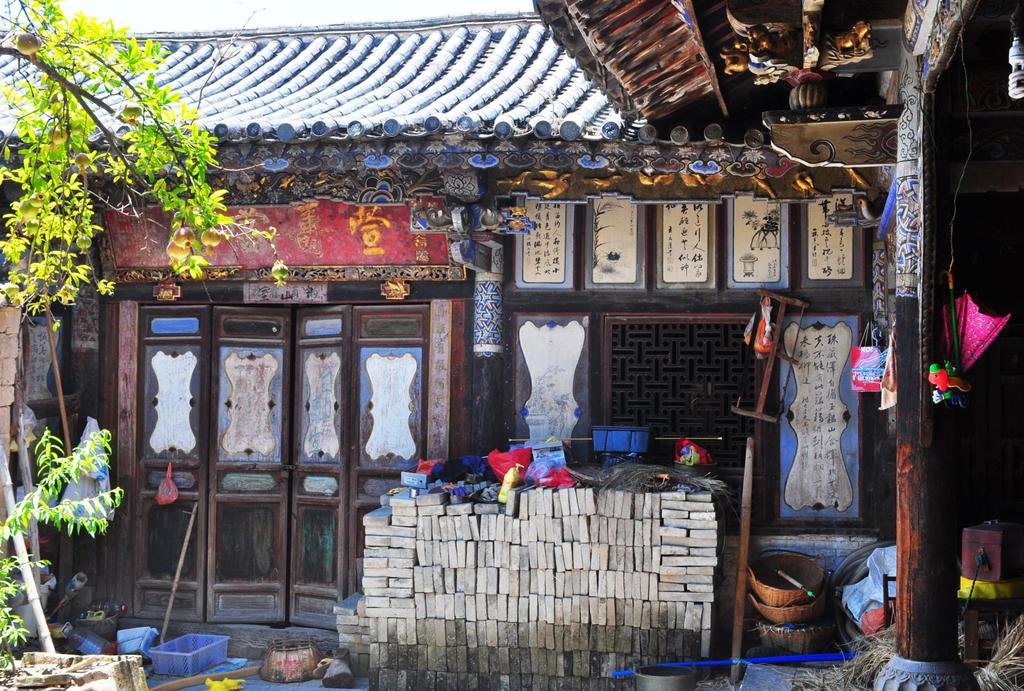
Back from the farm
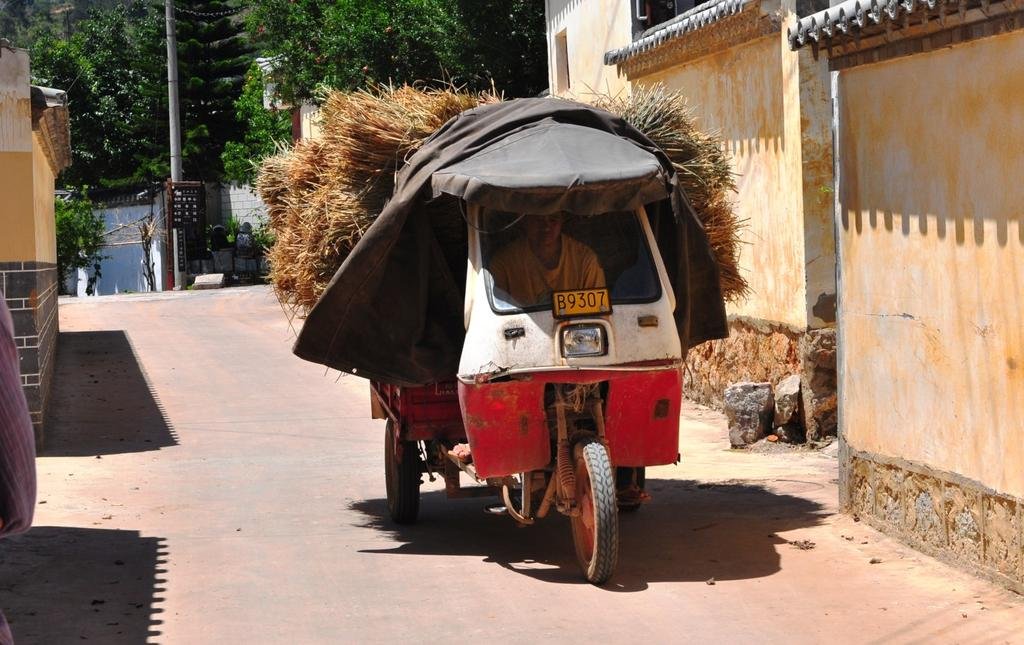

The old buildings are still inhabited by local farmers & you can walk right into their houses, they get a percentage of the entry admission into the old city area


So much detail every where on the walls & ceilings it transfixes the eyes

Back from the farm

KTMphil
Senior member
KTMphil
Senior member
KTMphil
Senior member
One of the main attractions of Tuanshan ancient village is Family Zhang's Courtyards and Garden - a top class, exquisite setting, they had style
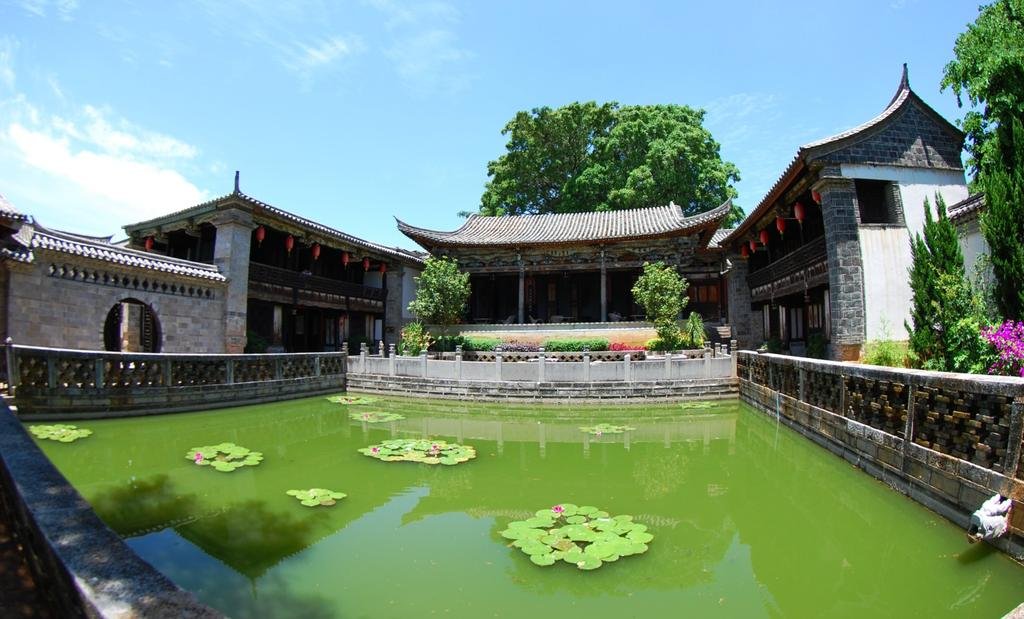
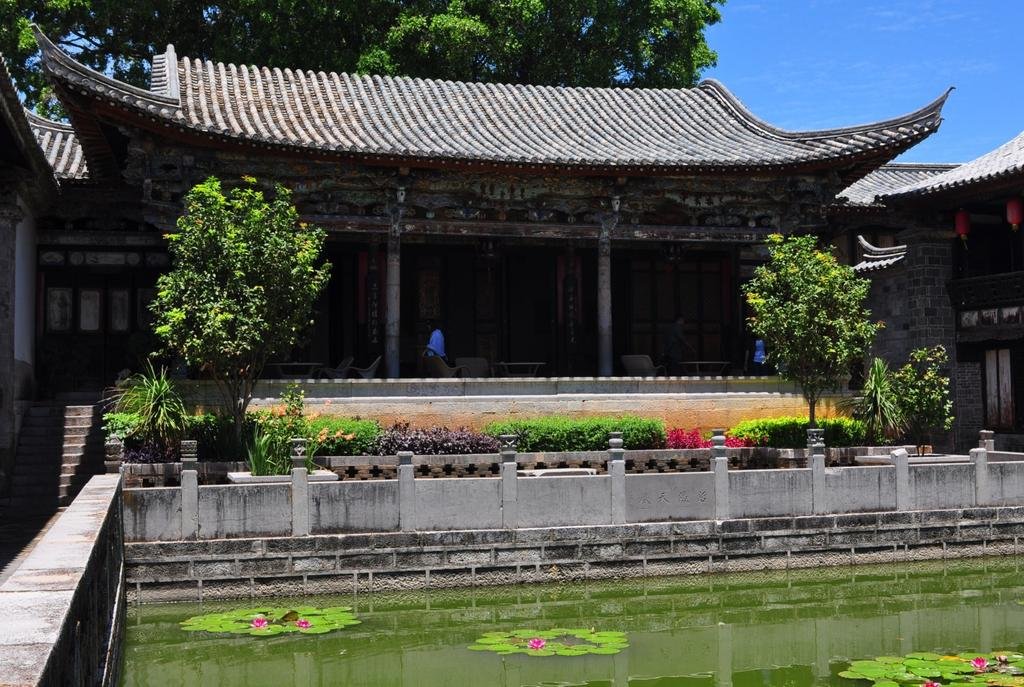

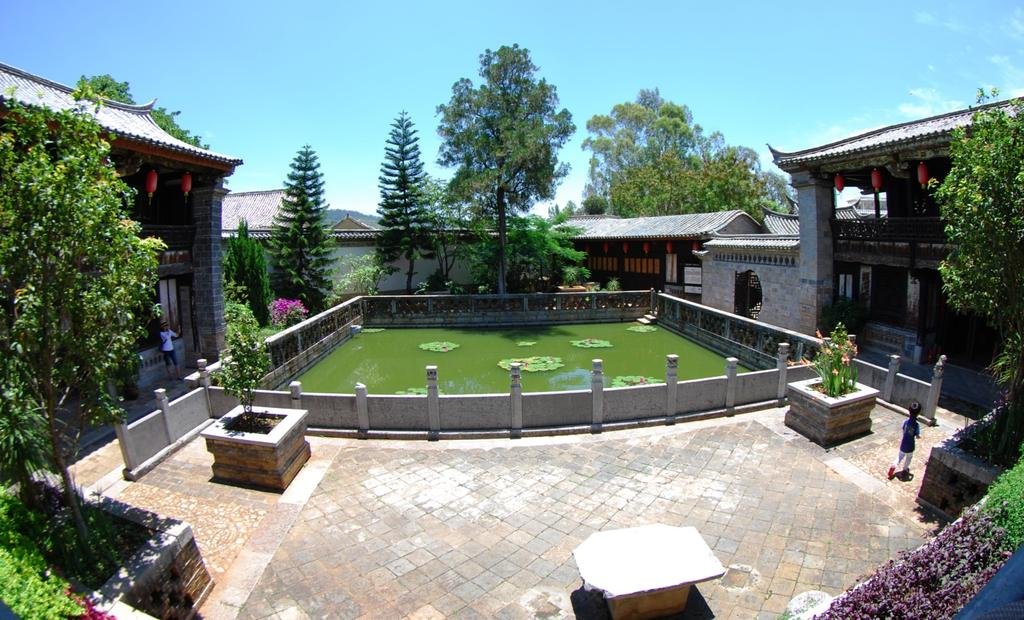
Source: http://www.chinaculturecenter.org/chinaguide/regions/yunnan/yuanyang/
Family Zhang's Courtyards and Garden, is located in ancient Tuanshan village 13 km west of Jianshui Town.
Formerly the exclusive domain of a local aristocratic family, it is famed for its Qing Dynasty architecture, which includes extremely detailed wood and stone carvings, and unique painted murals. It is the second largest private courtyard style mansion in Jianshui. But it looks more authentic than Zhu Family's Garden, the largest one, which has been renovated although the refurbishment is conducted based on "repair-to-restore" policy.
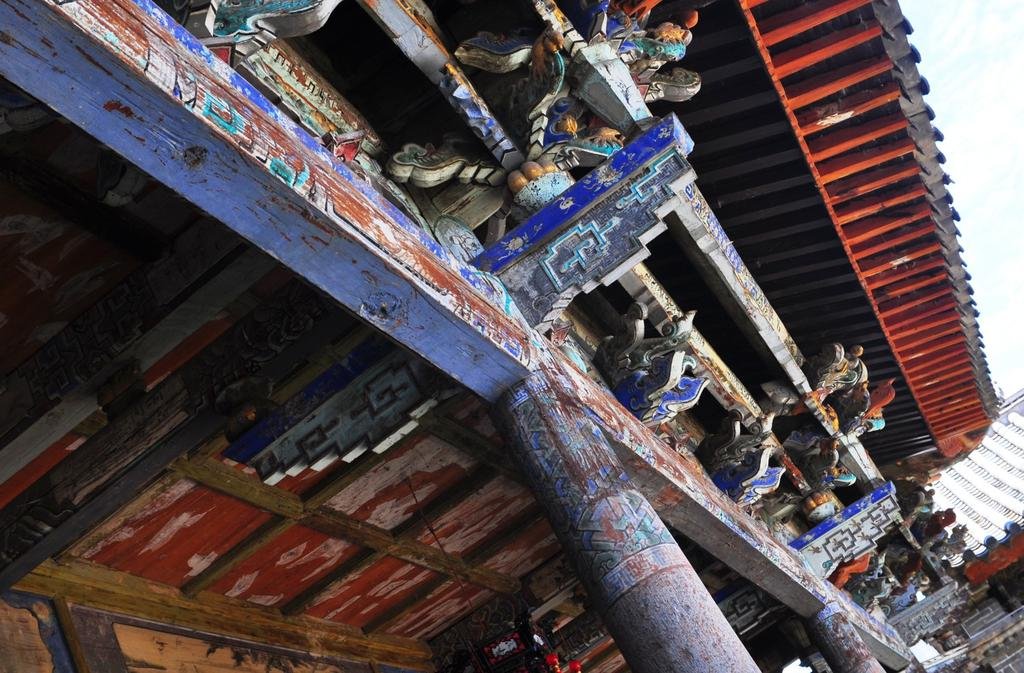
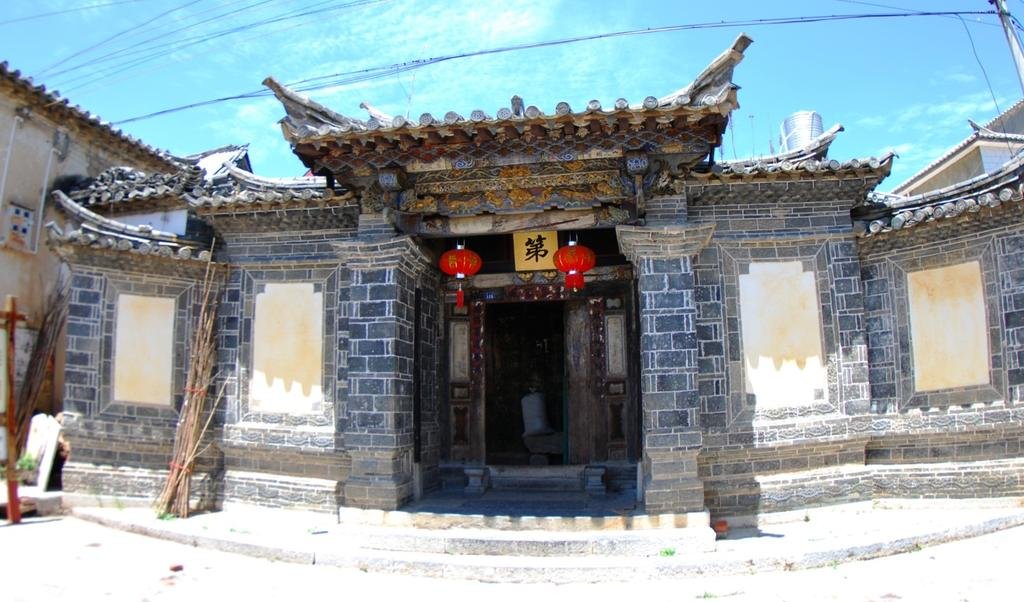
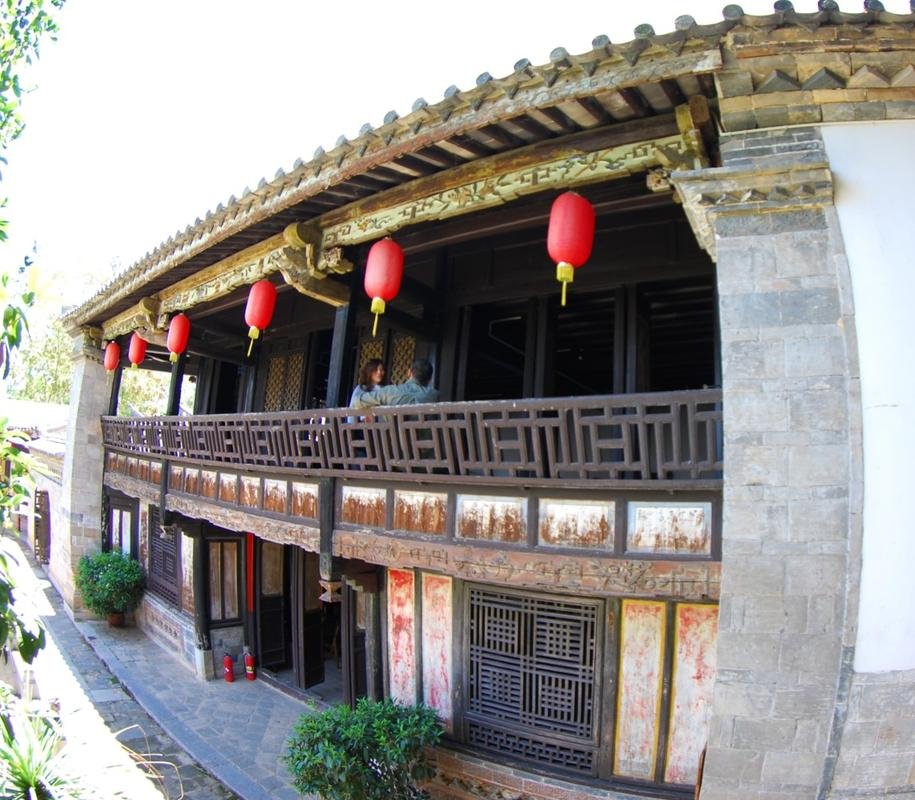
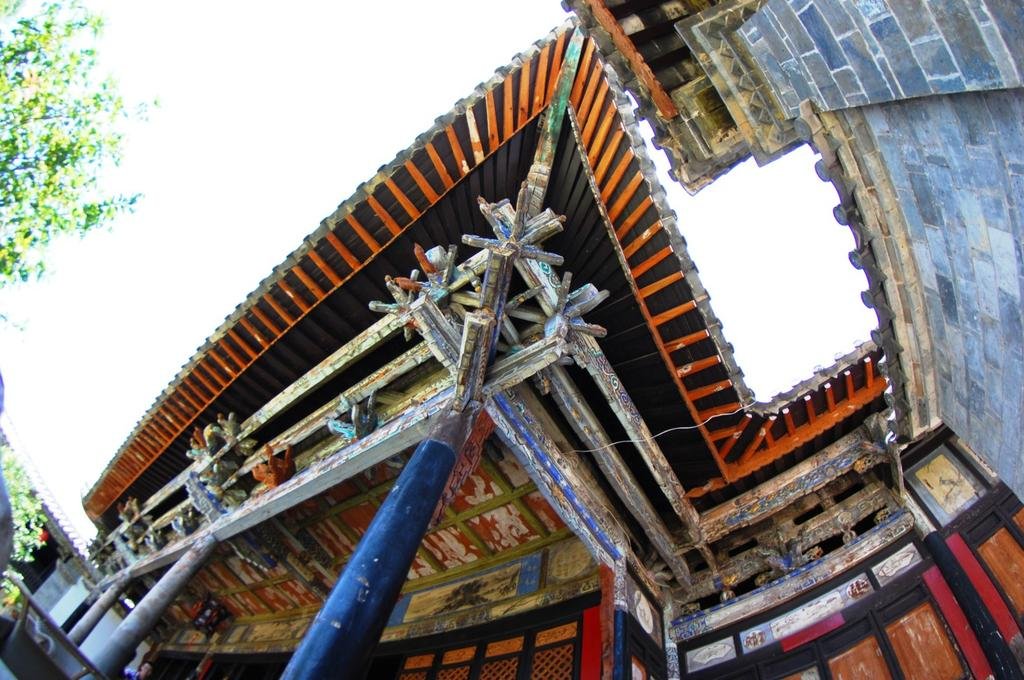
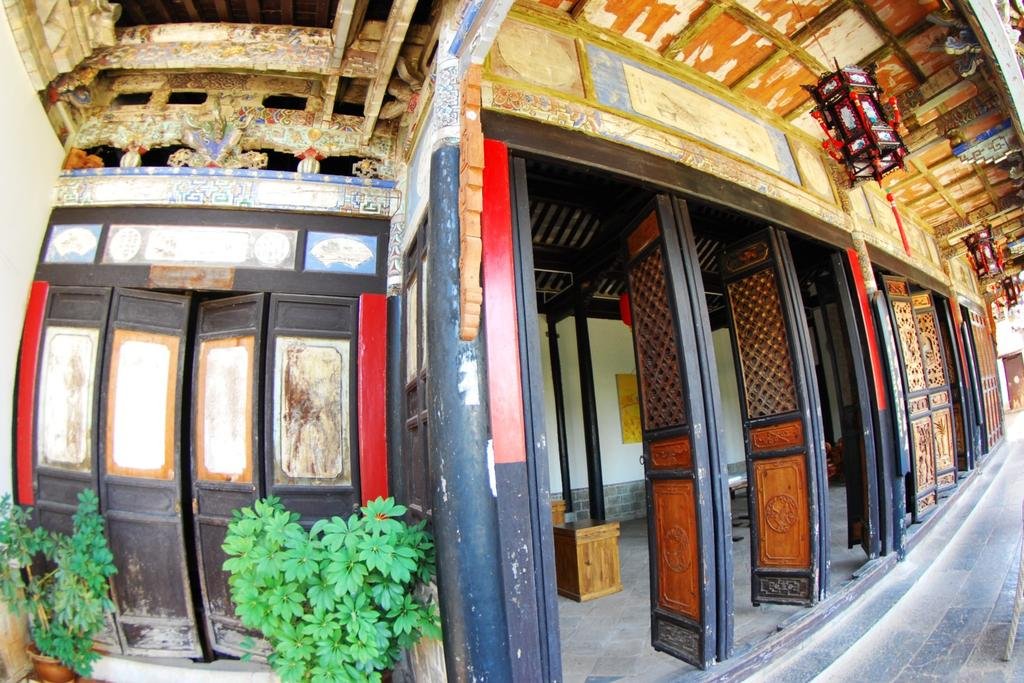
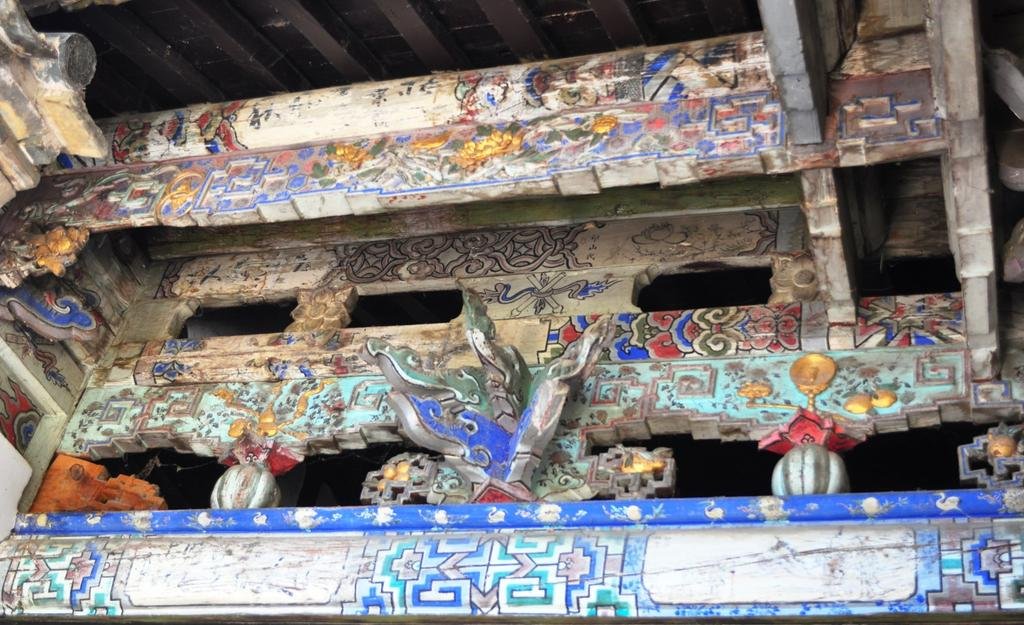




Source: http://www.chinaculturecenter.org/chinaguide/regions/yunnan/yuanyang/
Family Zhang's Courtyards and Garden, is located in ancient Tuanshan village 13 km west of Jianshui Town.
Formerly the exclusive domain of a local aristocratic family, it is famed for its Qing Dynasty architecture, which includes extremely detailed wood and stone carvings, and unique painted murals. It is the second largest private courtyard style mansion in Jianshui. But it looks more authentic than Zhu Family's Garden, the largest one, which has been renovated although the refurbishment is conducted based on "repair-to-restore" policy.






2wheels
Community Manager
KTMphil
Senior member
KTMphil
Senior member
A few more shots of the great traditional architecture around the ancient village of TuanShan
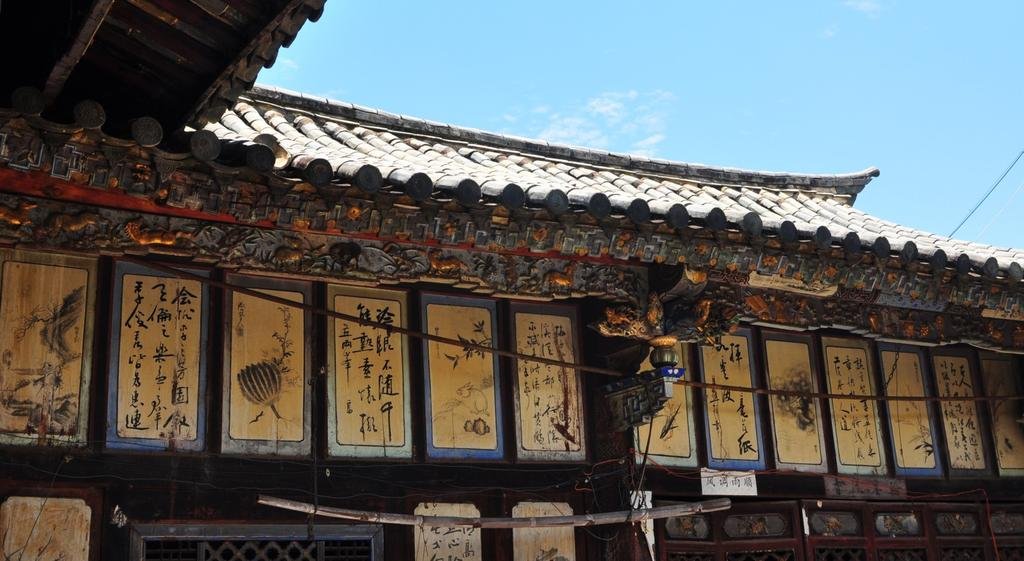
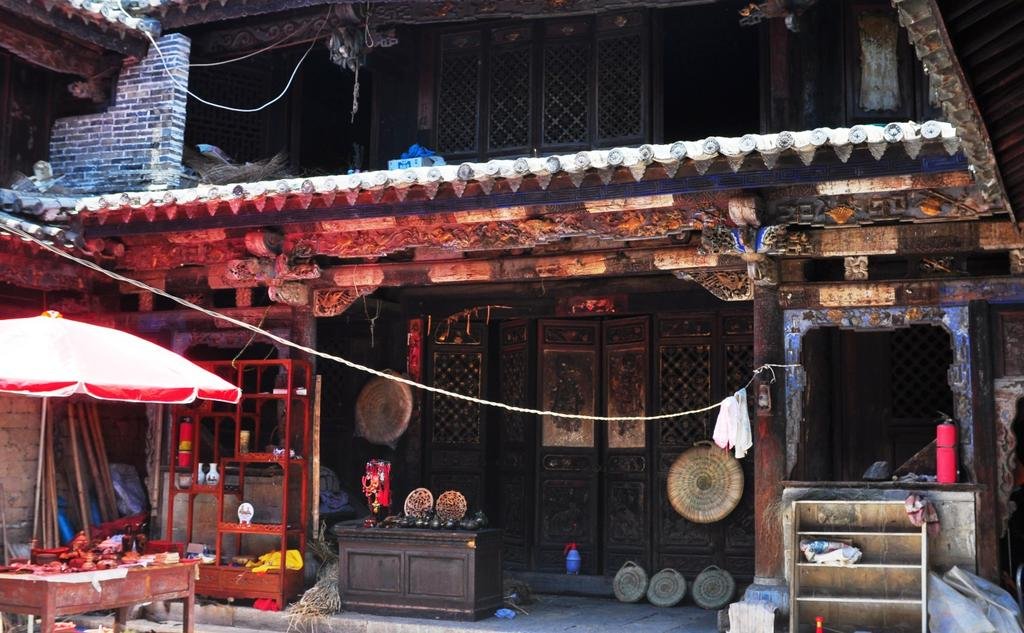
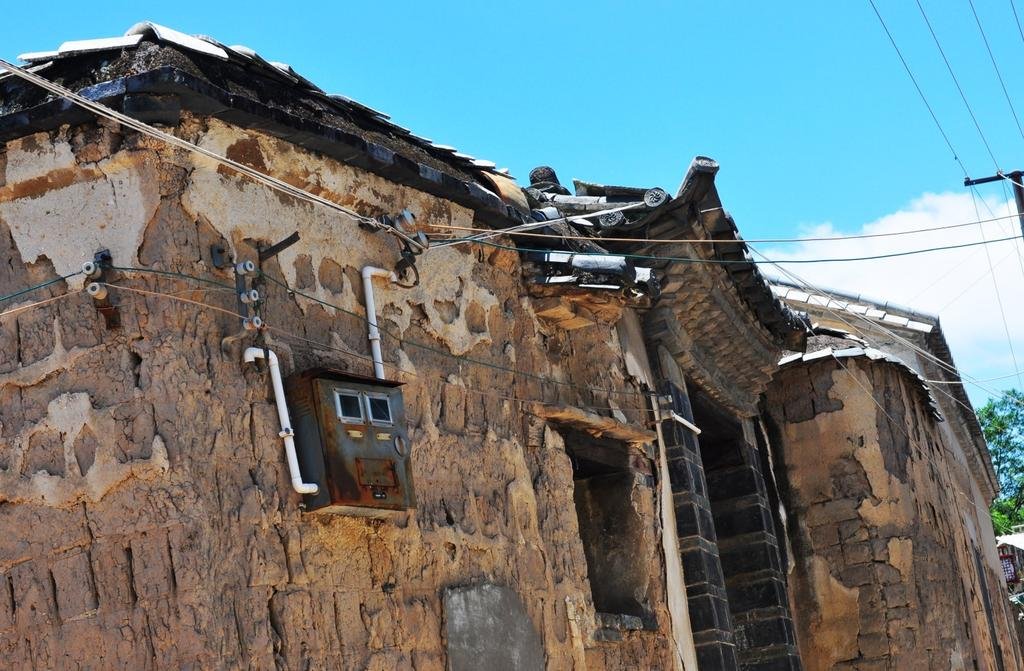
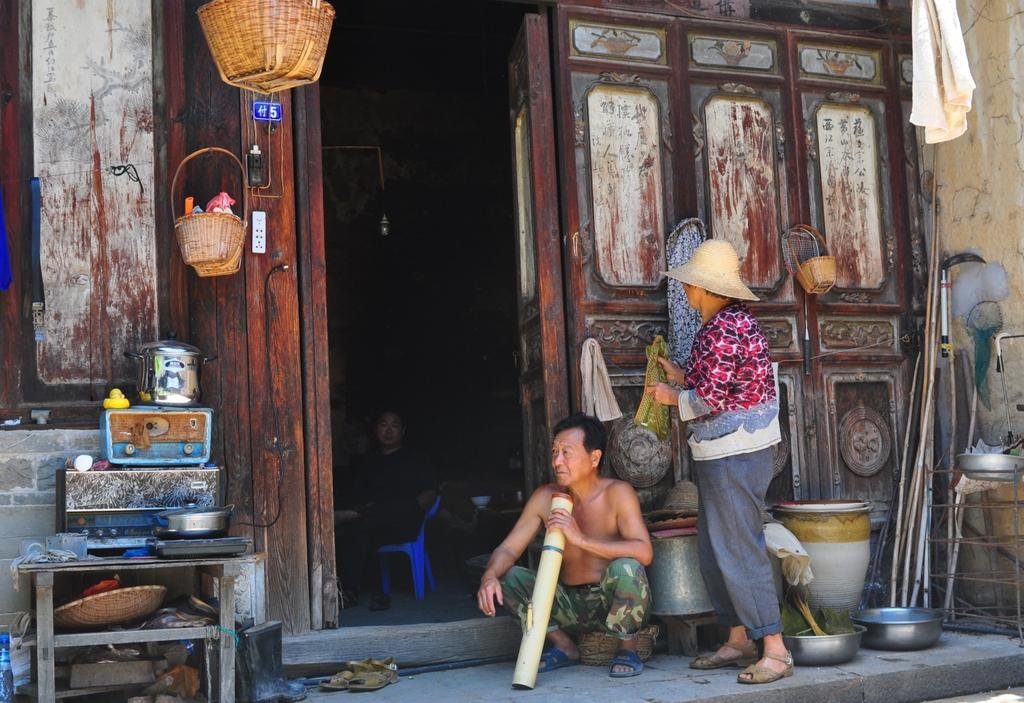
Having a smoke
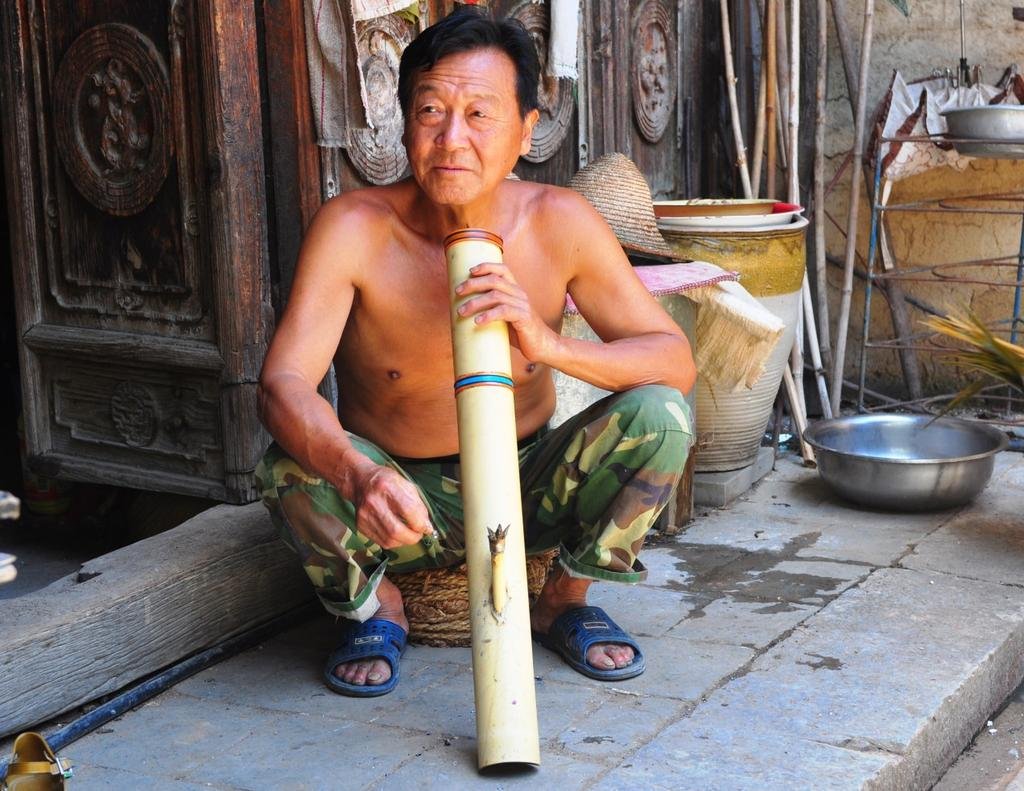
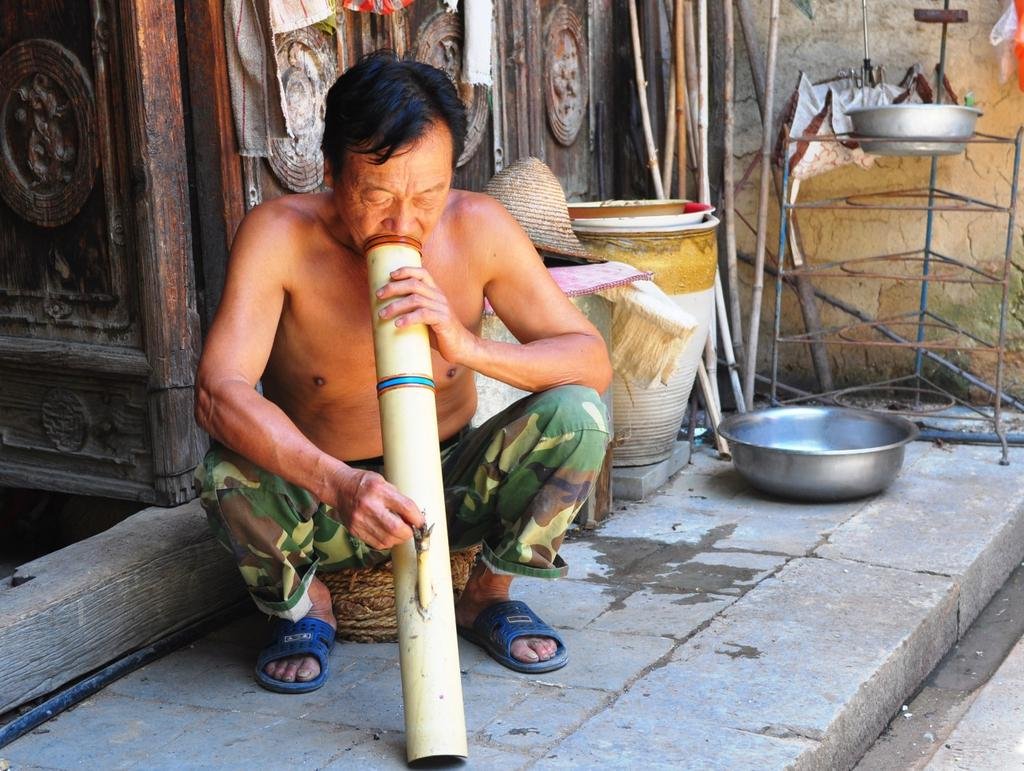
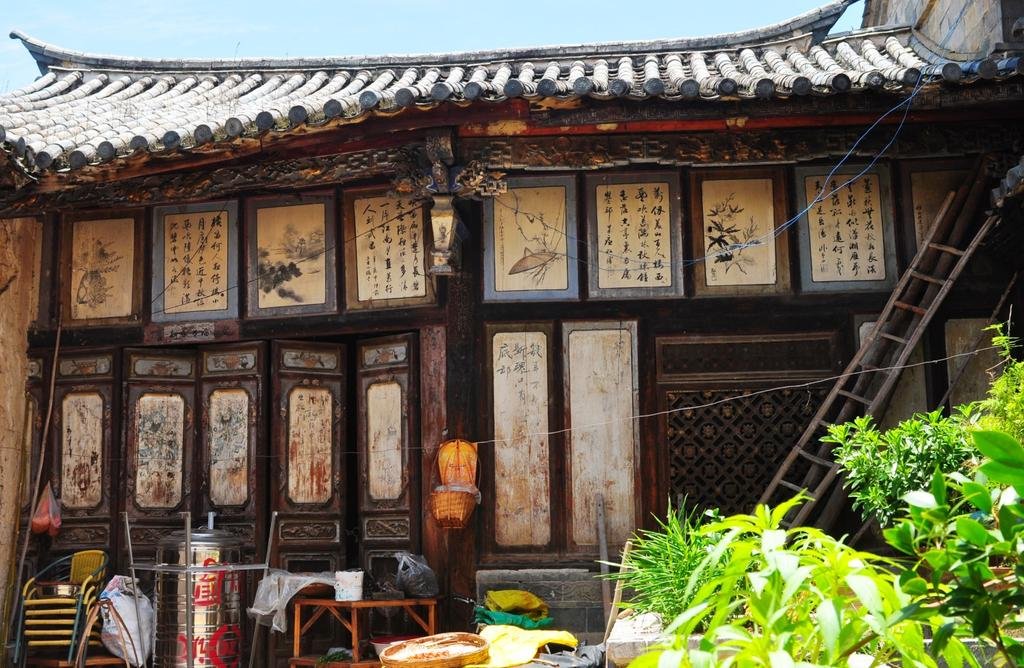
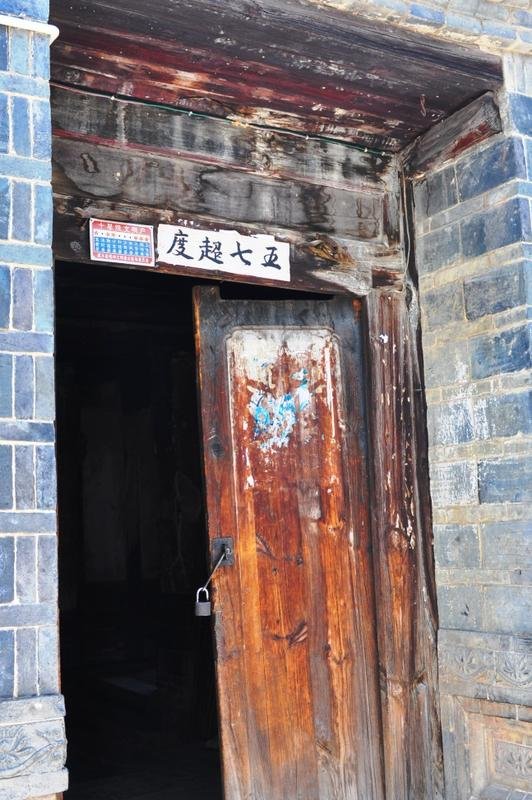
You see these two guys on nearly every residential out side door. They are two famous Chinese warriors from the same tribe, when stuck to your door their strength is supposed to keep all bad things out.
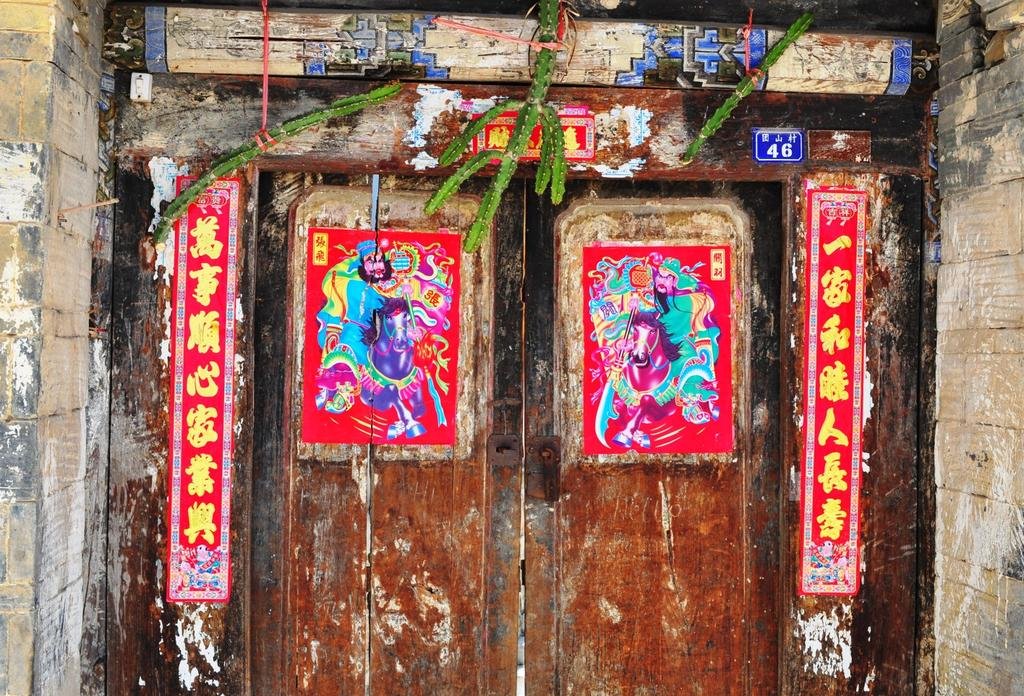
The guy started out wanting 800 Yuan for this, he was talked down to 150 Yuan
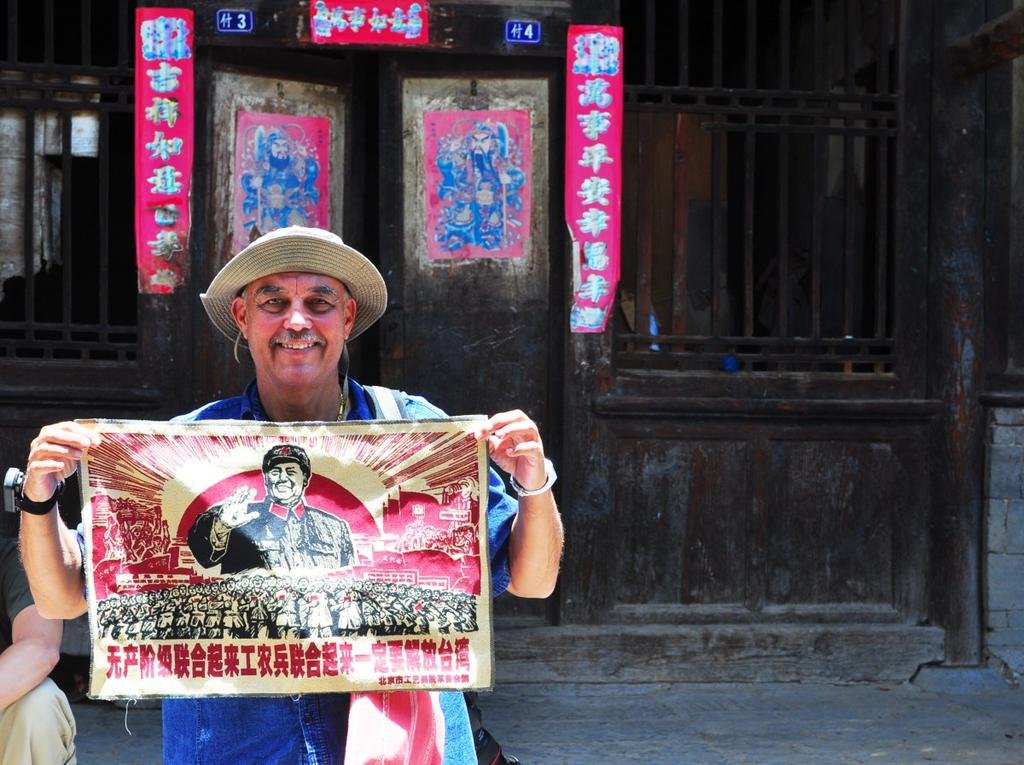
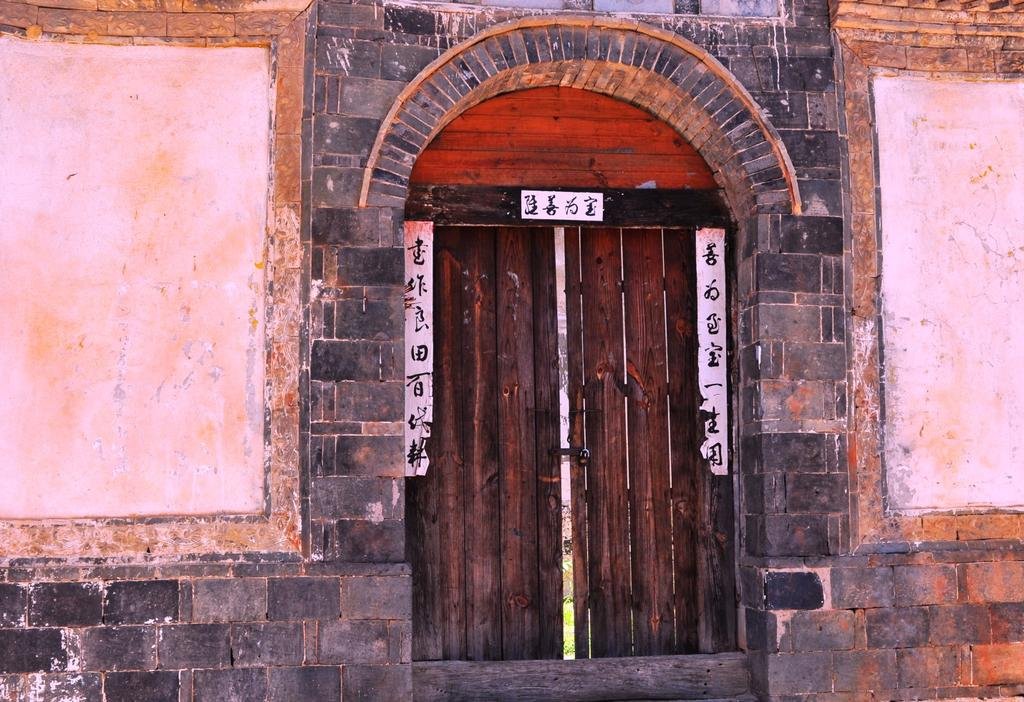
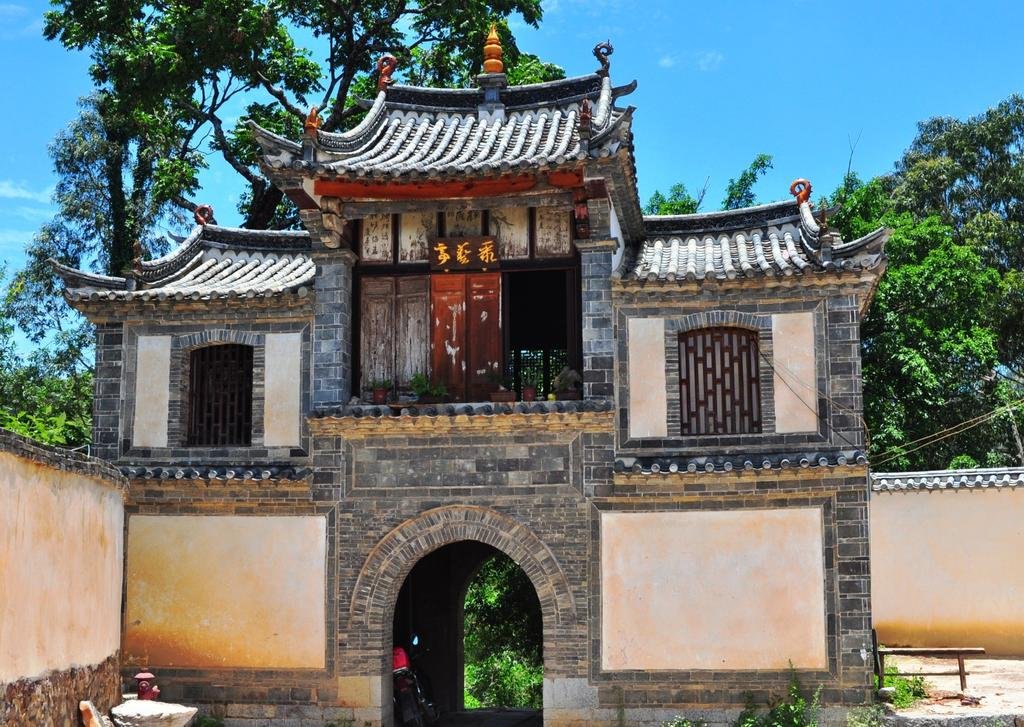




Having a smoke




You see these two guys on nearly every residential out side door. They are two famous Chinese warriors from the same tribe, when stuck to your door their strength is supposed to keep all bad things out.

The guy started out wanting 800 Yuan for this, he was talked down to 150 Yuan



bsacbob
Administrator (Retired)
- Joined
- Jul 1, 2012
- Location
- Chiang Rai
- Bikes
- Honda CRM-AR 250, Honda CRF 250-L, Suzuki V Strom XT 650 Honda XR250 Baja BMW F650GS
Your building up a collection of great pictures on this trip Phil, truly amazing places.
KTMphil
Senior member
Your building up a collection of great pictures on this trip Phil, truly amazing places.
Thanks Bob - Reed hasn't even gone through ANY of his yet, he's dreading it when he gets home, he says it'll take weeks!
KTMphil
Senior member
KTMphil
Senior member
The historic Double Dragon Bridge , Jianshui, Yunnan, China
Built originally around 1711, this is a magnificent bridge even if bridges usually don't get your juices flowing, I can't see why anyone wouldn't find attractive.
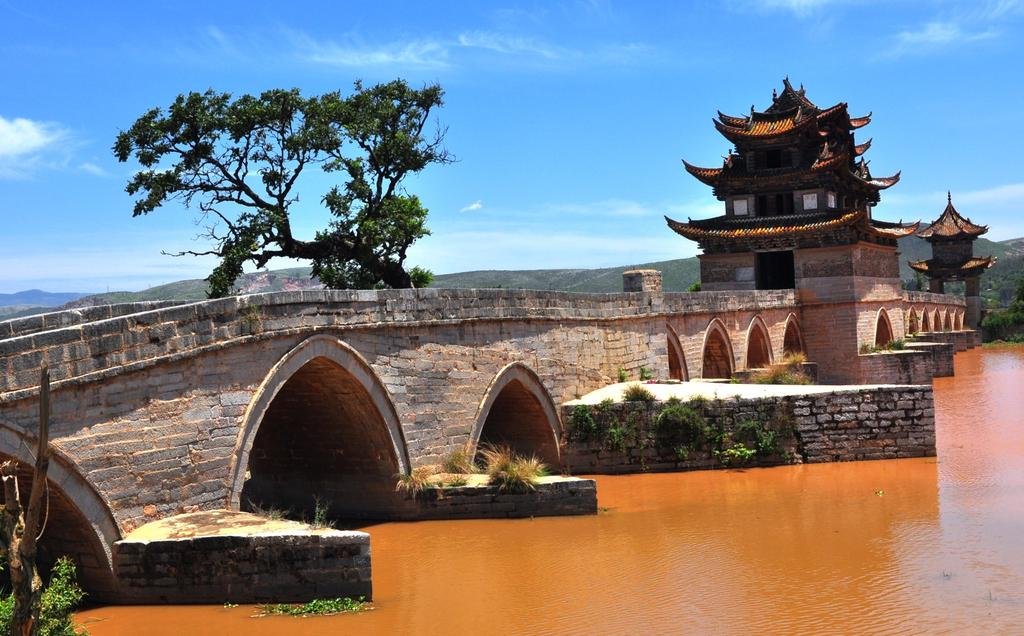
Source: http://www.travelchinaguide.com/cityguides/yunnan/honghe/jianshui-ancient-town.htm
Double Dragon Bridge is located 5 kilometers (3.107 miles) west of Jianshui, at the confluence of Lushui River and Tacun River, which are like double winding dragons crossing the land. It is the biggest and has the most artistic value of the ancient bridges in Yunnan Province. This ancient bridge was built in the years of the Emperor Qianlong (1711-1799), and in the years of the Emperor Guangxu (1871-1908) it was rebuilt and added to by 14 holes, so that it became a 17-hole bridge. In total, the bridge is 153 meters (167 yards) long and 3 meters (3.28 yards) wide, paved with black marble. There are three exquisite and elegant lofts on the bridge. Among them, the middle one is the most majestic and splendid, called the 'Grand View Pavilion of South Yunnan'. Standing on the bridge you get beautiful views, both nearby and in the distance, including endless green fields, majestic blue mountains and clear water.
Source: http://www.visitourchina.com/guide/double_dragon_bridge.htm
The Double Dragon Bridge is located to the west of Jian Shui County, the 17-arch stone bridge spans on the joint of the Nanpan River and the Tachong River, which zigzag like two dragons, therefore it was named Double Dragon Bridge.
The bridge was constructed with only three arches in 1800s during the Qing Dynasty and took many years to complete with only a few sections able to be completed every year. It was made up of ten of thousands of bluestones with 148 meters in length and 3-5 meters in width. On this flat bridge there three unconventional-sculpted and appropriate-arranged traditional Chinese pavilions, from which tens of thousands of acres of farmland can be viewed while the wild southern landscape rises and falls.
The Double Dragon Bridge to this day is still hailed as a masterpiece of traditional Chinese bridge-making and incorporates all the classic components of an ancient Chinese bridge construction. It is evidence of the technological development in ancient China and the fact that it still stands today is a testament to its durability. In 1965 it was listed as one of the existing large-scale ancient stone bridges in China and today it is under the protection of the Yunnan Provincial Heritage Trust.
I'm going to post several photo's I took of the bridge here as I think it's something really special
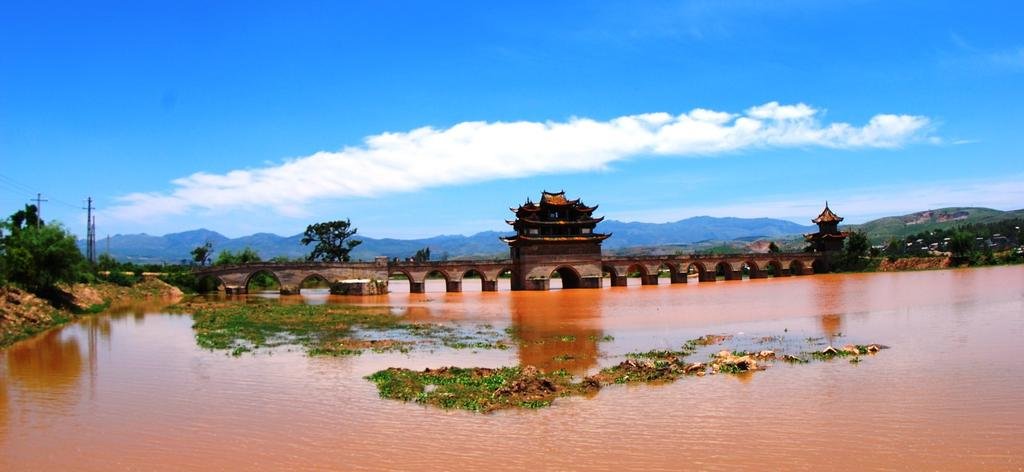
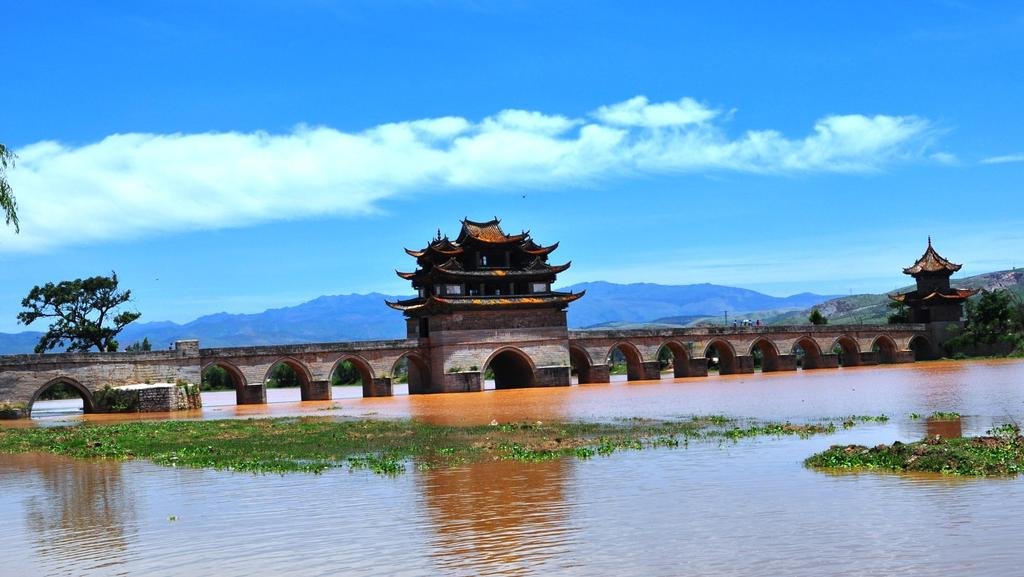
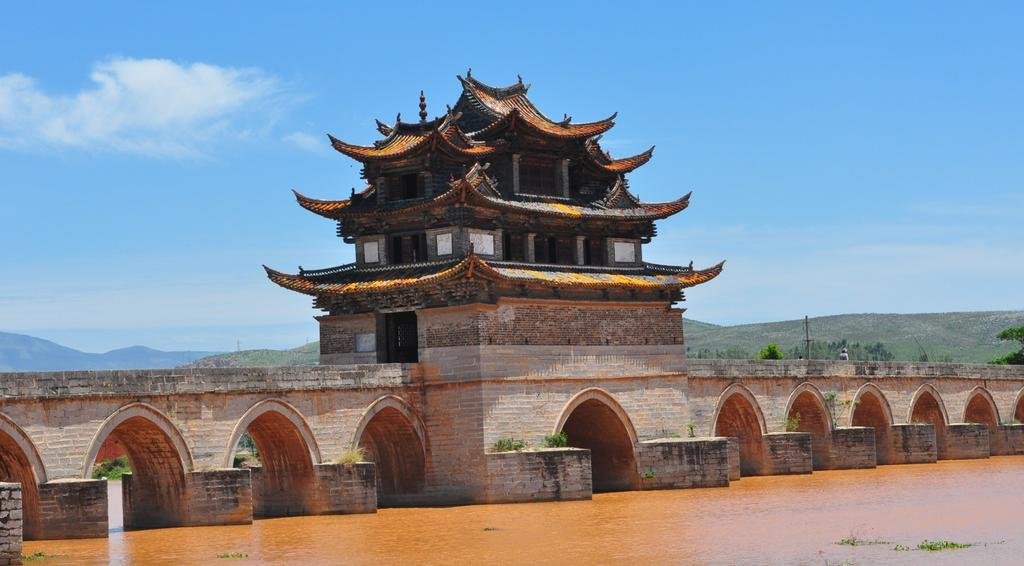
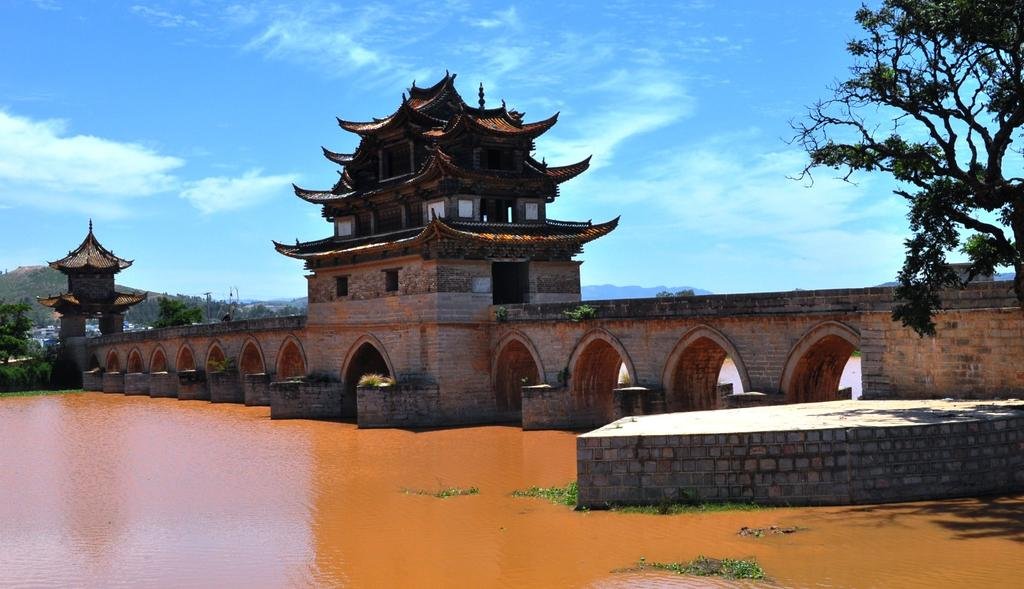
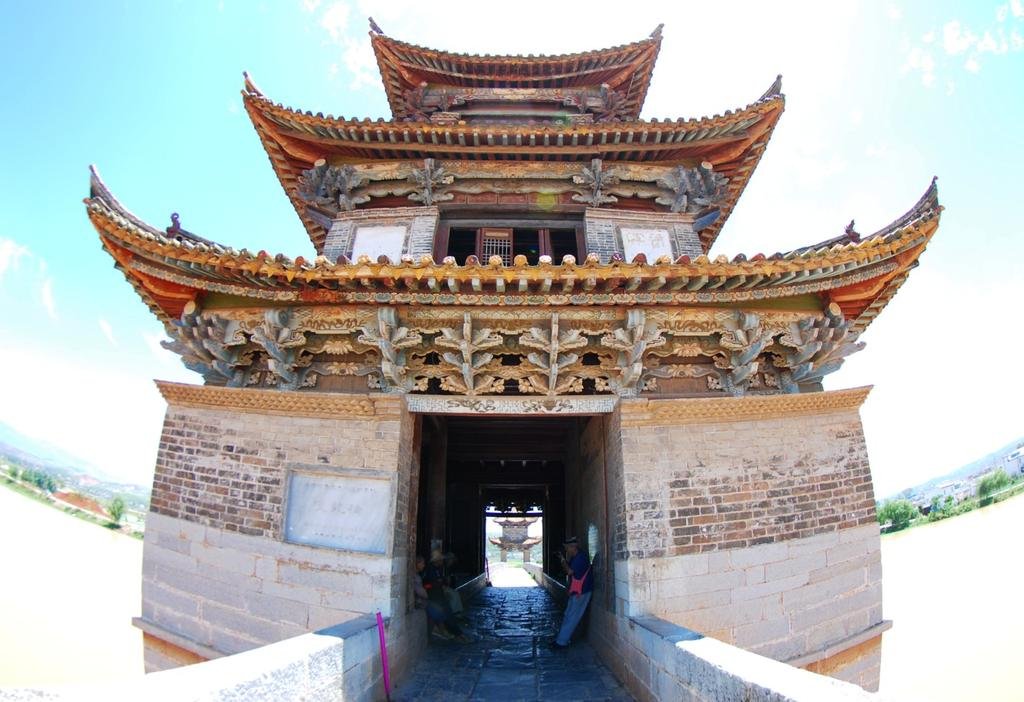
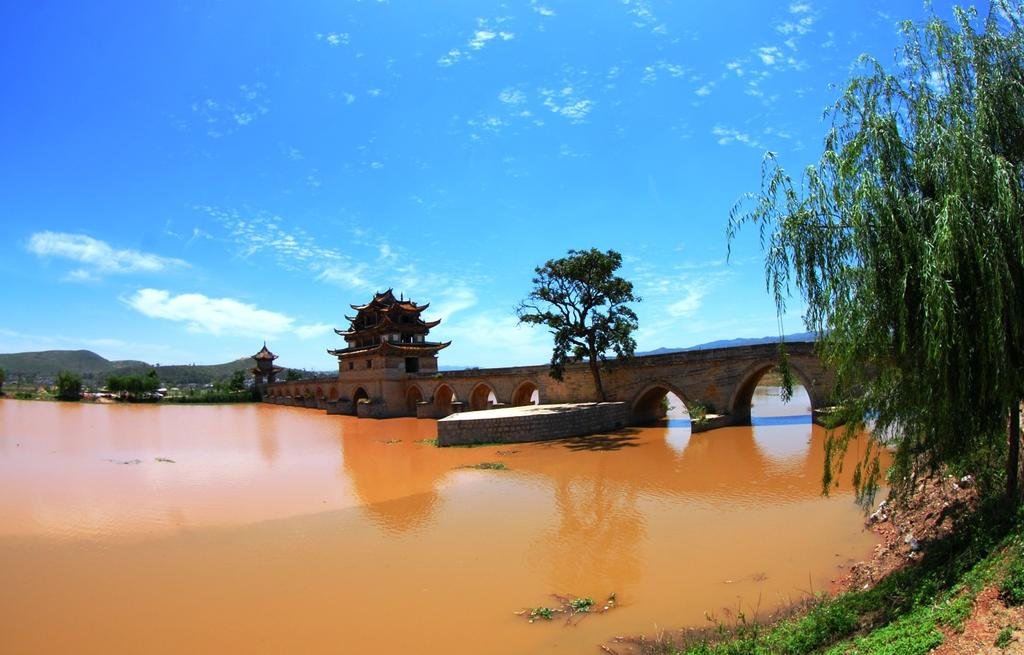
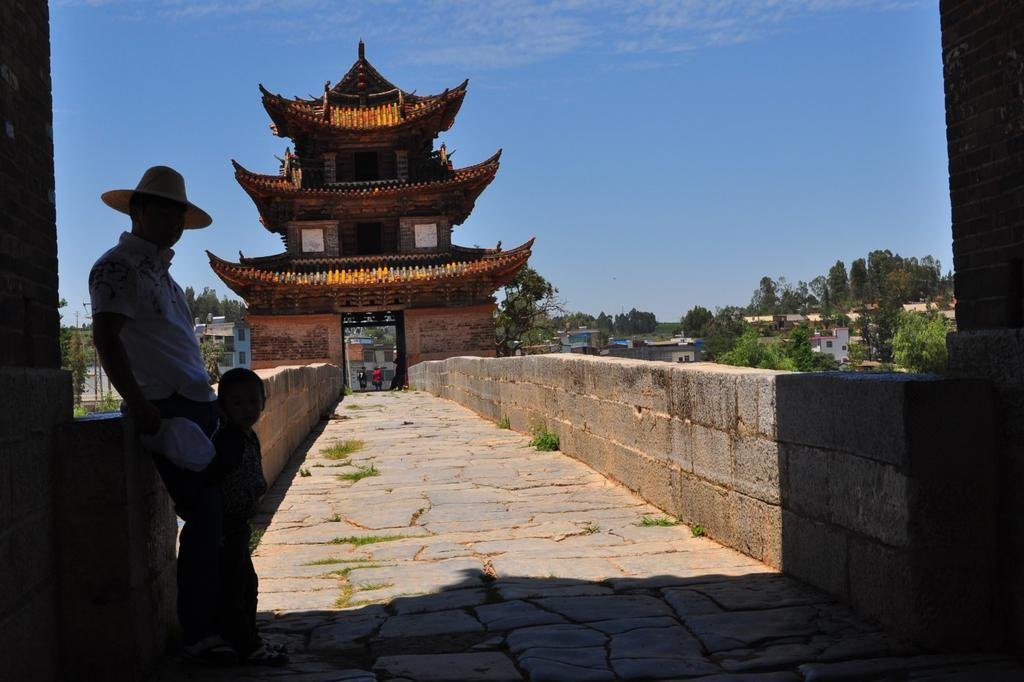
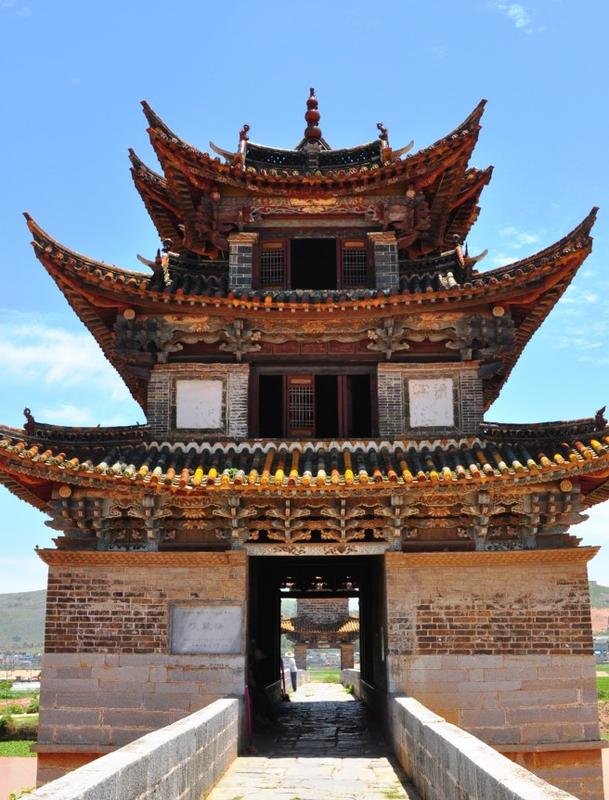
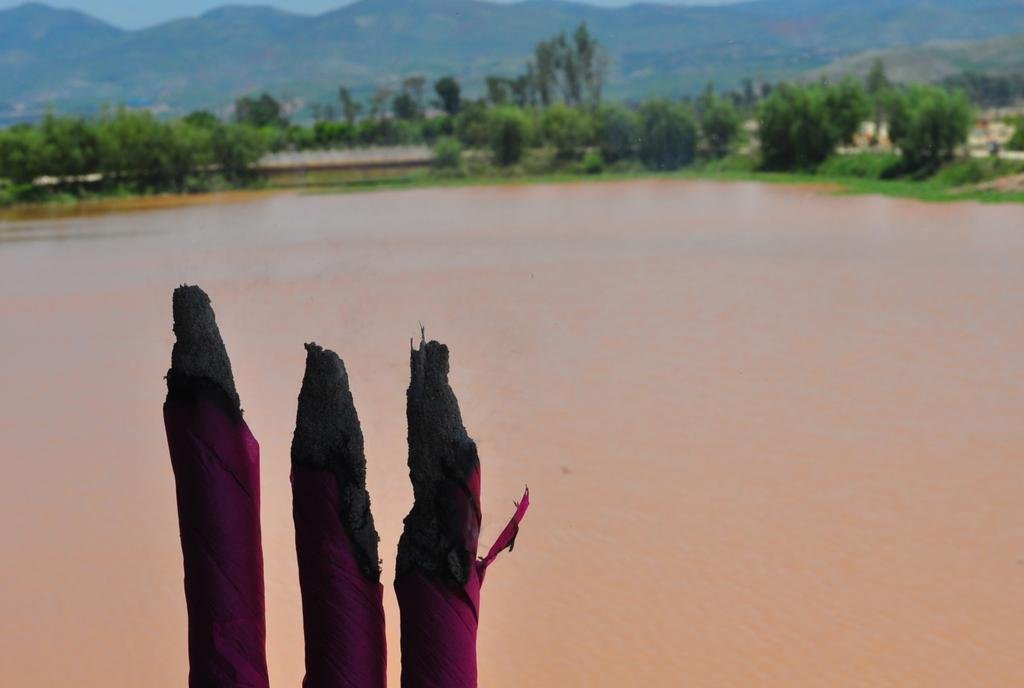
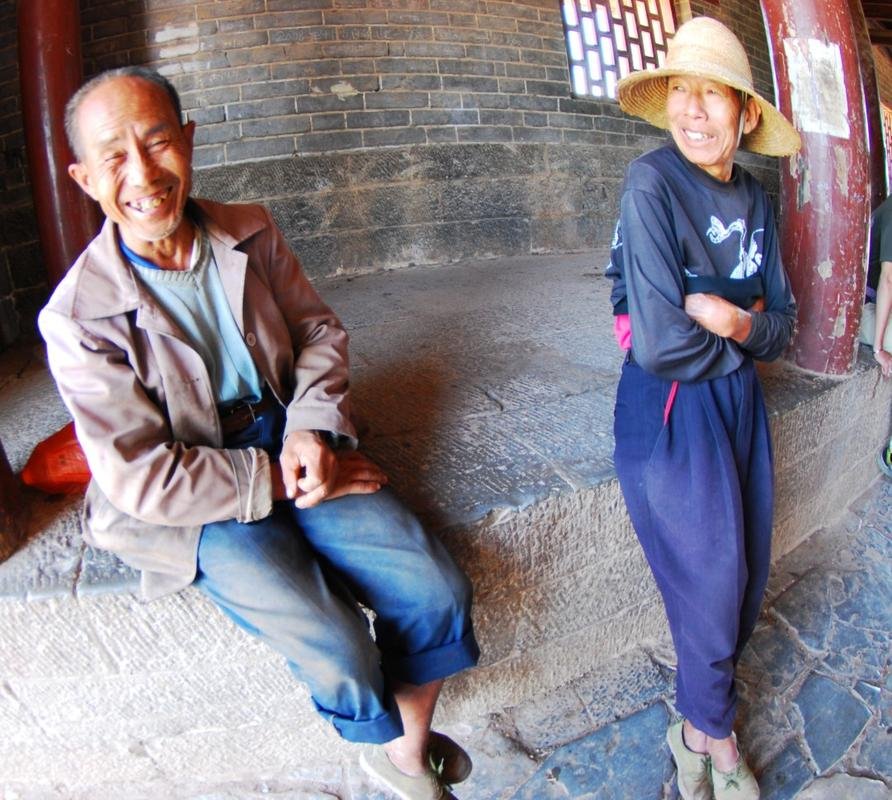
That's all for today - terraced rice fields tomorrow & looks like we should be crossing back into Laos in 2 days.
We tried to see if we could cross back into Laos at the Jiangcheng, China / Muan Ou-Tai, Laos border crossing but it's forbidden as it's not a legal international border crossing.
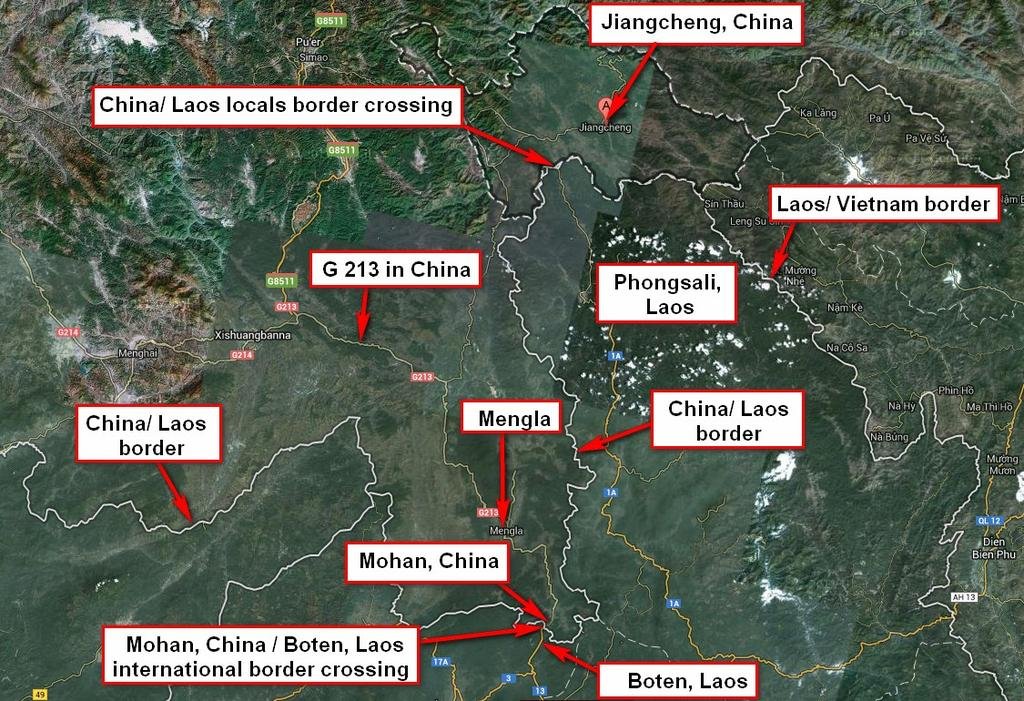
Built originally around 1711, this is a magnificent bridge even if bridges usually don't get your juices flowing, I can't see why anyone wouldn't find attractive.

Source: http://www.travelchinaguide.com/cityguides/yunnan/honghe/jianshui-ancient-town.htm
Double Dragon Bridge is located 5 kilometers (3.107 miles) west of Jianshui, at the confluence of Lushui River and Tacun River, which are like double winding dragons crossing the land. It is the biggest and has the most artistic value of the ancient bridges in Yunnan Province. This ancient bridge was built in the years of the Emperor Qianlong (1711-1799), and in the years of the Emperor Guangxu (1871-1908) it was rebuilt and added to by 14 holes, so that it became a 17-hole bridge. In total, the bridge is 153 meters (167 yards) long and 3 meters (3.28 yards) wide, paved with black marble. There are three exquisite and elegant lofts on the bridge. Among them, the middle one is the most majestic and splendid, called the 'Grand View Pavilion of South Yunnan'. Standing on the bridge you get beautiful views, both nearby and in the distance, including endless green fields, majestic blue mountains and clear water.
Source: http://www.visitourchina.com/guide/double_dragon_bridge.htm
The Double Dragon Bridge is located to the west of Jian Shui County, the 17-arch stone bridge spans on the joint of the Nanpan River and the Tachong River, which zigzag like two dragons, therefore it was named Double Dragon Bridge.
The bridge was constructed with only three arches in 1800s during the Qing Dynasty and took many years to complete with only a few sections able to be completed every year. It was made up of ten of thousands of bluestones with 148 meters in length and 3-5 meters in width. On this flat bridge there three unconventional-sculpted and appropriate-arranged traditional Chinese pavilions, from which tens of thousands of acres of farmland can be viewed while the wild southern landscape rises and falls.
The Double Dragon Bridge to this day is still hailed as a masterpiece of traditional Chinese bridge-making and incorporates all the classic components of an ancient Chinese bridge construction. It is evidence of the technological development in ancient China and the fact that it still stands today is a testament to its durability. In 1965 it was listed as one of the existing large-scale ancient stone bridges in China and today it is under the protection of the Yunnan Provincial Heritage Trust.
I'm going to post several photo's I took of the bridge here as I think it's something really special










That's all for today - terraced rice fields tomorrow & looks like we should be crossing back into Laos in 2 days.
We tried to see if we could cross back into Laos at the Jiangcheng, China / Muan Ou-Tai, Laos border crossing but it's forbidden as it's not a legal international border crossing.

KTMphil
Senior member
David Bailey knows we're headed back south towards Laos & Thailand, he just sent me the latest weather satellite image, looks like we might be heading straight into some "precipitation" headed this way as the SW monsoon steps up into its full force (the clouds to the west of Myanmar are headed NE full of rain).
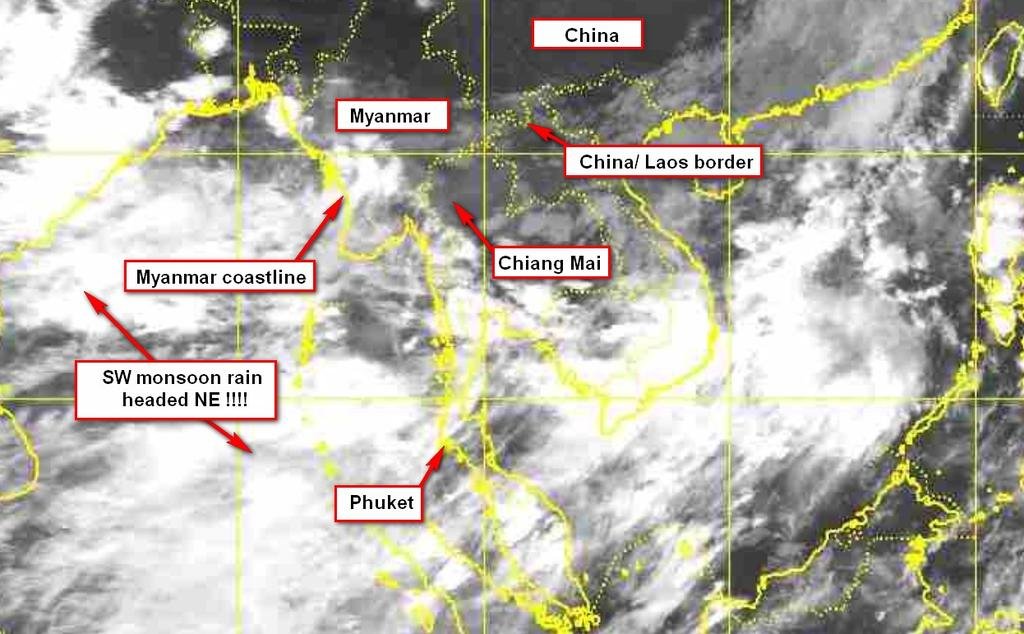

KTMphil
Senior member
Phil, if you guys need a place to crash after the CK ferry/bridge, most welcome!
Marcel - i've seen that beautiful building you've created, we will keep that in mind - thank you!
KTMphil
Senior member
| Thread starter | Similar threads | Forum | Replies | Date |
|---|---|---|---|---|
| R | Tours all over the road | China Ride Reports | 0 | |
|
|
A tour through China with no guide | China Ride Reports | 160 | |
|
|
Thailand to Shangri-La bike tour 7-21 April 2012 | China Ride Reports | 1 |


